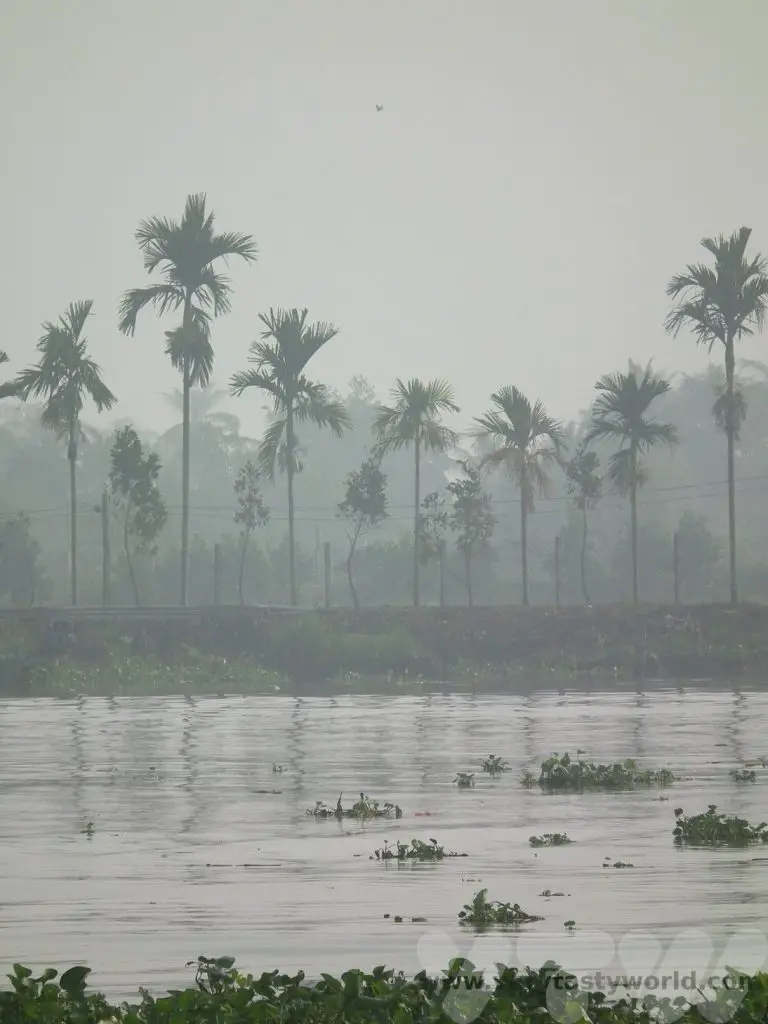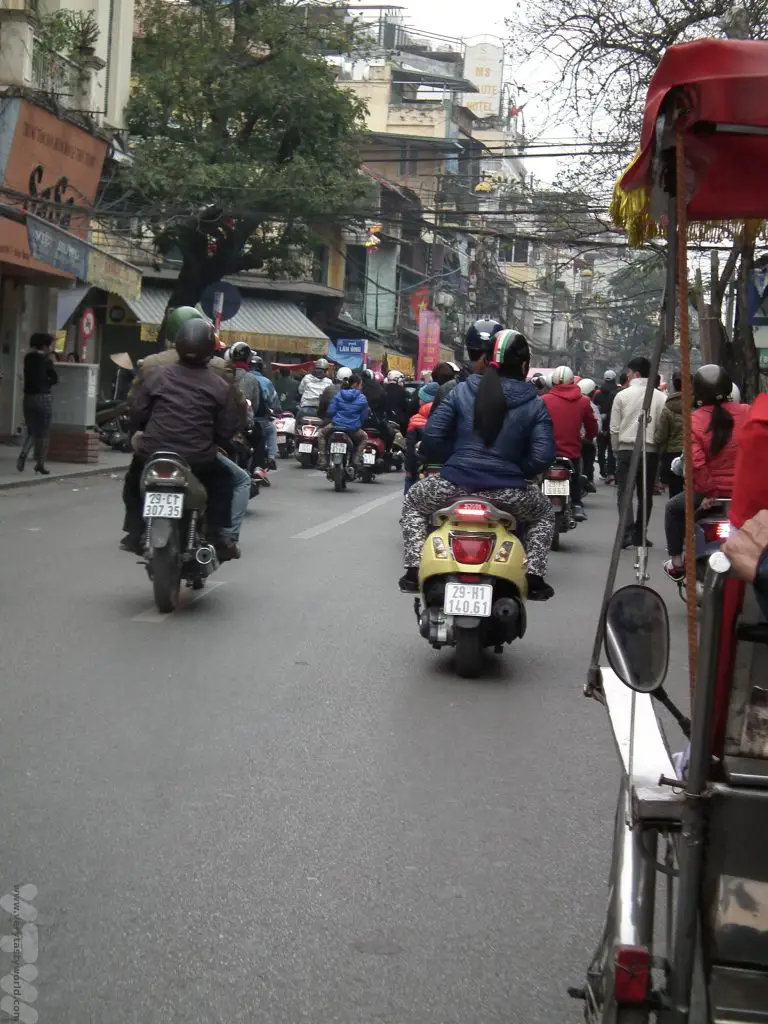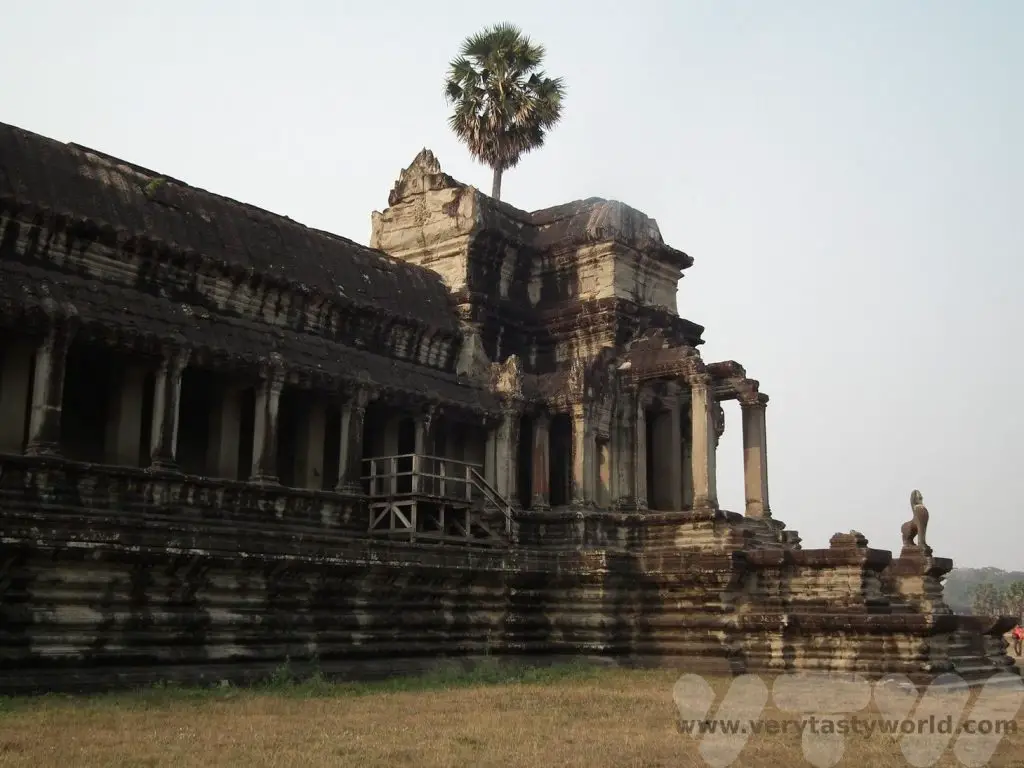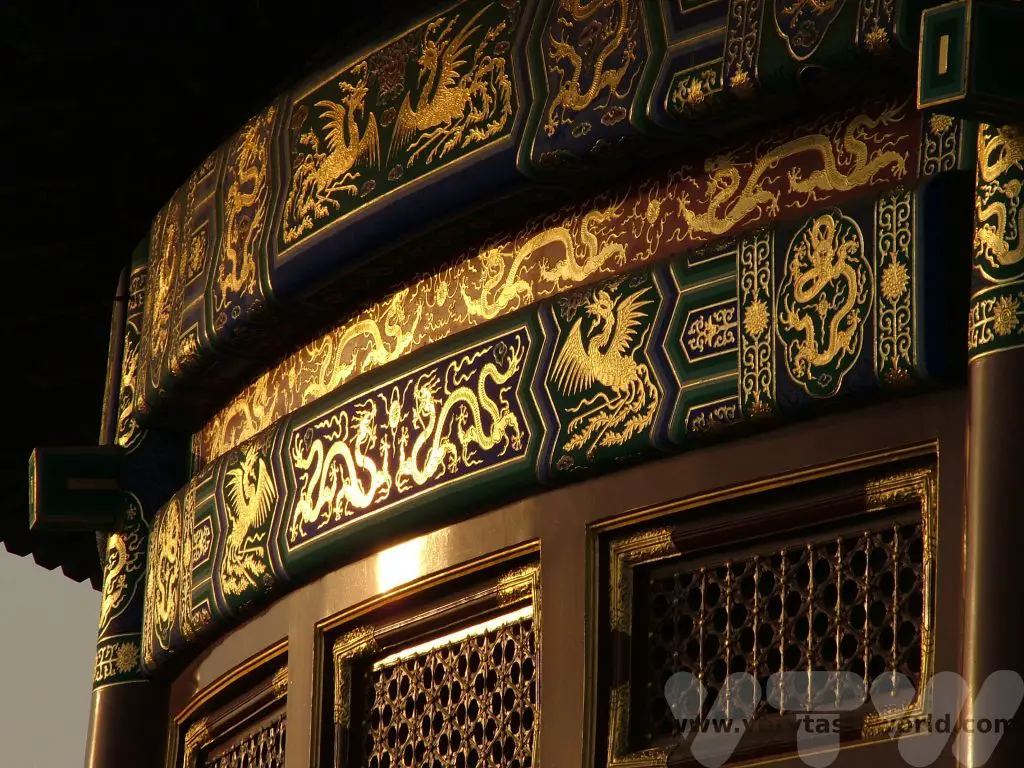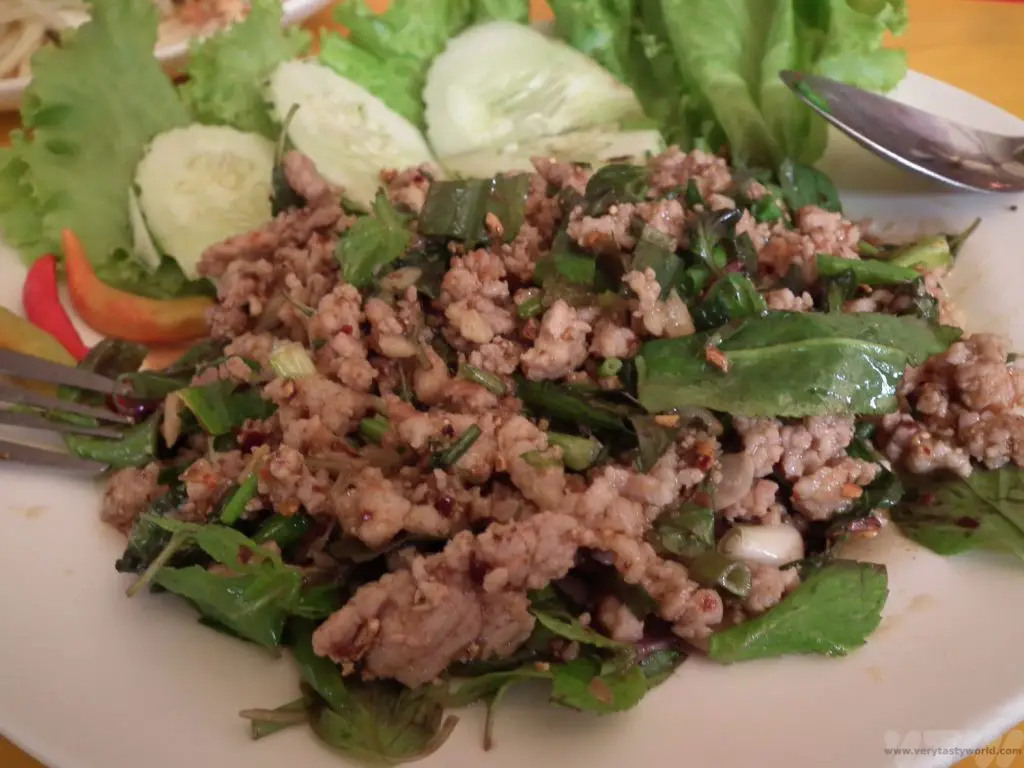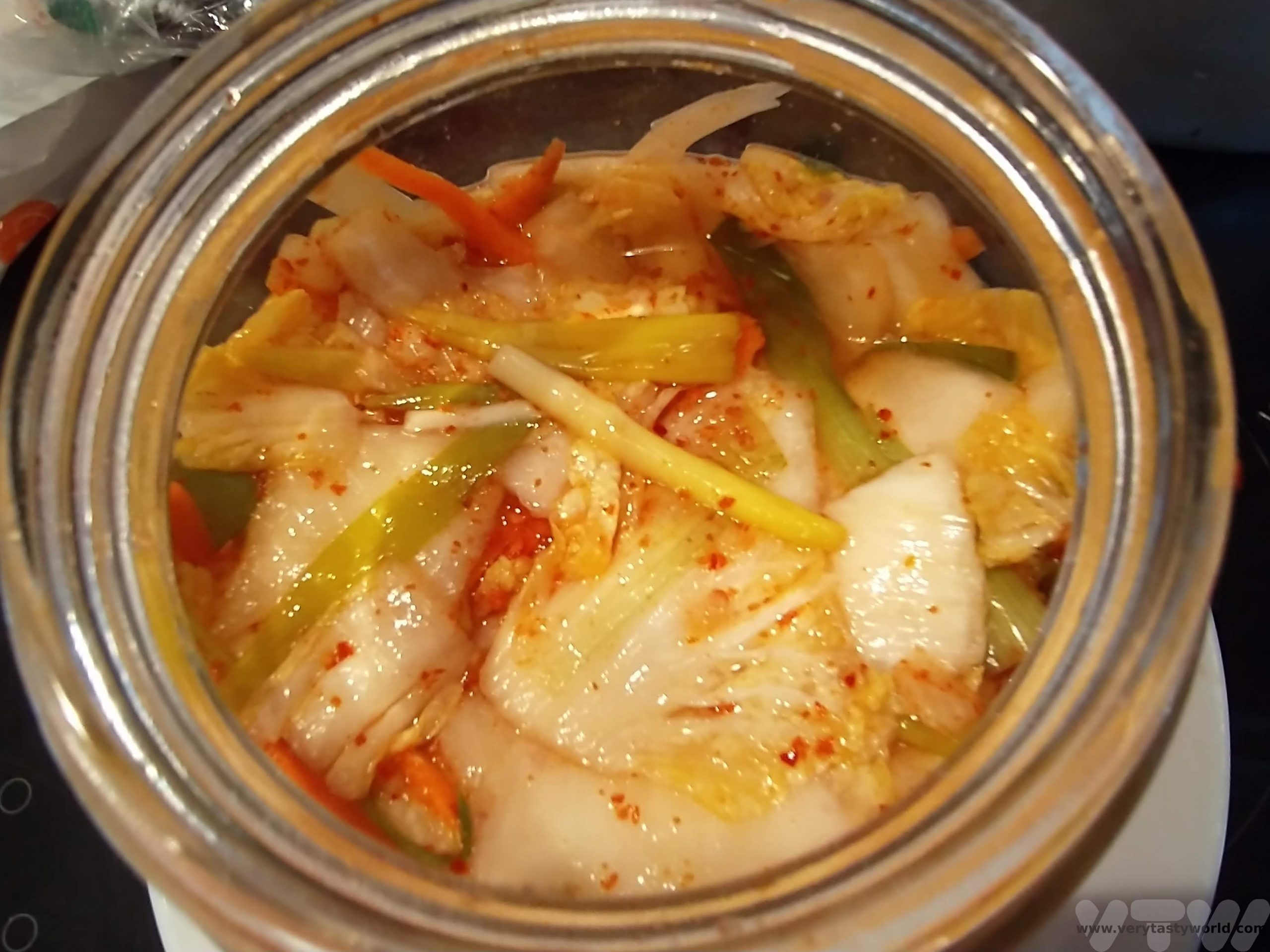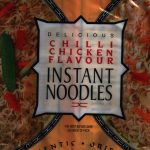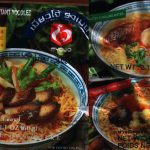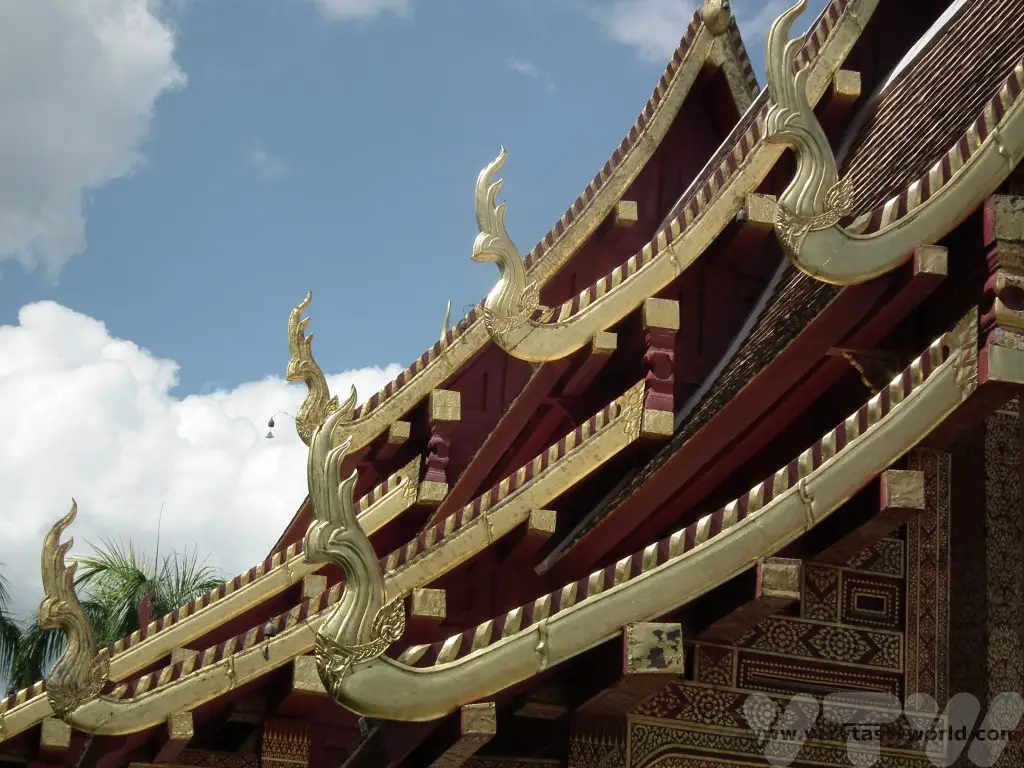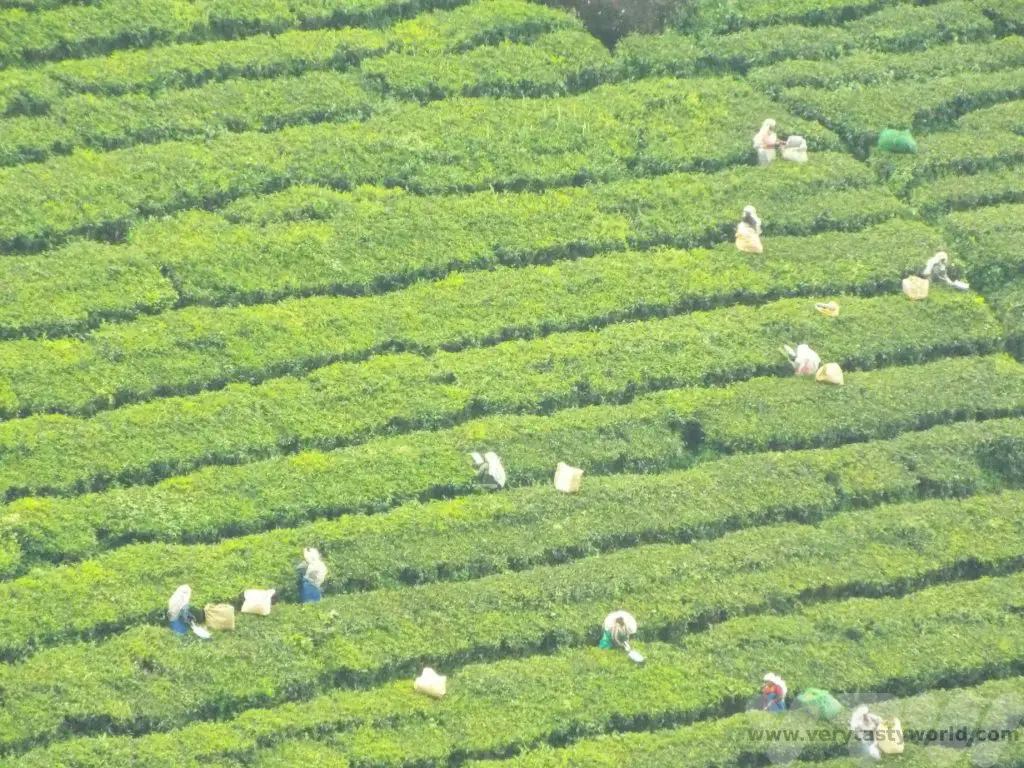A Chiang Rai Temple and A Country Retreat
Sometimes it’s possible to visit a place without actually going to the place itself. If that makes sense? This happened on our trip to northern Thailand. We had spent some time in Bangkok and Chiang Mai before heading towards the city of Chiang Rai. But somehow we didn’t quite manage to visit the city itself. Having driven up from Chiang Mai, our first stop was a famous Chiang Rai temple – The White Temple – followed by a lovely couple of days exploring the local countryside.
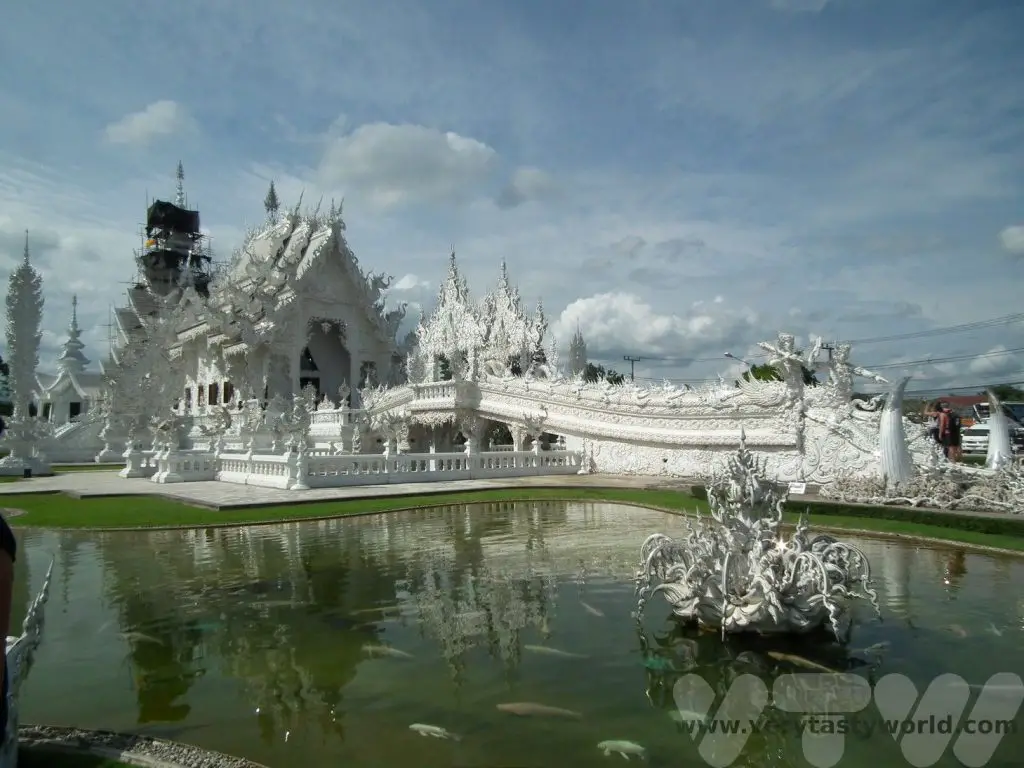
Chiang Rai Temple – The White Temple
It’s located about 13 kilometres south of Chiang Rai city and we can honestly say it’s one of the most bizarre buildings we have ever visited.
The temple itself was conceived and designed by Thai artist Chalermchai Kositpipat and built on an enormous scale, designed in the style of a Buddhist temple. Kositpipat also supervised the construction of this remarkable building. Although it bears a strong resemblance to ancient temples of the region, it is a modern structure which opened in 1997.
The building also has ornate naga serpents, supernatural creatures that are part human, part snake, which typically decorate Buddhist temples and are revered throughout the region.

You cross the Bridge of the Cycle of Rebirth…
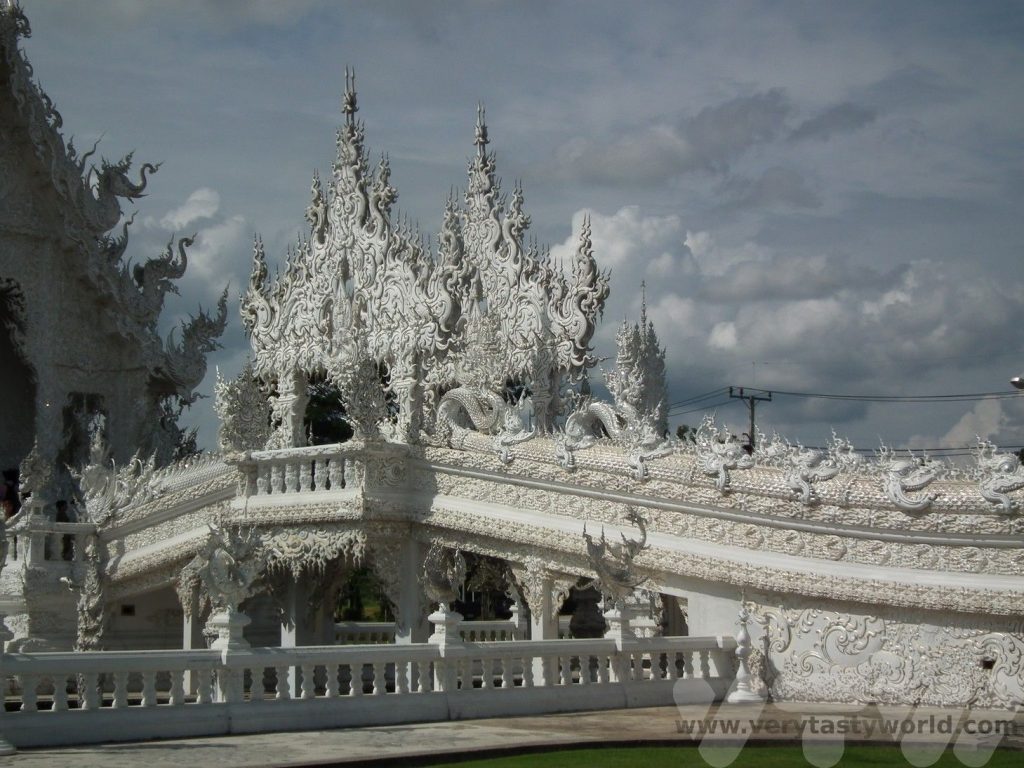
…passing by the fearsome guardians…
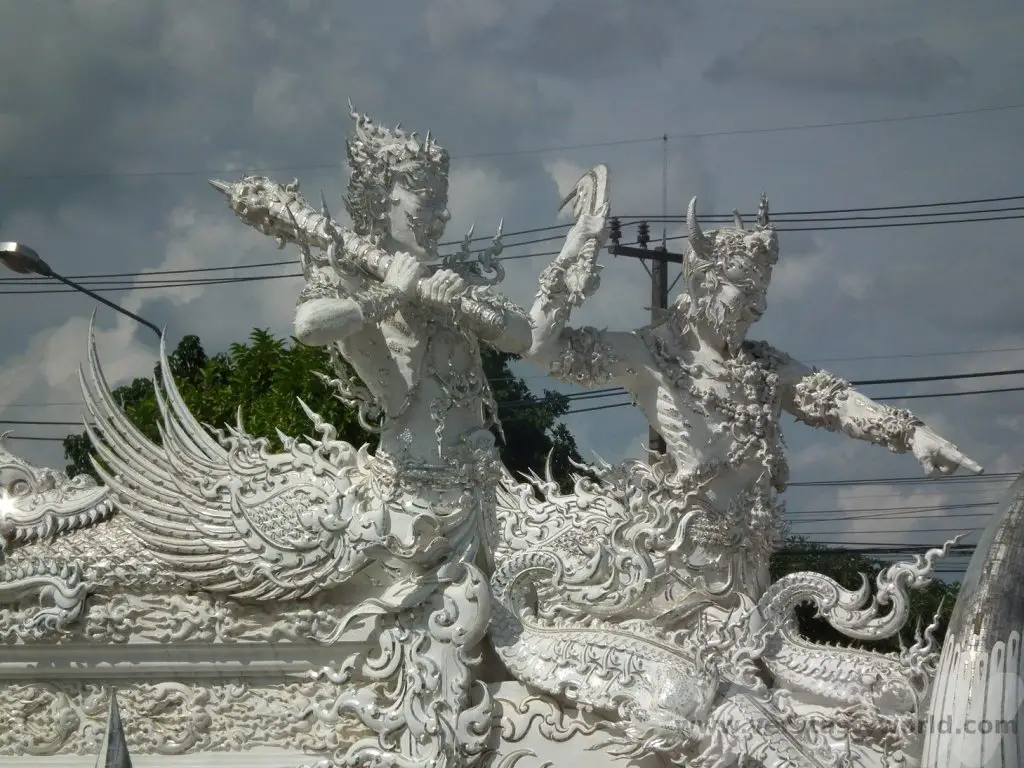
…over the lake of the damned souls…
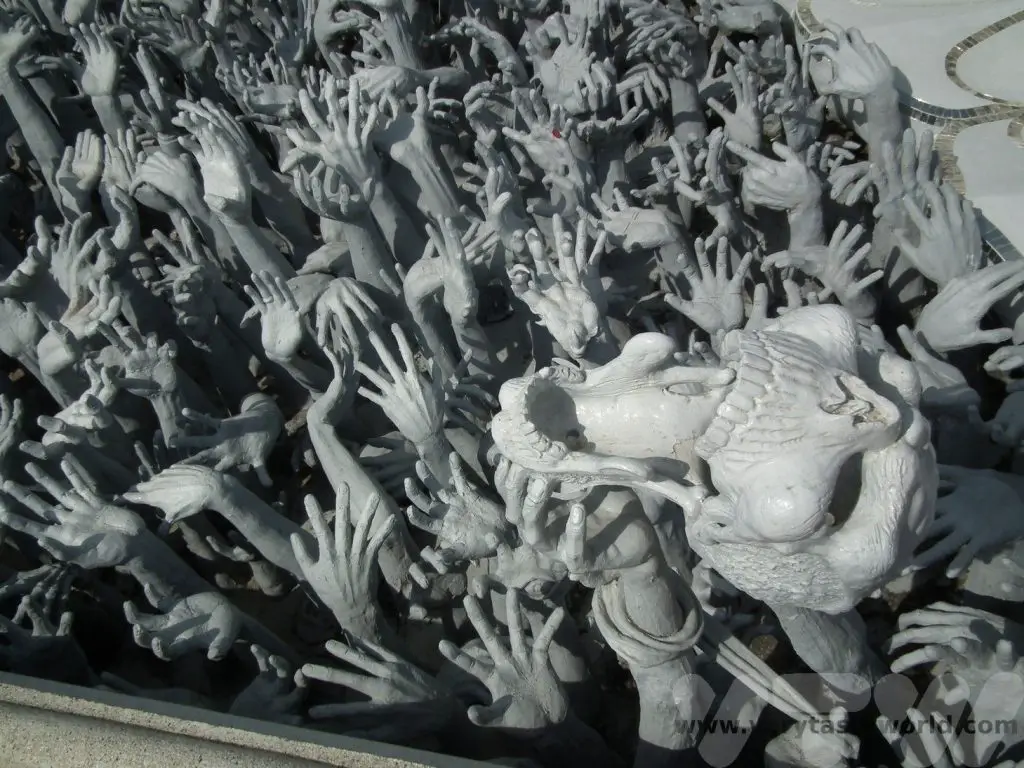
…in order to reach heaven.
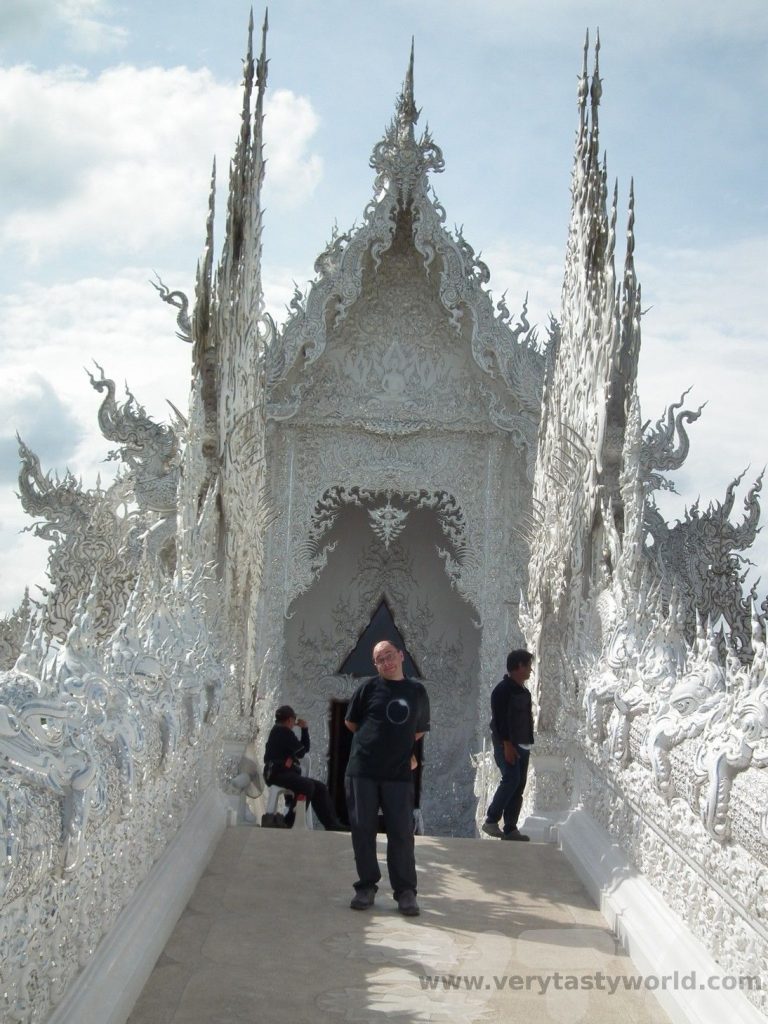
It is possible to go inside the temple, known as the ubosot, but, sadly, you are not allowed to take photos in there. We absolutely respected this, but it’s a shame because it contains the most astonishing bright and colourful murals. They combine Buddhist imagery with all sorts of modern historical and cultural icons – everything from Spider-man to Doraemon and Hello Kitty! The theme that pervades the White Temple is the conflict between good and evil in the world. You could spend hours enjoying the details, spotting all sorts of characters.
Chiang Rai’s White Temple Grounds
The temple itself was designed to be white to represent purity; a conscious choice to contrast with the temples throughout Thailand which are typically decorated in gold. Kositpipat apparently considered gold to be a colour for people who coveted evil thoughts and deeds. So it is the bathrooms that are decorated in a gorgeous gleaming gold. Possibly the most ostentatious toilets in the world!
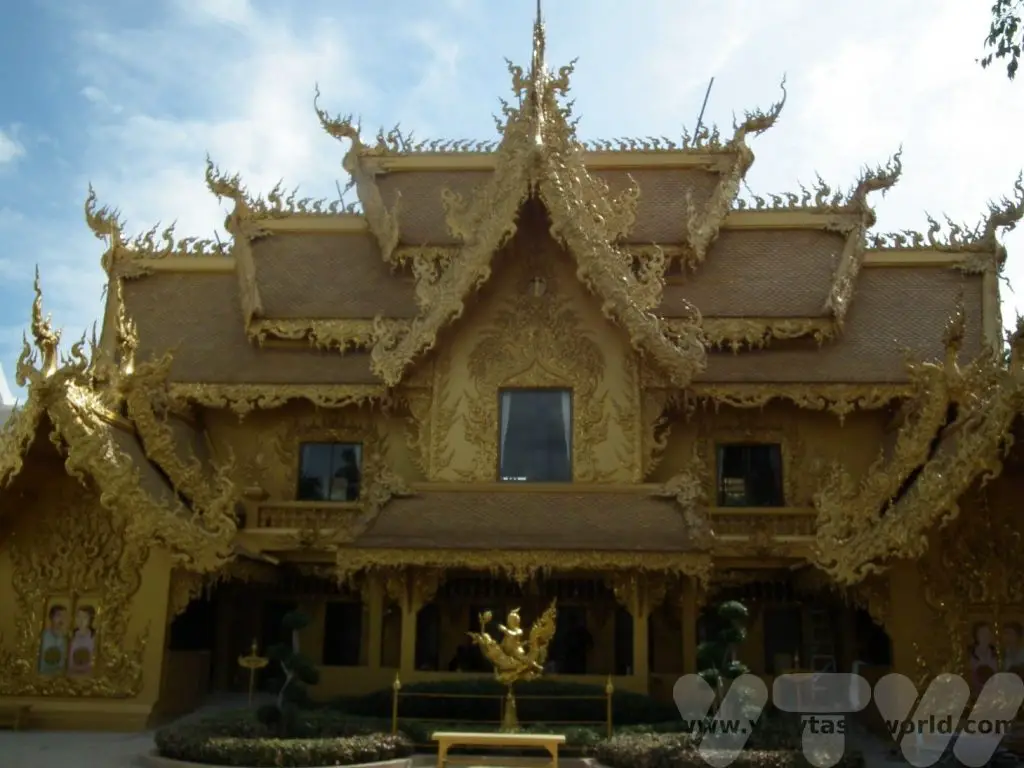
Even the traffic cones and trees are bizarrely decorated!
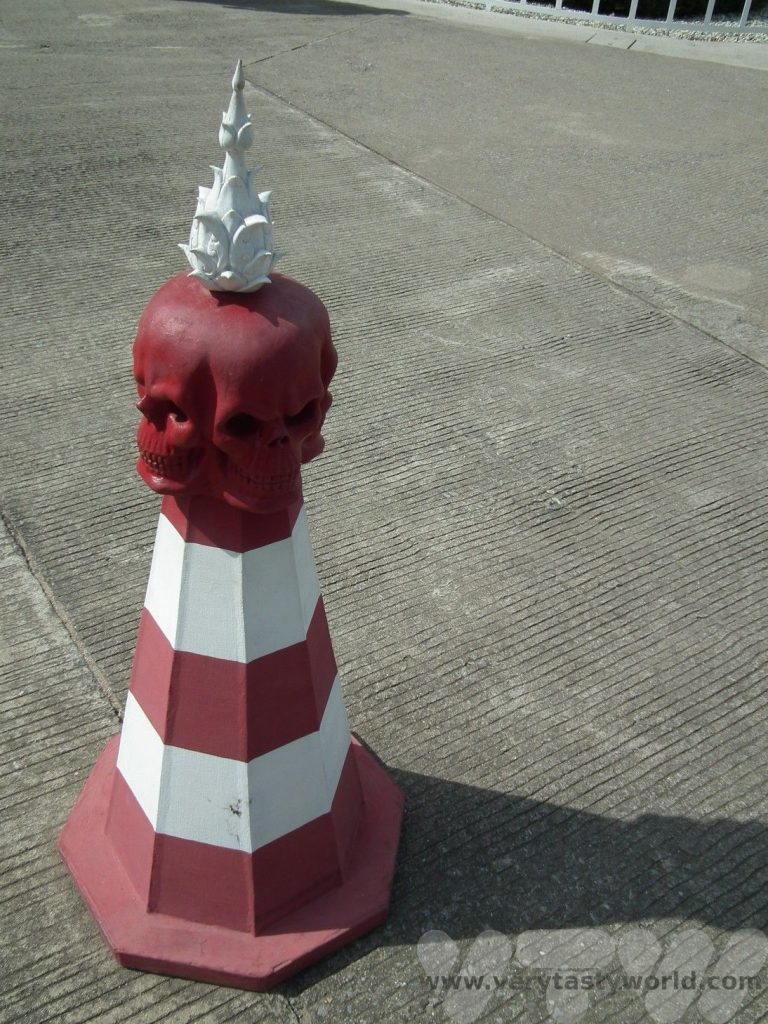
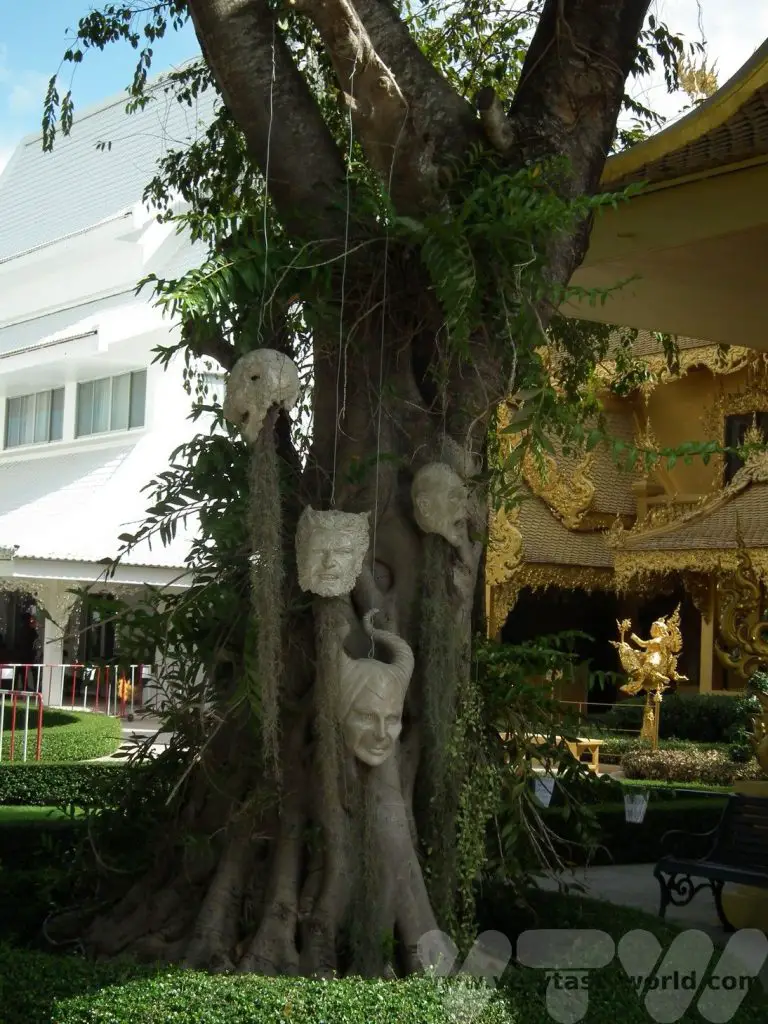
Kositpipat didn’t want money to be a consideration for visitors, so when we visited entrance was free. However, these days there is a nominal charge that is used towards maintaining the temple and gardens. Which is fair enough.
A Rural Retreat
Having visited the Chiang Rai temple we then headed out towards the hills.
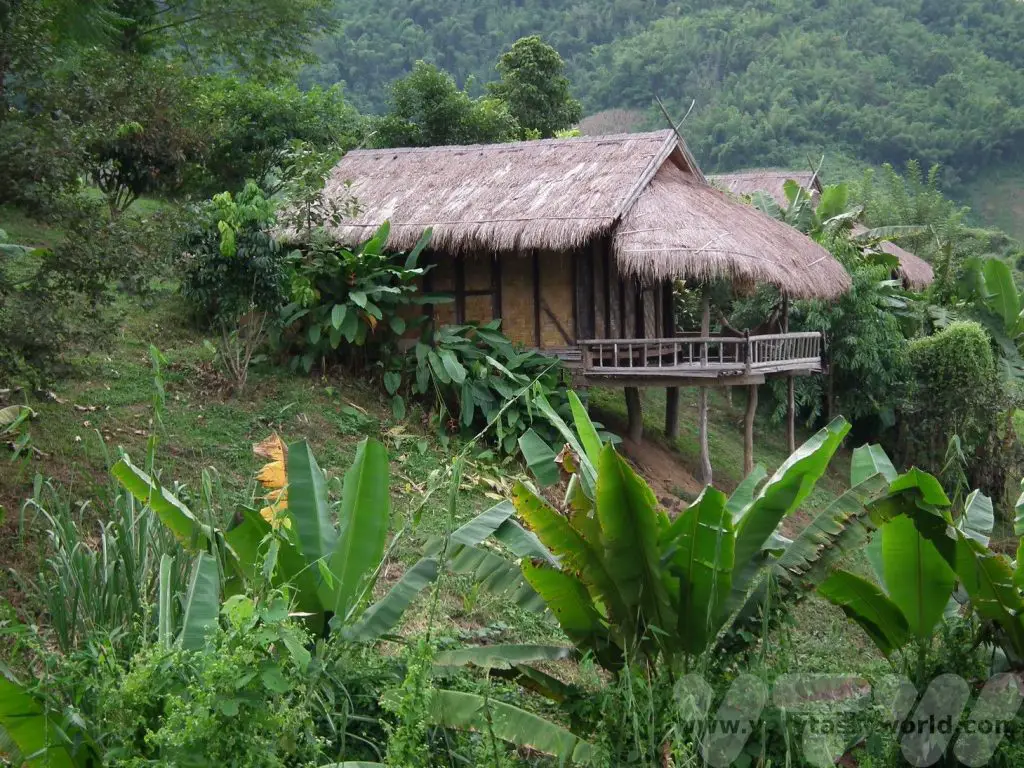
We were staying at the delightful Bamboo Nest, a rural retreat in the countryside. When you hear the phrase ‘rural retreat’ it often recalls images of luxury spas in pristine grounds but this was the opposite – a retreat much more suited to our tastes.
We stayed in a simple bamboo hut with thatched roof, which had no electricity and a wonderful view.
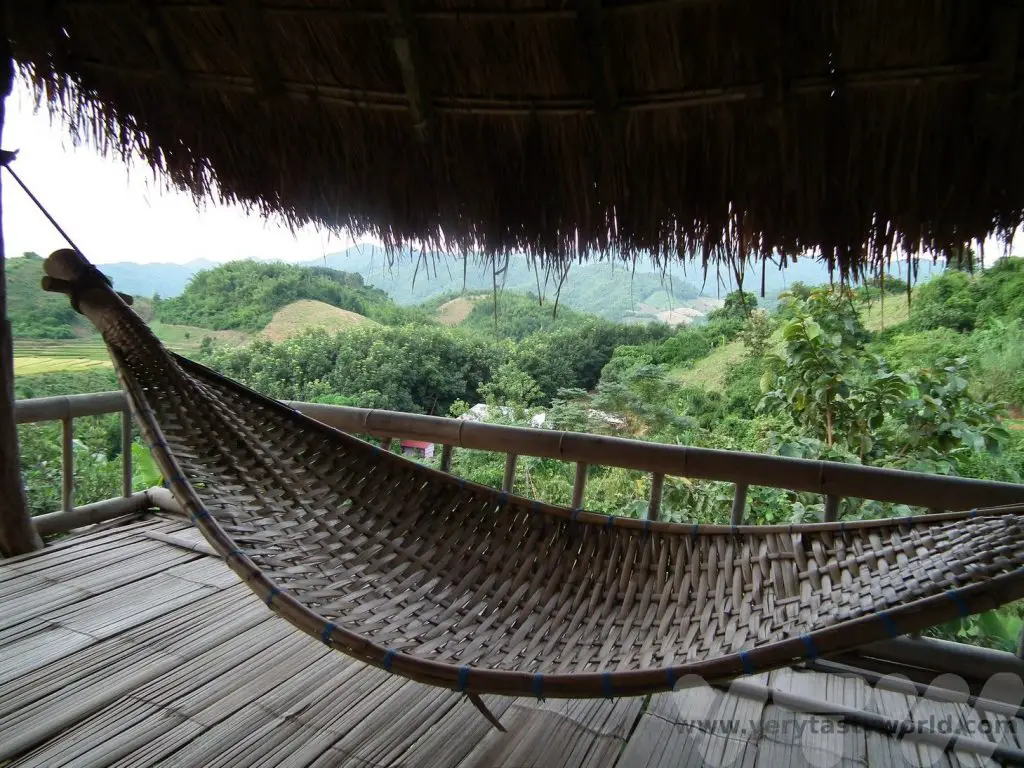
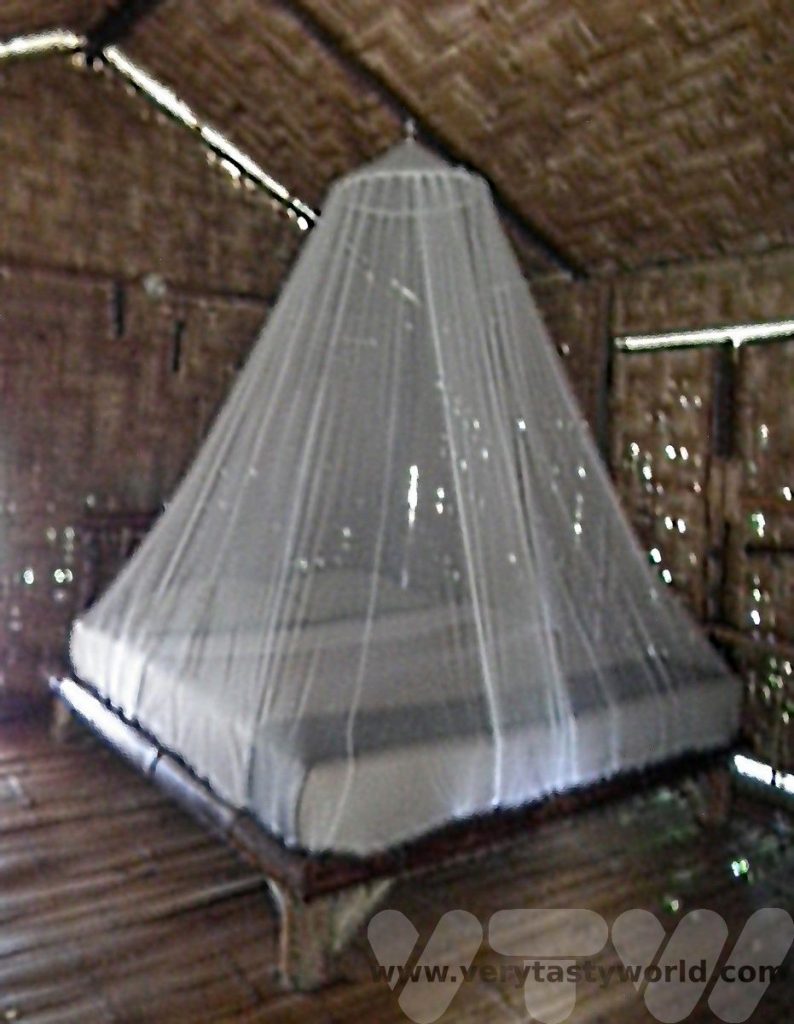
Dining was in a communal area where we enjoyed freshly cooked local meals with other guests. There was electricity available via a generator in this area which enabled the charging of phones and cameras and it also powered a fridge which conveniently contained cold soft drinks and beer, which you could purchase on an honesty basis. It was incredibly quiet and peaceful and a complete contrast to the hubbub of Thailand’s cities.
The Bamboo Nest team arranged our transportation to this remote site and will organise pickups if needed. Just get in touch directly to make a booking. We met Nok outside the White Temple and climbed into her 4WD, a vehicle that was most definitely essential for the area which we discovered as the car climbed higher and higher up the mountainside. The final leg of the journey was incredibly steep, muddy and occasionally slippery – a challenge even for a sturdy 4WD.
A Hike to the Hill Tribes
The main purpose of our visit was to enjoy some hiking in the area and to meet the local hill tribes. The hosts at Bamboo Nest can arrange a variety of excursions, either on a guided or self-guided basis, and we enjoyed a lovely long walk with Noi. It was initially a little disconcerting when he picked up a machete just before we headed out, but the walk was to take us through the mountainside forest and at times we would need to cut our own path. The treks offered are truly off the beaten track.
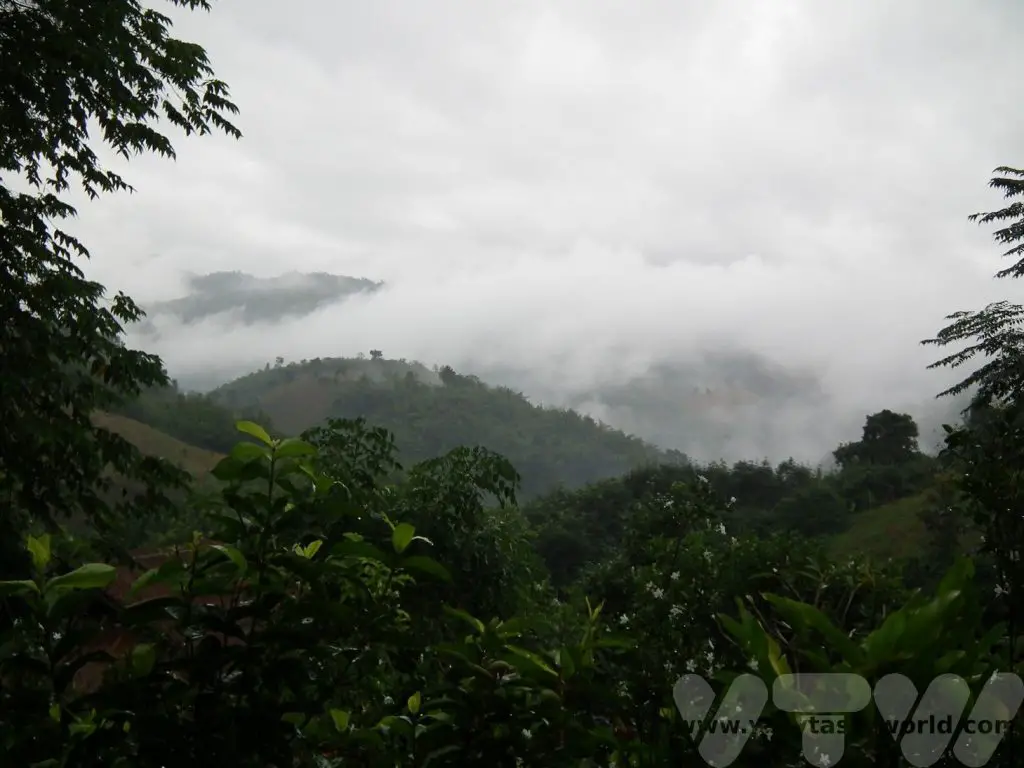
Thailand is hot and humid and occasionally rainy, so we had some slippery moments, particularly descending some of the steeper hills. It’s worth making sure you have good shoes and waterproofs as well as a change of clothing, just in case it rains and gets muddy.
The Chiang Rai area is home to a number of hill tribes, including the Akha and Lahu peoples. Hill tribes are ethnic minority groups who have settled in the region, living in a plethora of villages that are scattered across the mountains. The communities can be quite large or may comprise just a few families living together. Some of the villages are set up to receive tourists but Noi and Nok know the local people well, so we were able to visit a non-tourist village which gave us a much more personal and insightful experience.
After a couple of hours hiking we arrived at one of the villages of the Lahu tribe. The homes are constructed on stilts and have adjacent buildings where the farm animals reside.
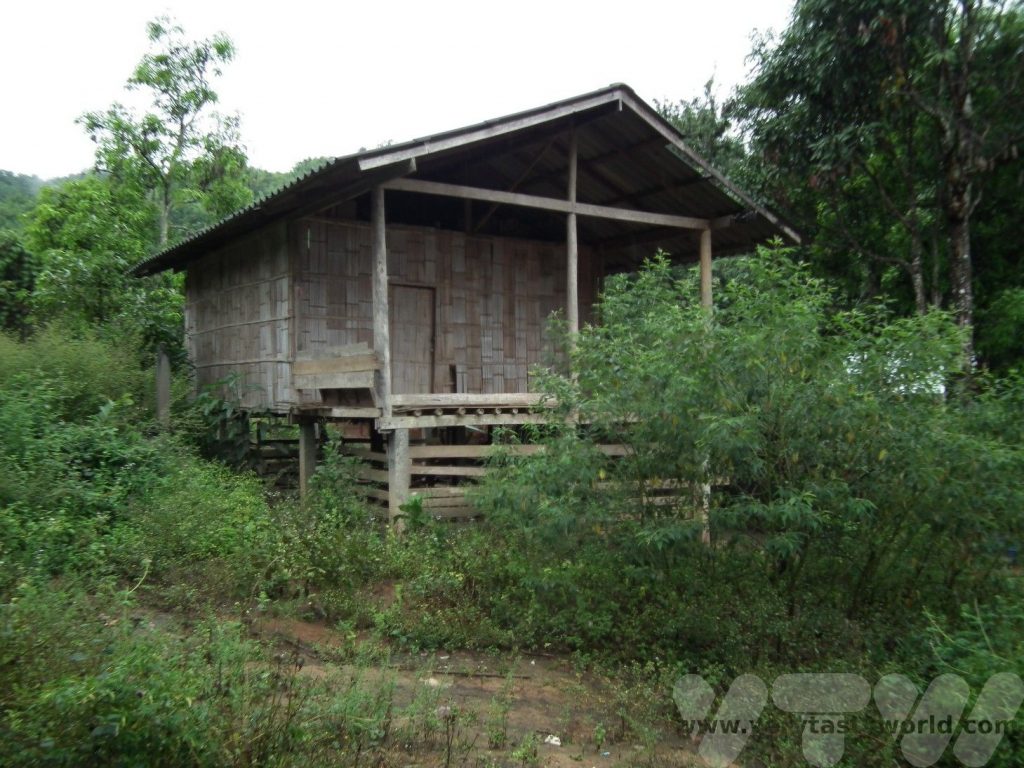
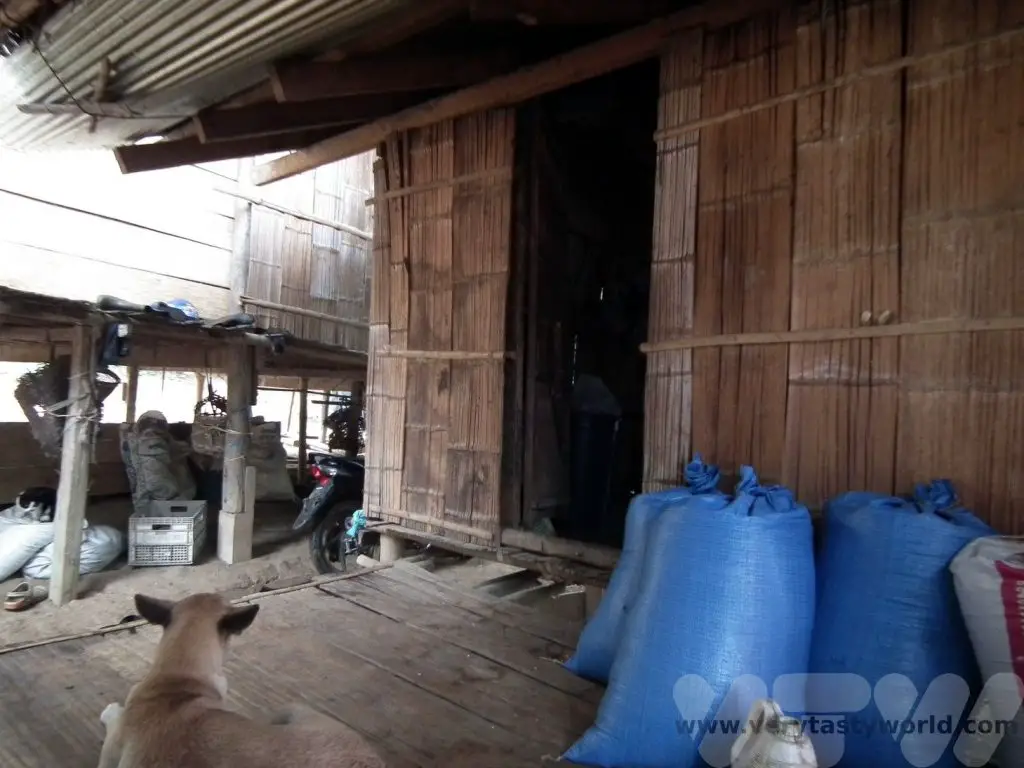
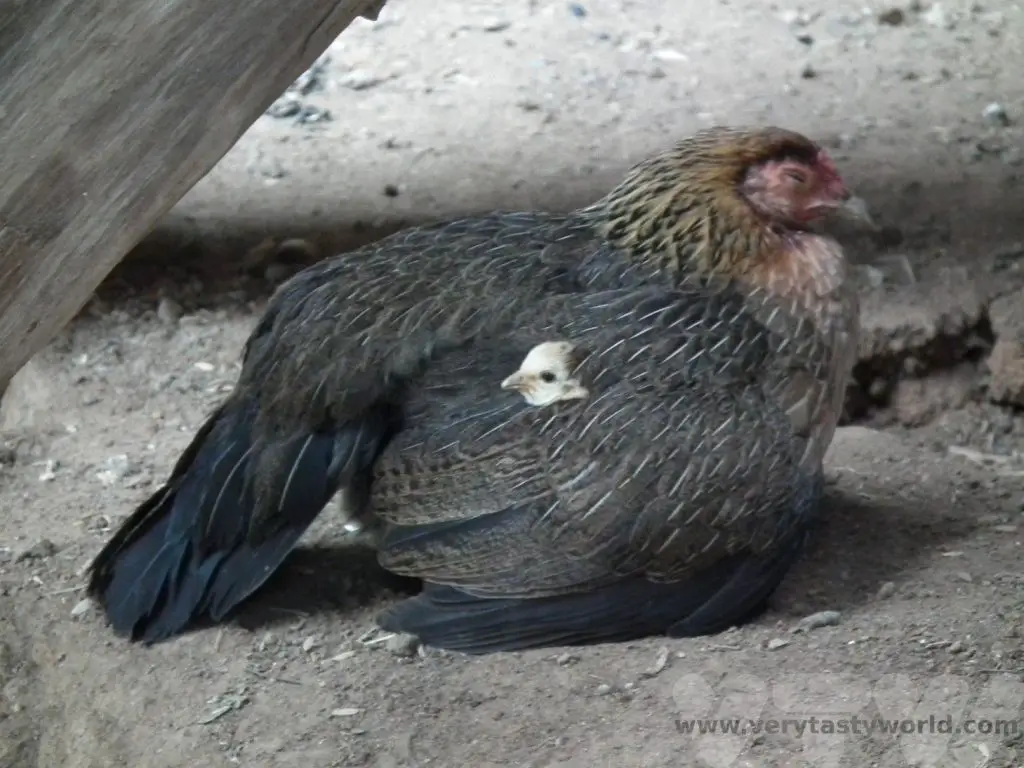
We were invited into a house to join a family where we helped prepare lunch.
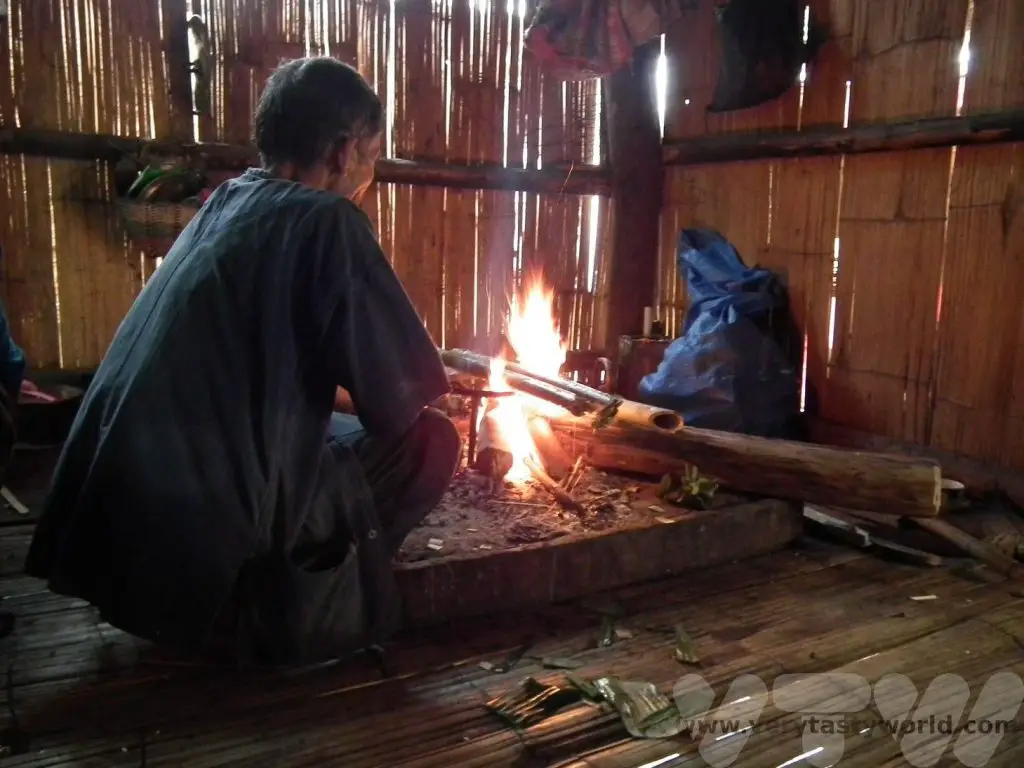
The houses have an open fire inside the main living area. River fish was ponassed onto sticks and cooked directly over the fire.
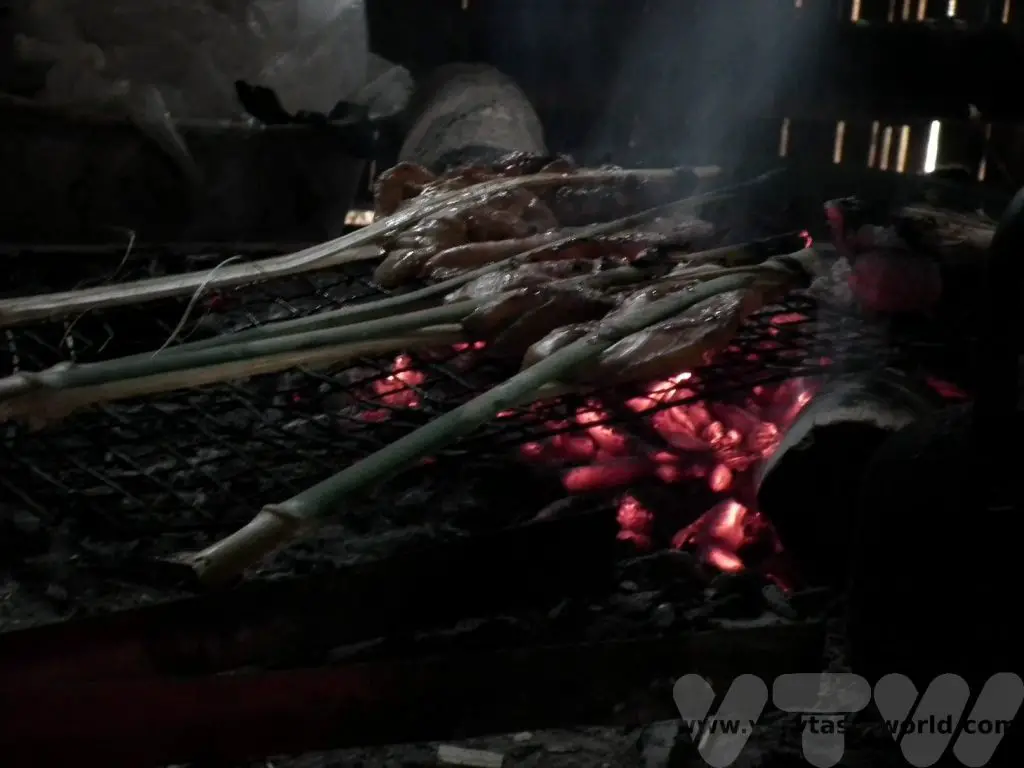
Bamboo stalks are segmented and hollow, so another part of meal was actually cooked inside these: Add sticky rice and water to a bamboo stalk, place it over a fire for a few minutes and… yummy sticky rice!
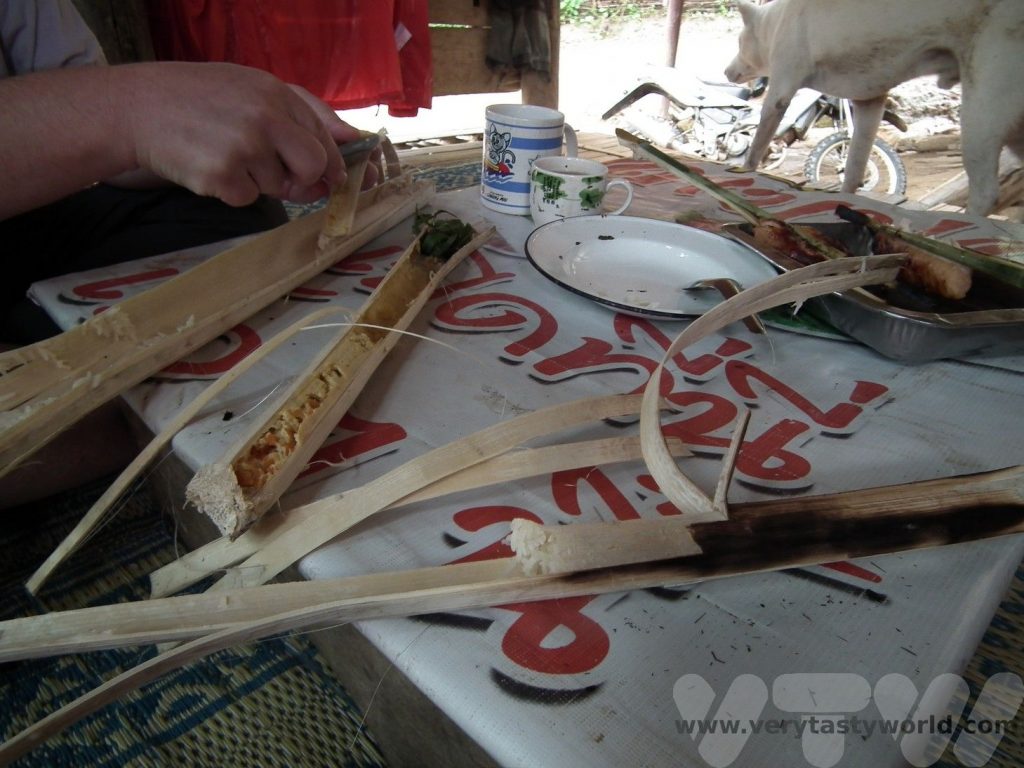
Pour some water into a stem, add a teabag, place over the fire and a few minutes later… a ‘pot’ of tea! Best of all was the egg – crack a couple of eggs, add some herbs, pour the mixture into the bamboo stalk, shake a bit, place over a fire (you guessed it) and a few minutes later… delicious cylindrical omelette.
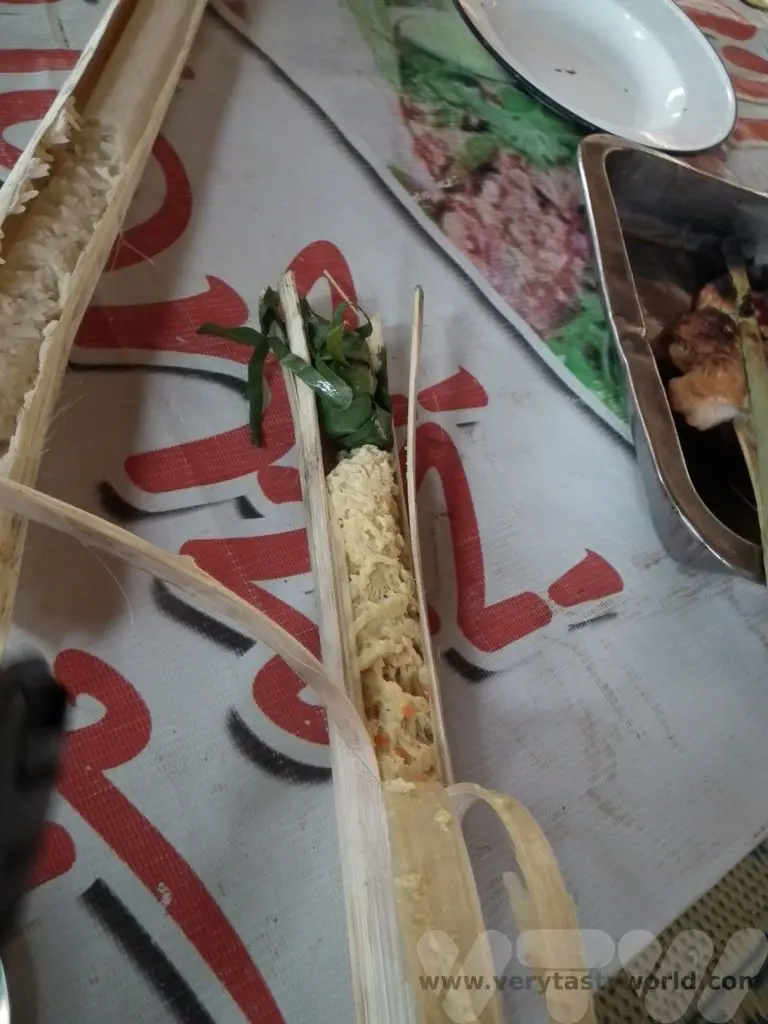
We then enjoyed a longboat ride along the Mae Kok river to visit the hot springs.
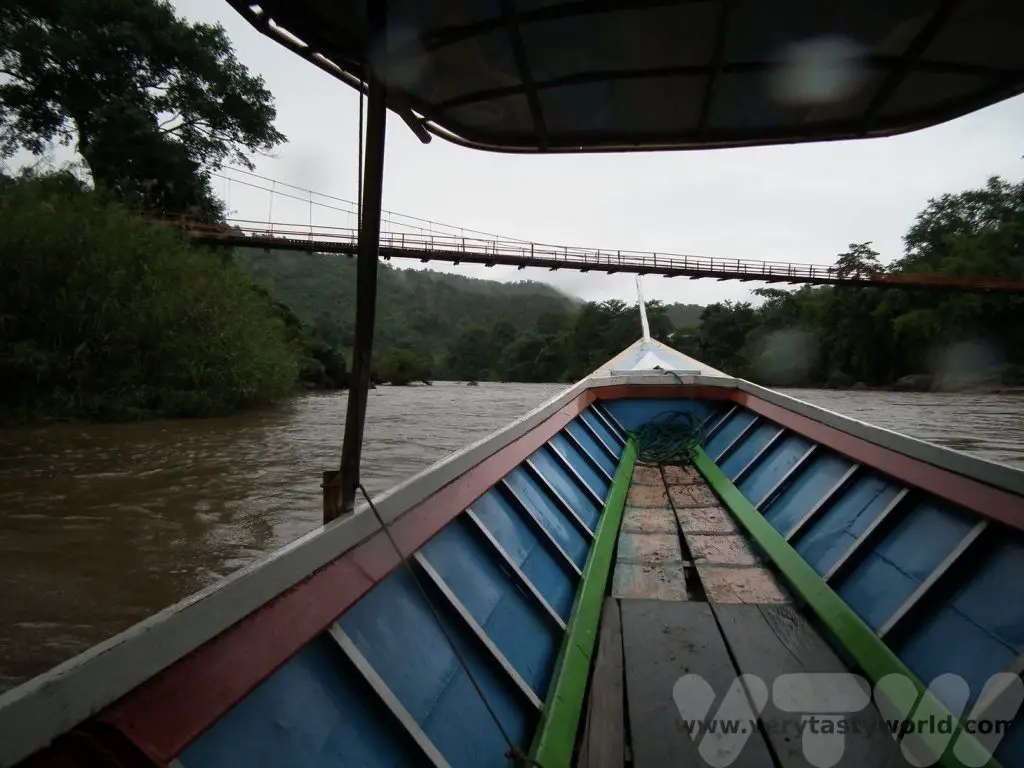
Some of the land in the area has been given over to commercial agriculture so it was also possible to walk to visit the local plantations. We could see bananas…
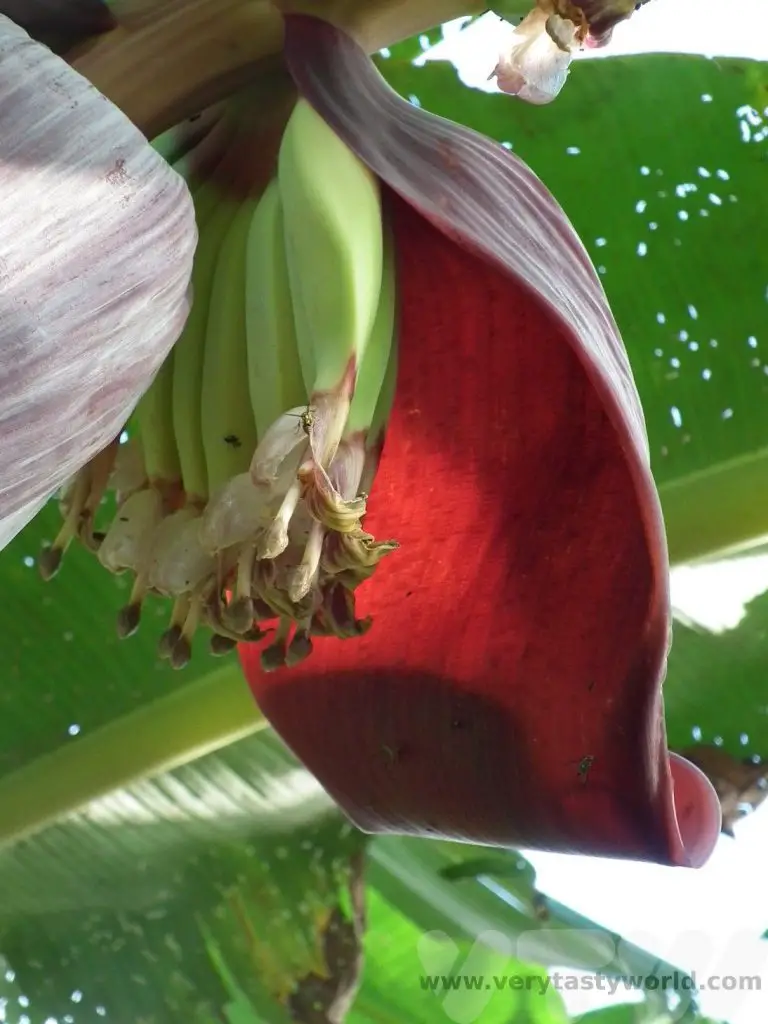
Pineapples…
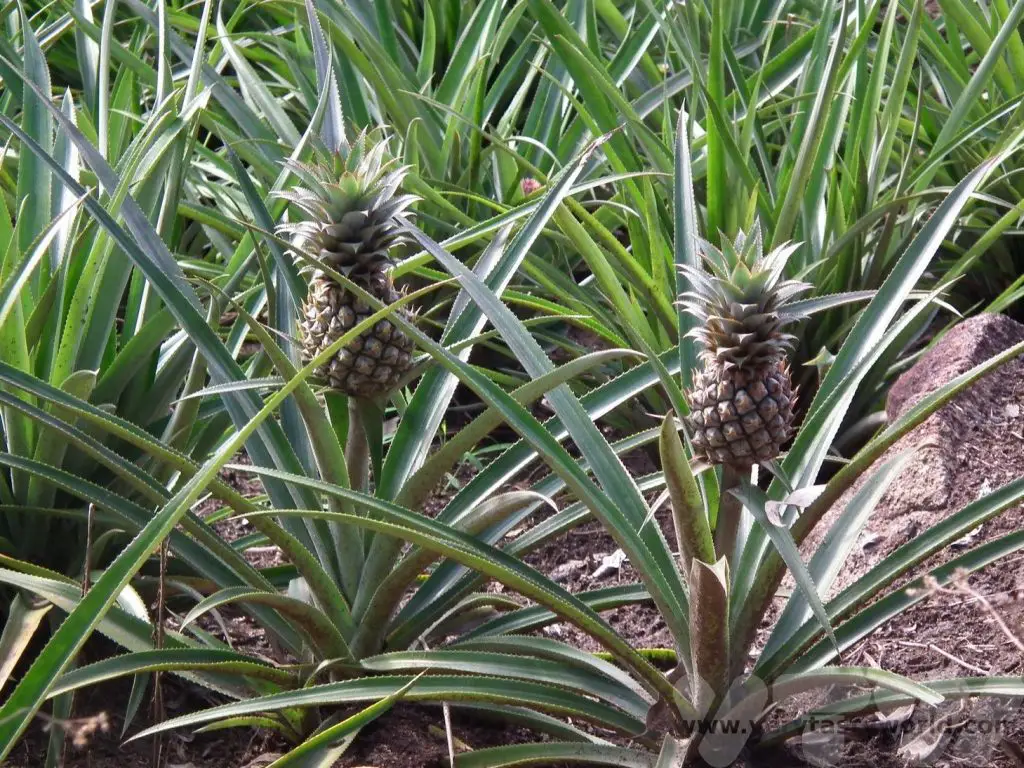
And tea.
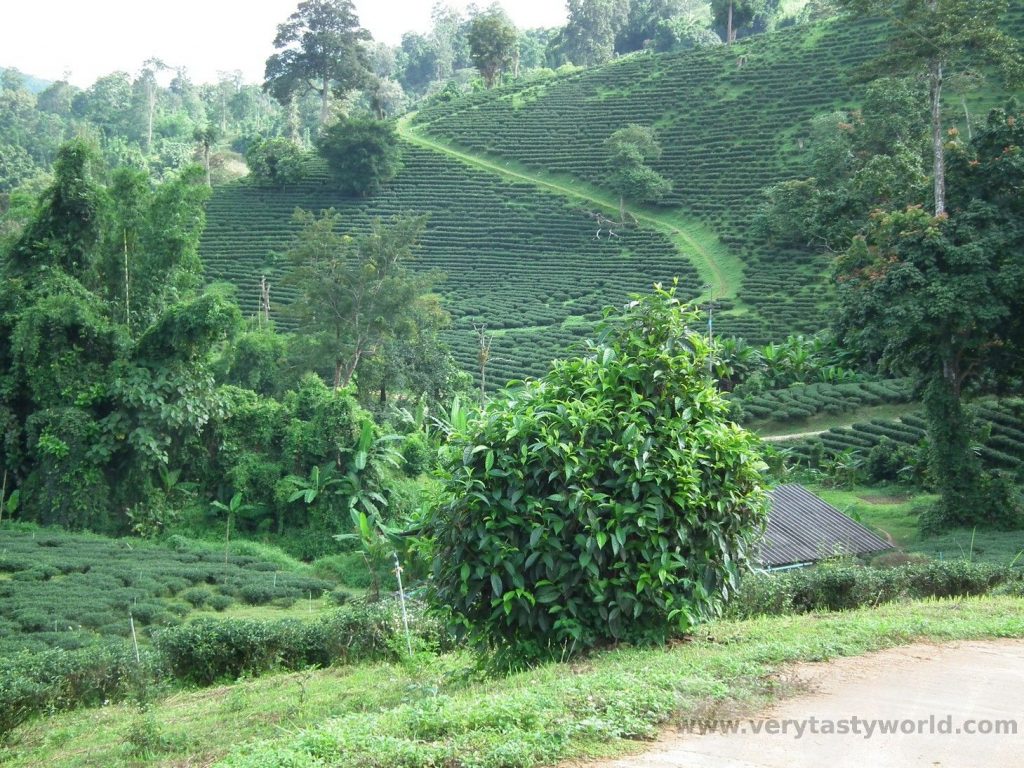
There were also some lovely waterfalls in the area.
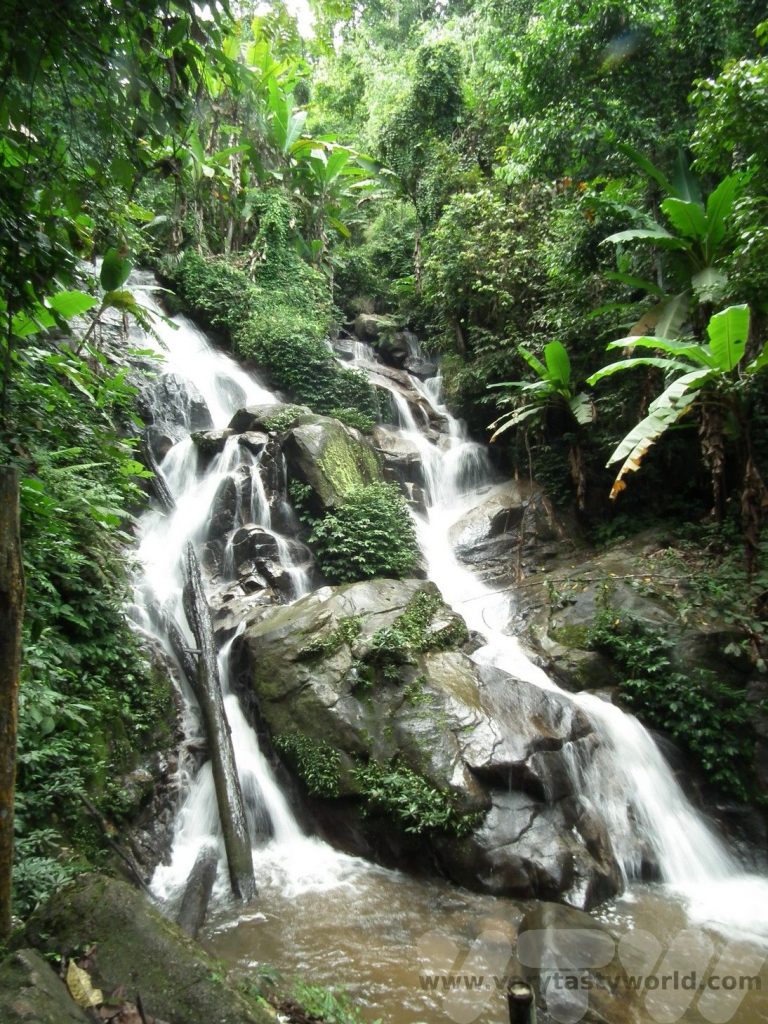
Each night a bonfire would be lit at Bamboo Nest and we could chat with the other guests and watch the glow of the fireflies flitting through the forest.
From the ostentation of the Chiang Rai temple to the simplicity of the remote hills of the Mae Bok basin, we couldn’t have had a more contrasting experience in this region of northern Thailand.
We just didn’t have time to visit Chiang Rai itself!
Related Posts You May Enjoy

A Chiang Mai Tour in Northern Thailand
Chiang Mai is the largest city in northern Thailand and is a lovely place with a very laid back vibe. There are plenty of things to see and these aren’t just confined to the city itself. There are loads of activities to suit all interests – whether cultural or natural – both around town and into the wider countryside. It’s definitely worth spending time exploring this lovely city and surrounds, whether on an organised Chiang Mai tour or exploring independently. We spent five days in and around the region and combined our own exploration with some guided walks which were great for understanding the history of this delightful city.
An Old City With Walls and A Moat
Chiang Mai was founded by the Lanna King, Mangrai, in 1296. The Lanna people were from Northern Thailand and the name translates to ‘Kingdom of a Million Rice Fields.’ Mangrai had established the city of Chiang Rai in 1262 as the capital of his kingdom and later, following both friendship pacts and wars with other local kingdoms, he moved further south. Due to its location Chiang Mai was vulnerable to invasion from the Taungoo Dynasty of the Bamar People (from Myanmar) and the Mongol empire. As a result it was heavily fortified with both a moat and a high city wall, which remain to this day. The old city is surrounded by an extremely pretty walled canal with four gates.
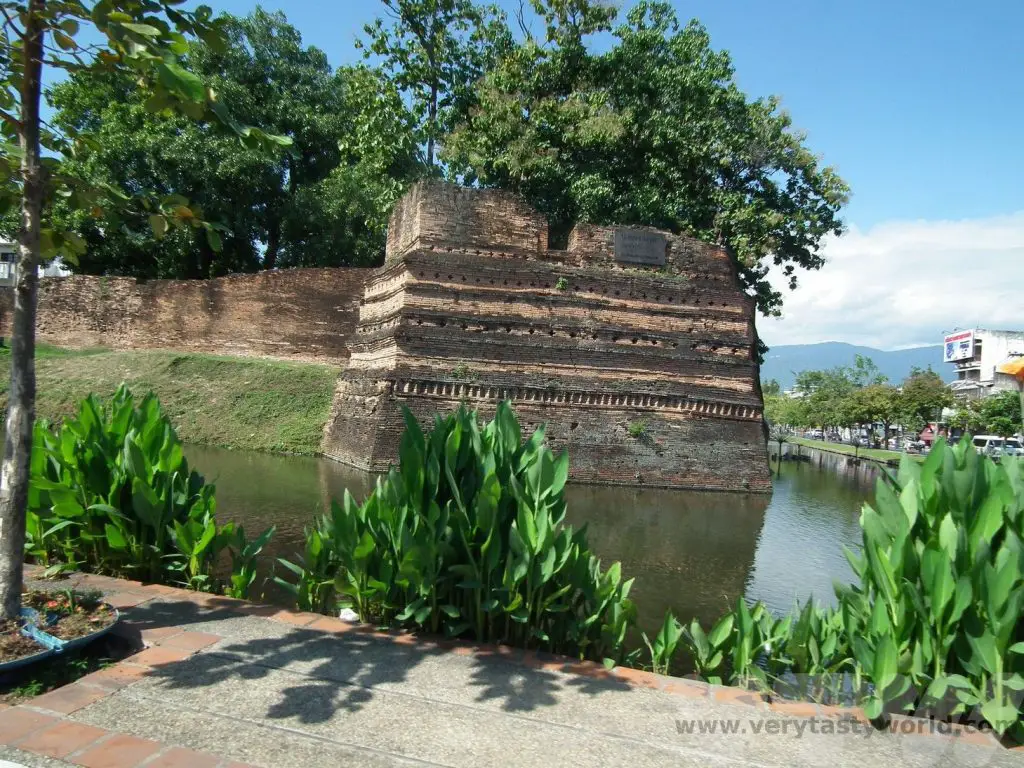
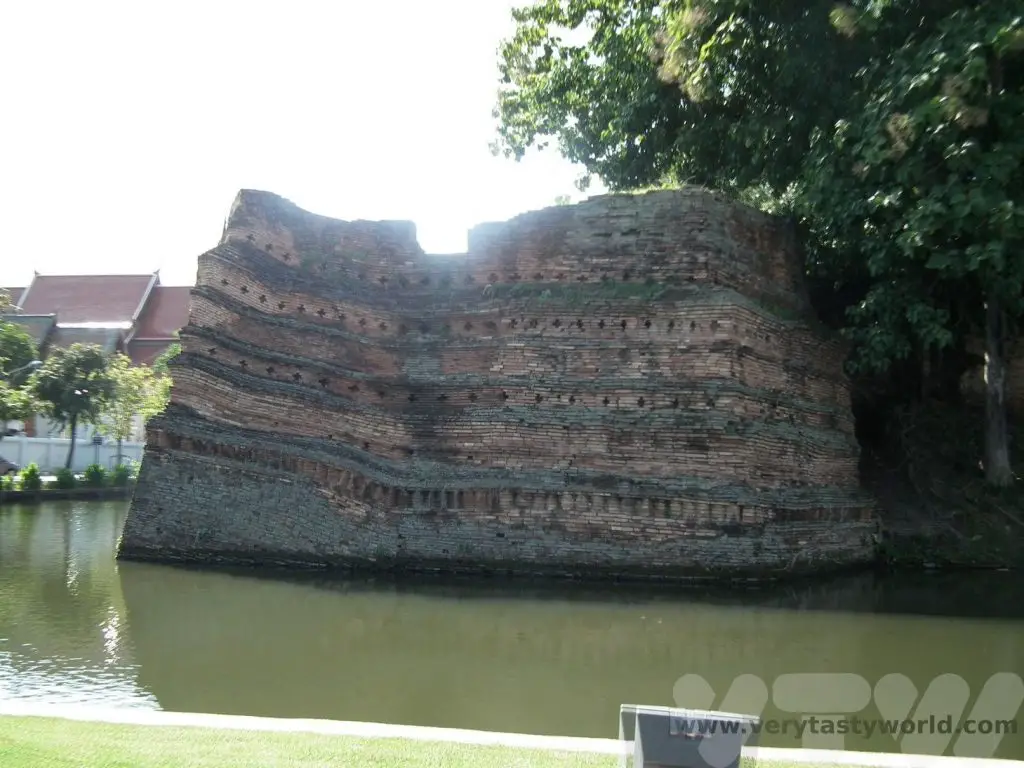
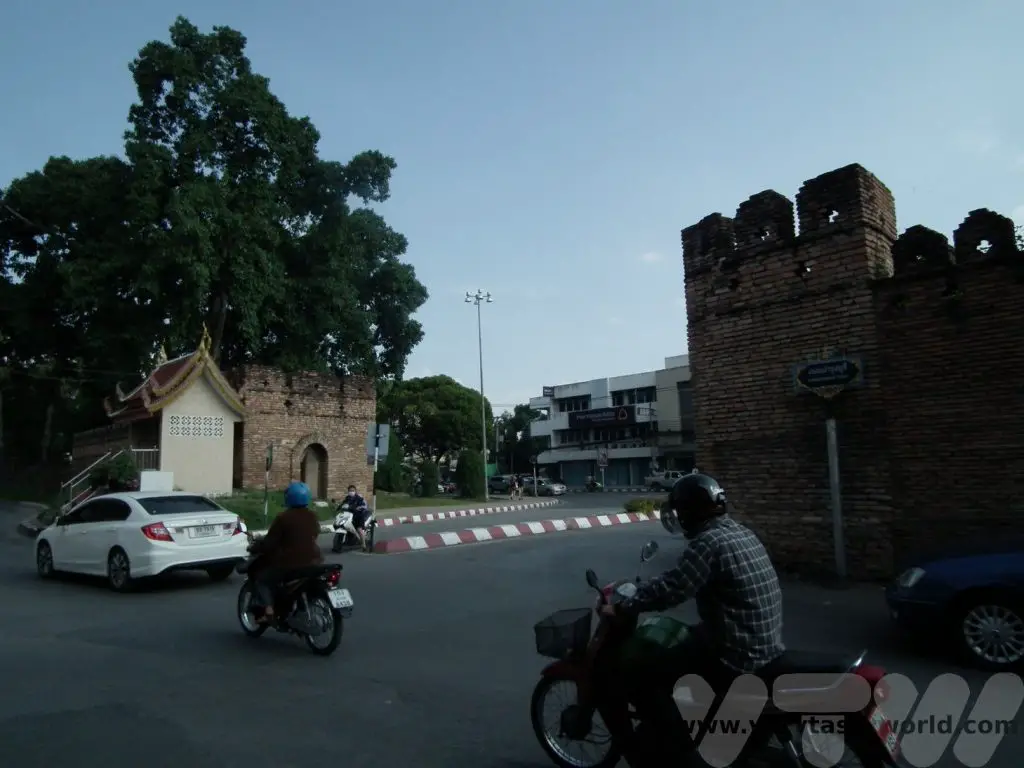
Old Town Chiang Mai Temples
Chiang Mai has well over a hundred temples and it is a pleasure just wandering through the city to discover the many gems that the city to offer.
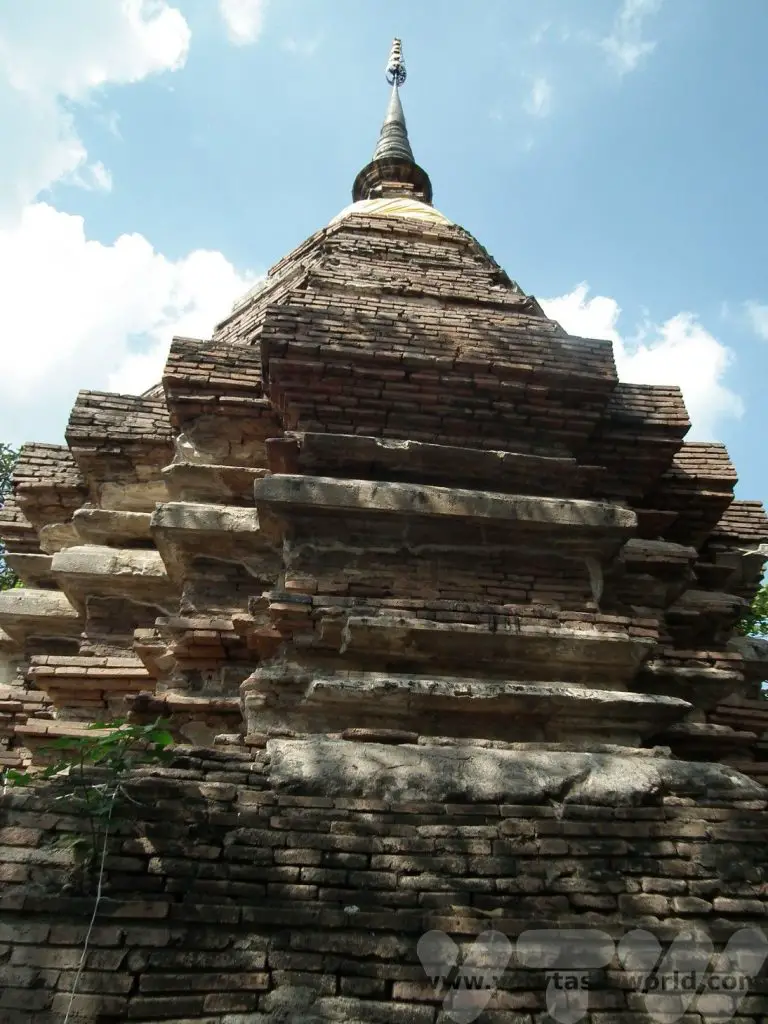
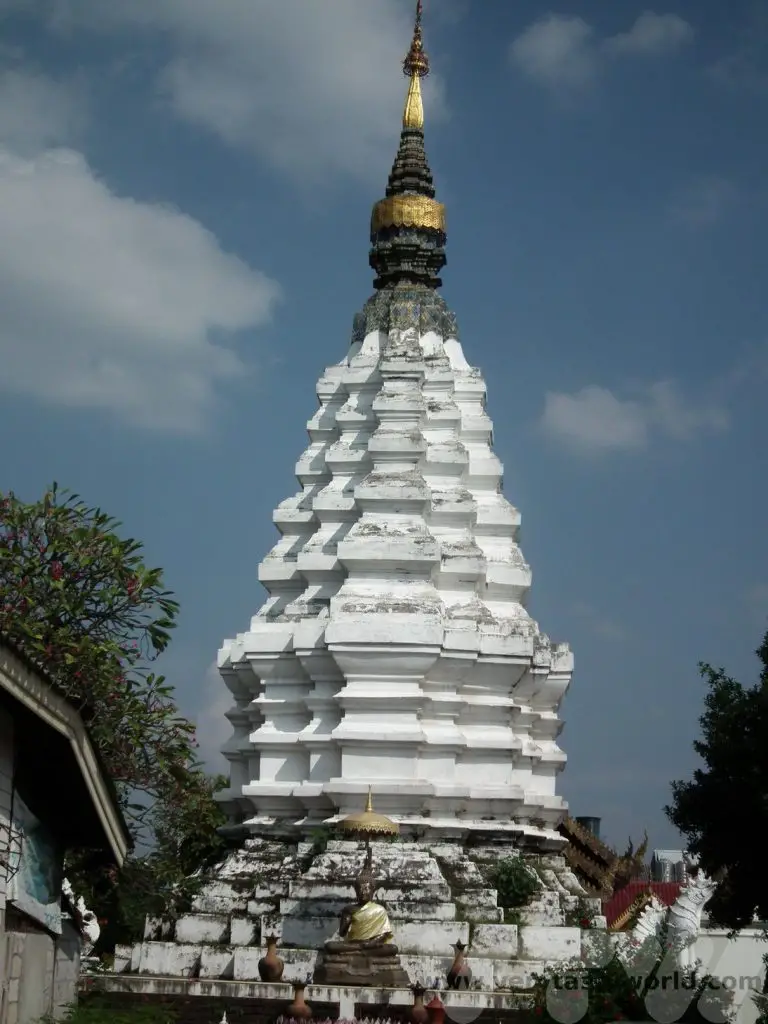
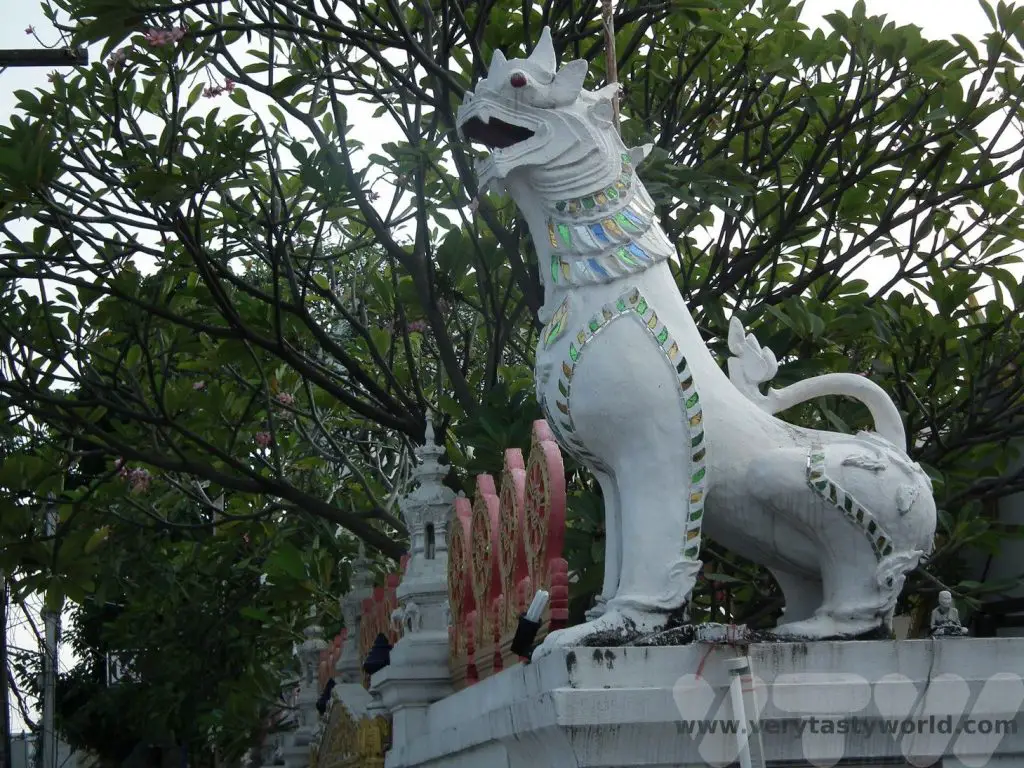
Wat Chiang Man
Wat Chiang Man is the city’s oldest temple, located by the north east corner of the walled old city. It was constructed at the behest of King Mengrai.
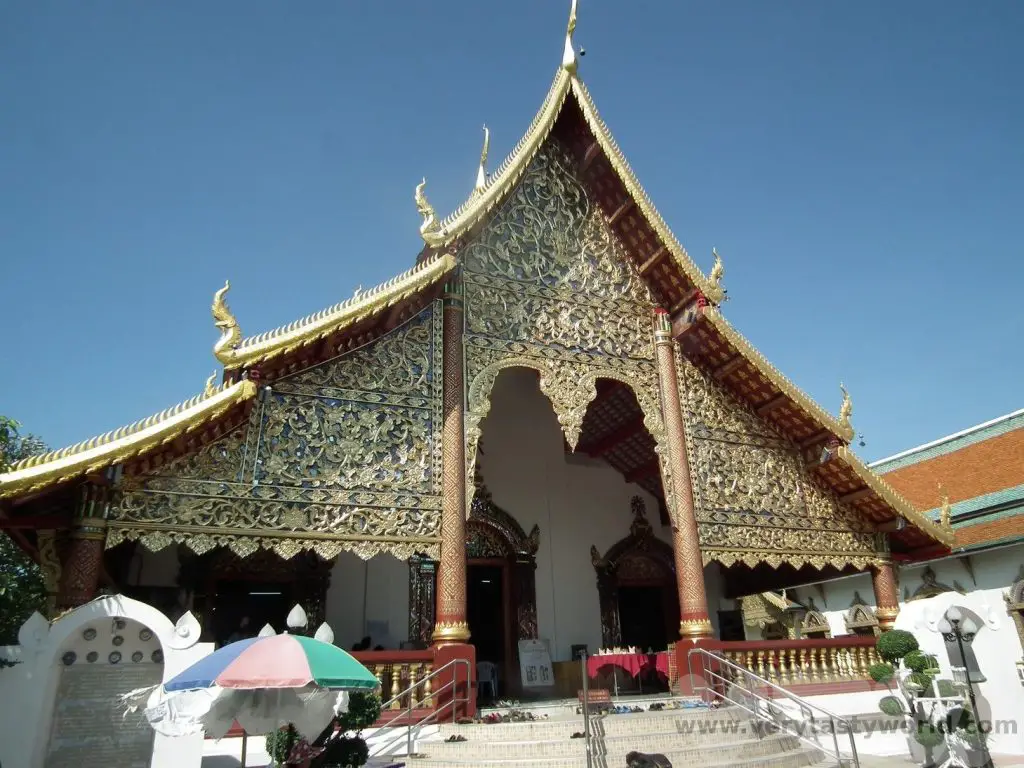
The wihan of a temple is the assembly hall and there are two at Wat Chiang Man. Both contain very old and highly revered Buddhas.
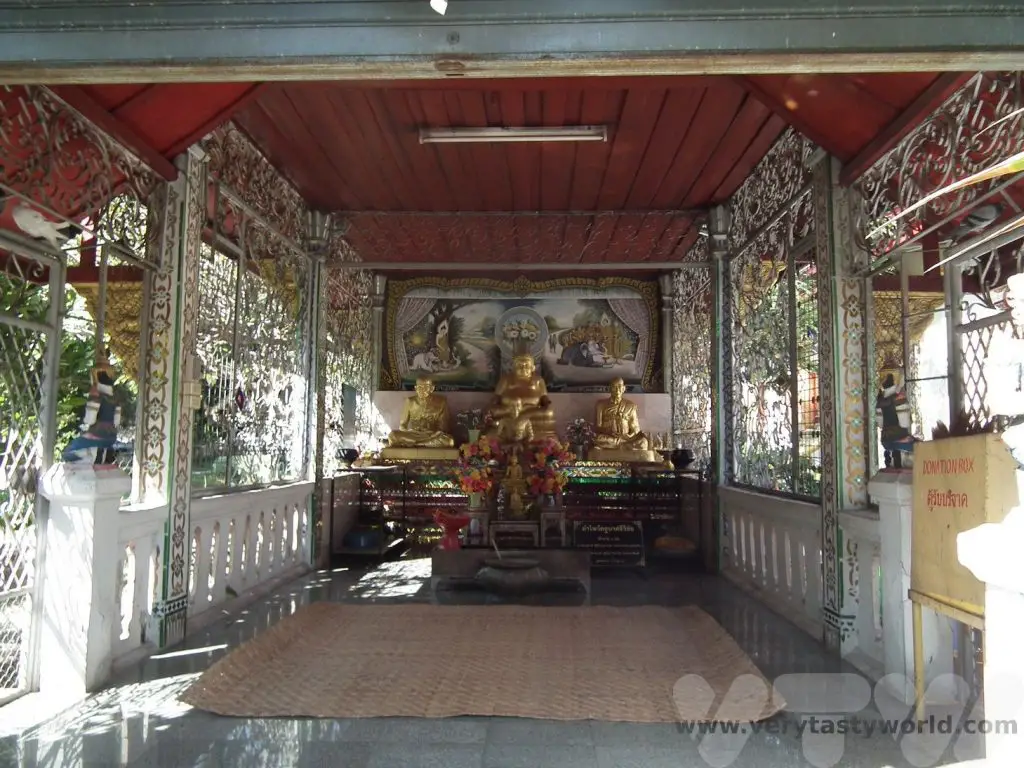
The chedi, also known as a stupa, is traditionally the oldest part of a temple. Wat Chiang Man has an elephant chedi, called Chedi Chang Lom, where fifteen stone elephants support the golden relic chamber.
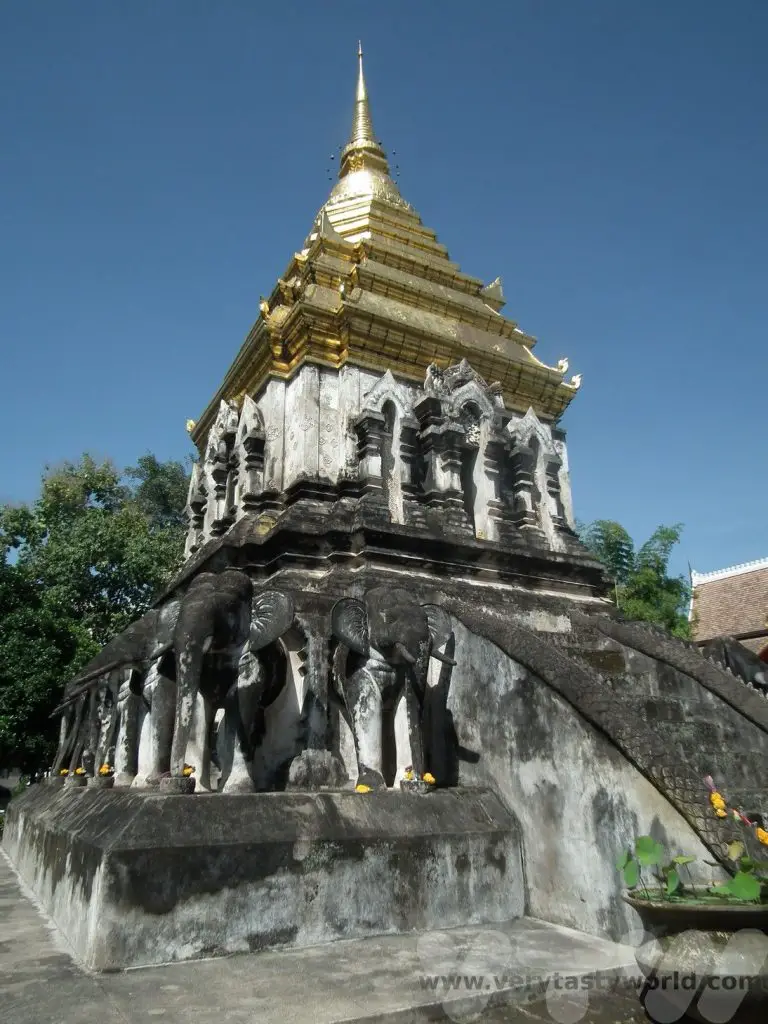
Wat Phra Singh
Another important temple, Wat Phra Singh, was constructed in 1345 by King Phayu, the fifth Mangrai king, who wanted to build a chedi for his late father’s ashes. It was enjoying a face-lift when we visited, so we didn’t see it in its full glory.

Wat Phra Singh Wihan Lai Kham was constructed to house the precious Phra Buddha Singh statue.
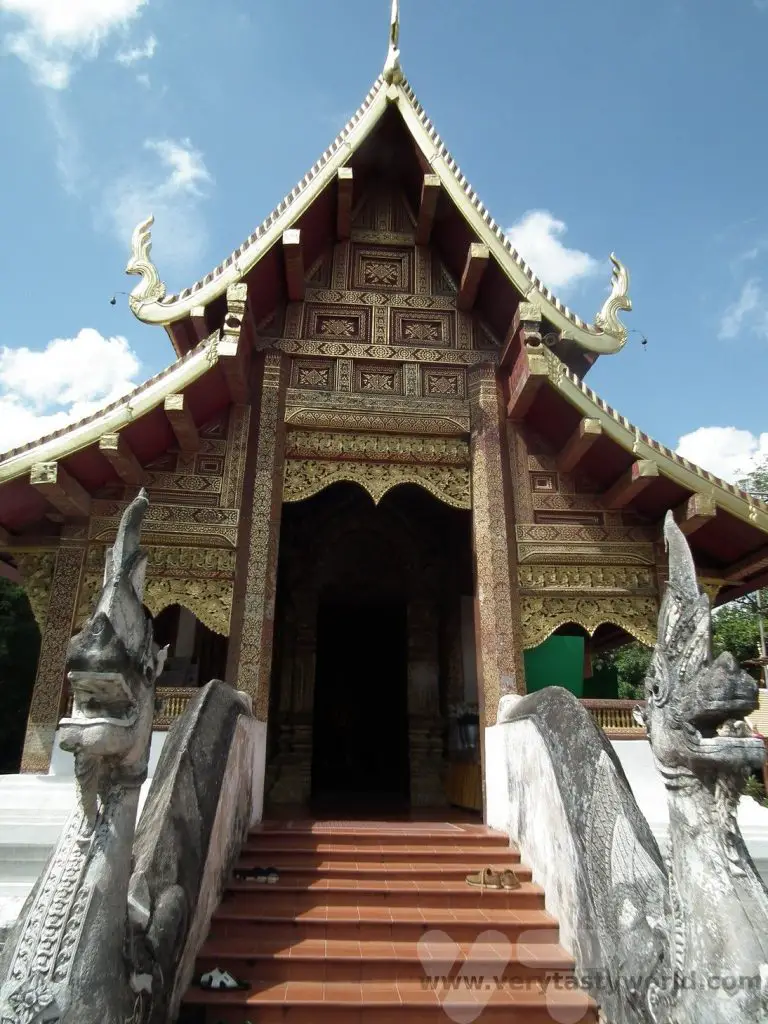
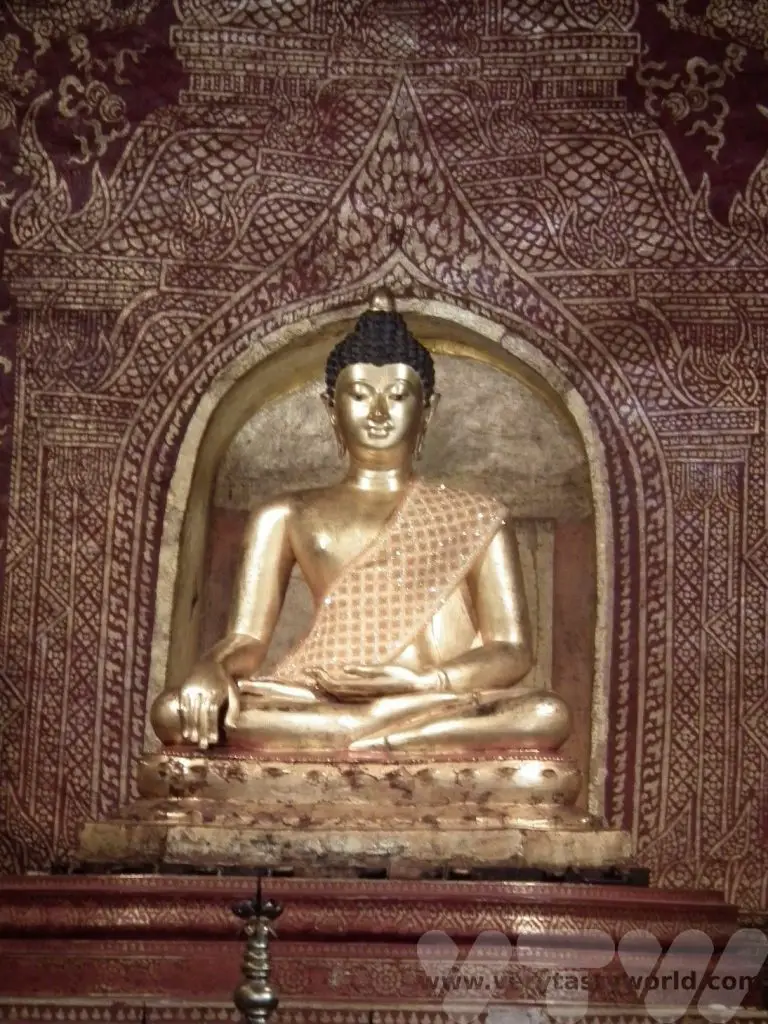
The interior also contains some fascinating murals.
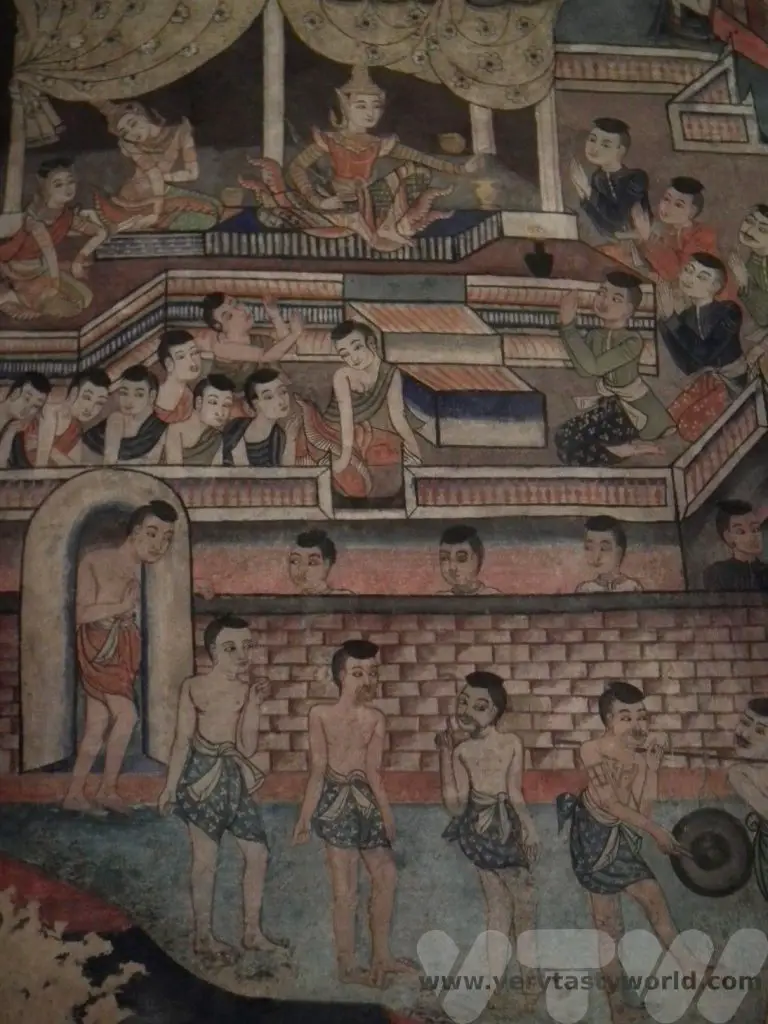
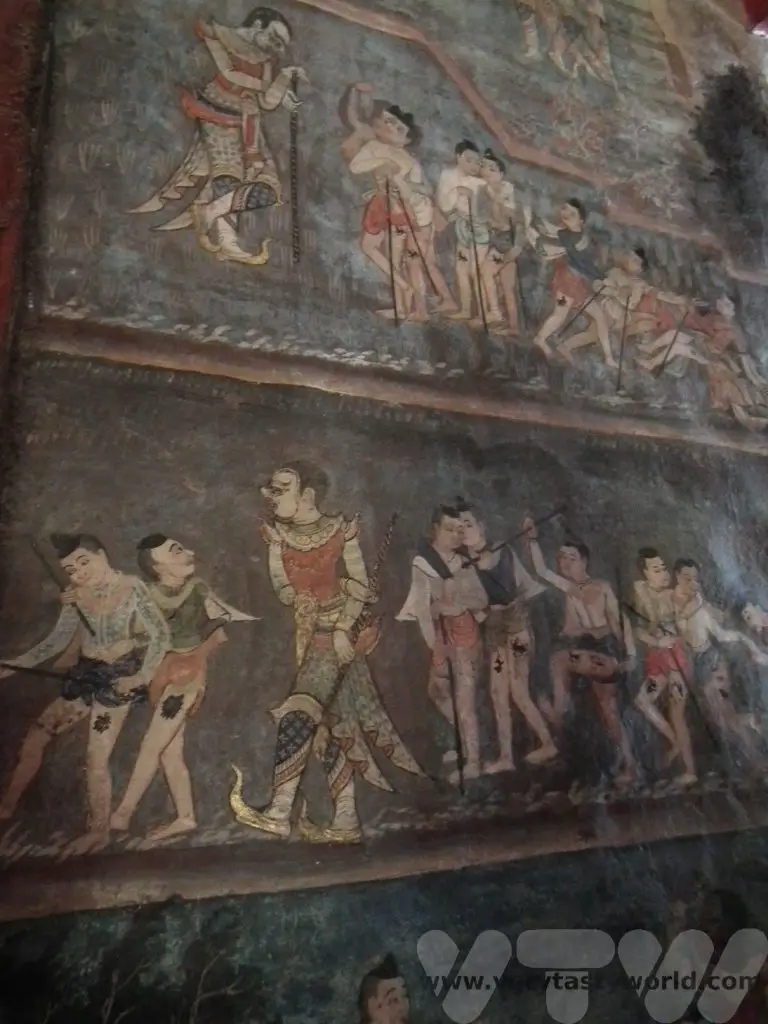
A common – and striking – characteristic of many temples in Thailand are the naga – semi-divine creatures that are a cross between a human and serpent. These are the guardians of the temple – they may look dramatic and a scary but their purpose is generally thought to be protective. It wouldn’t be appropriate to have a holy place guarded by demons.
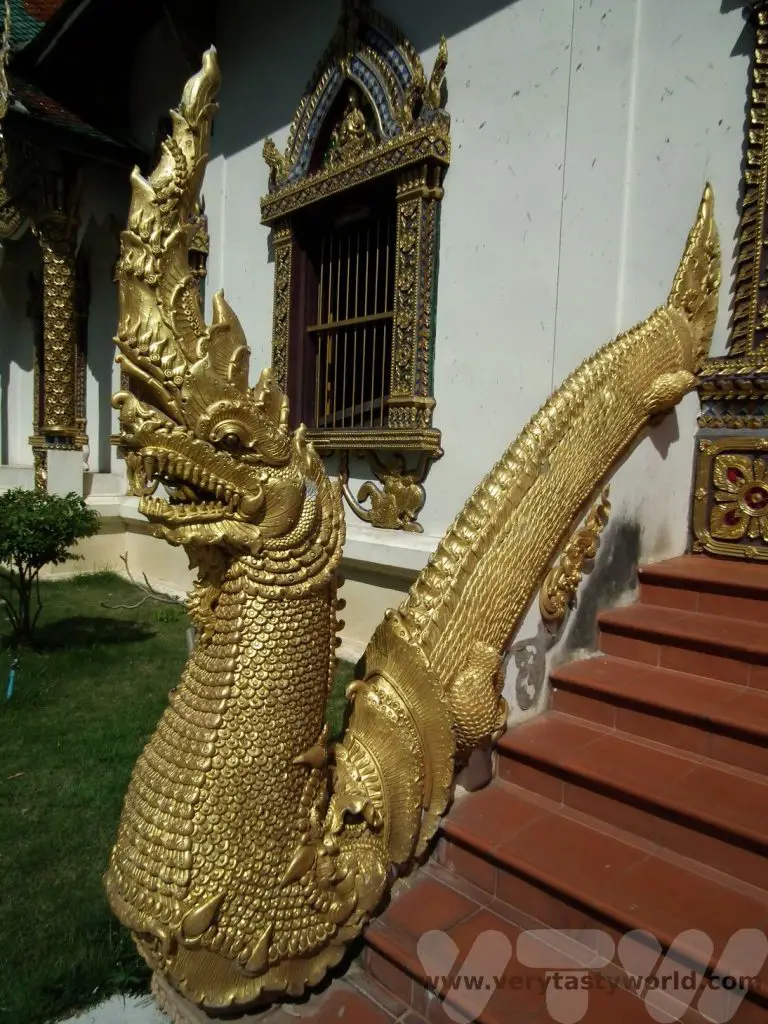
The roofs of many of the temple buildings are beautiful- highly decorative and elaborate.
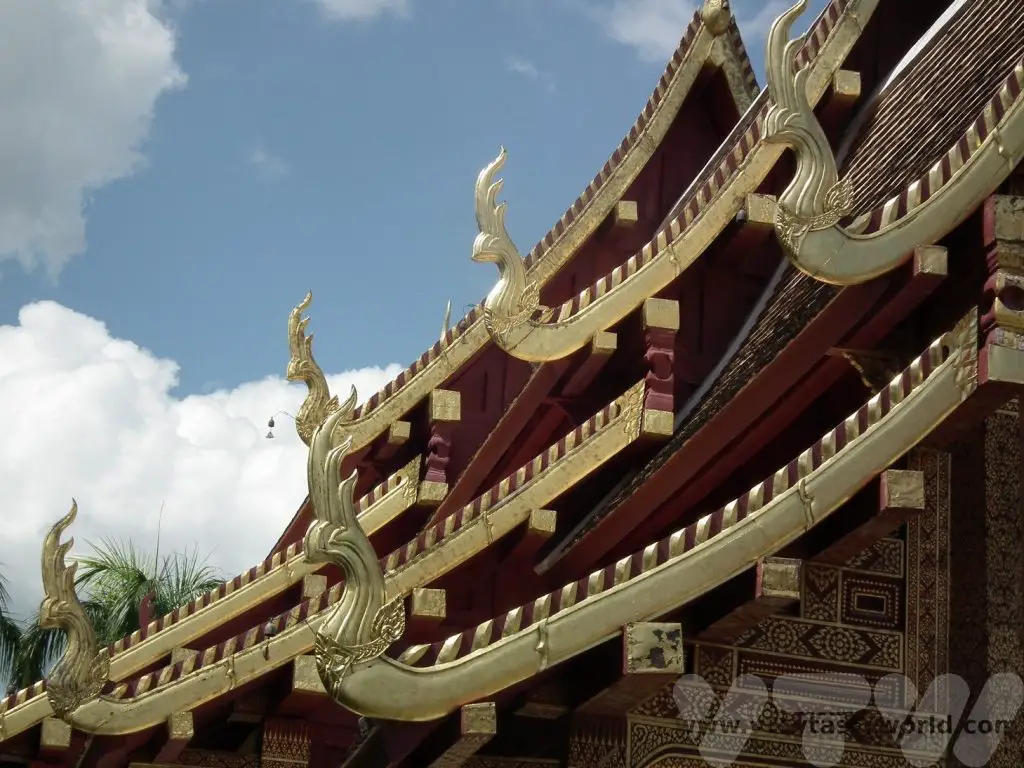
Chiang Mai Cultural Centre
Slightly out of town on the Prapoklao Road is the Chiang Mai Arts and Cultural Centre which used to be the royal hall. It runs evenings showcasing northern Thai food and culture. You can join in to enjoy a delicious meal followed by entertainment such as dancing, martial arts and traditional games.
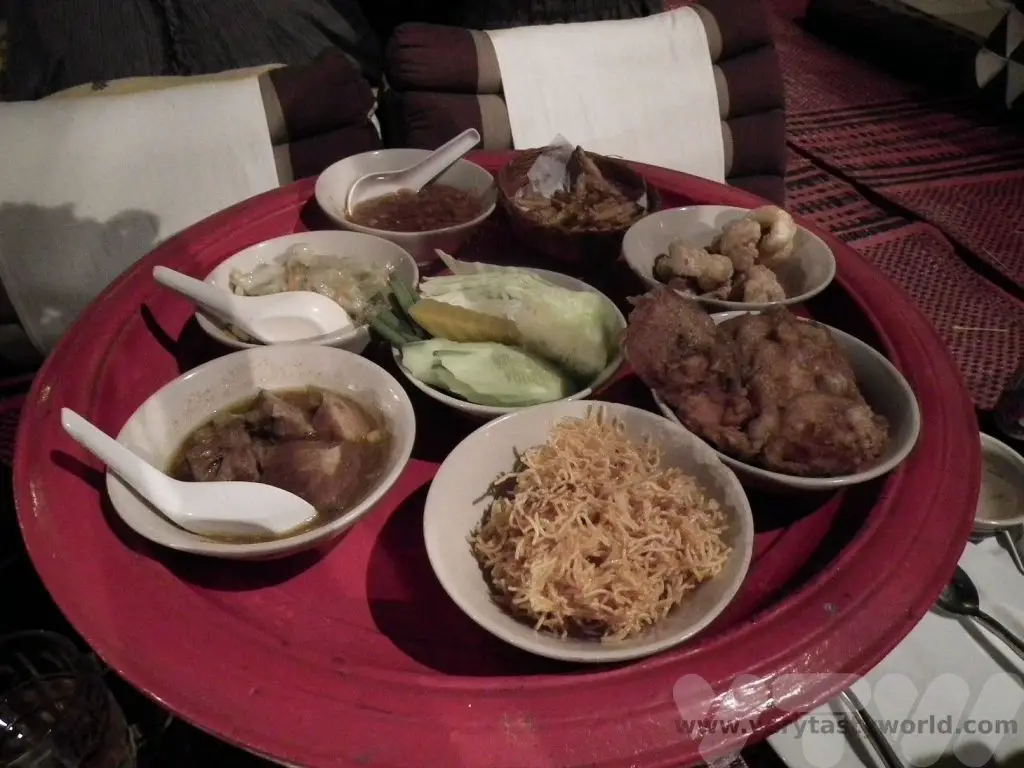
Then the entertainment started with some dancing and martial arts…
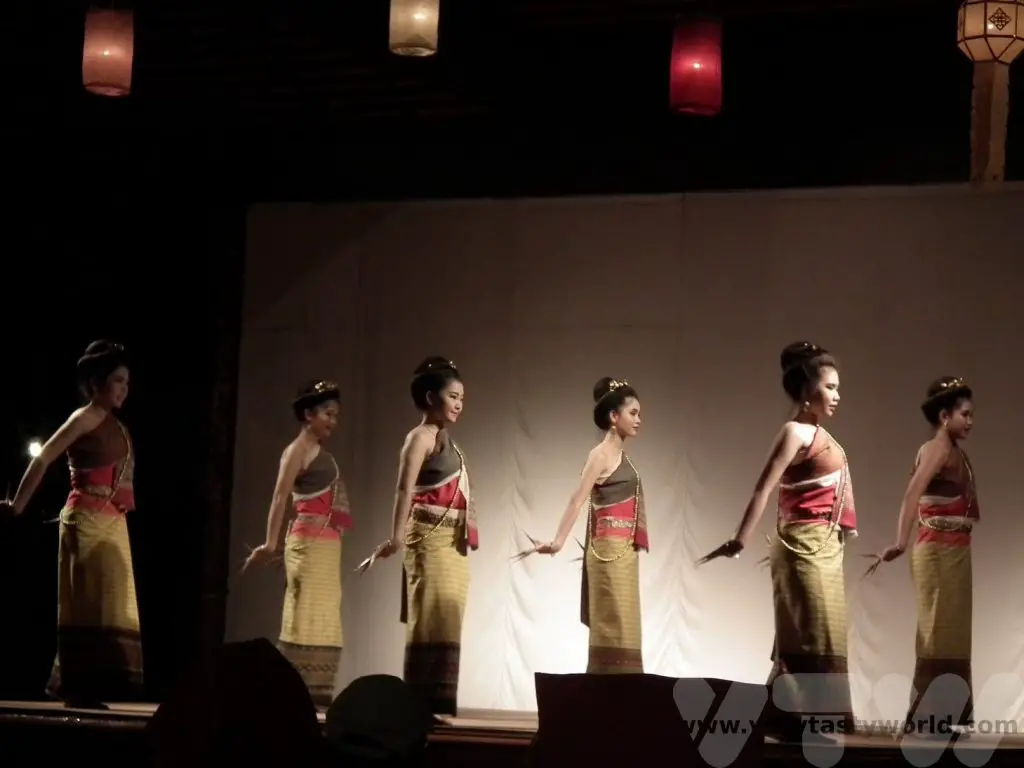
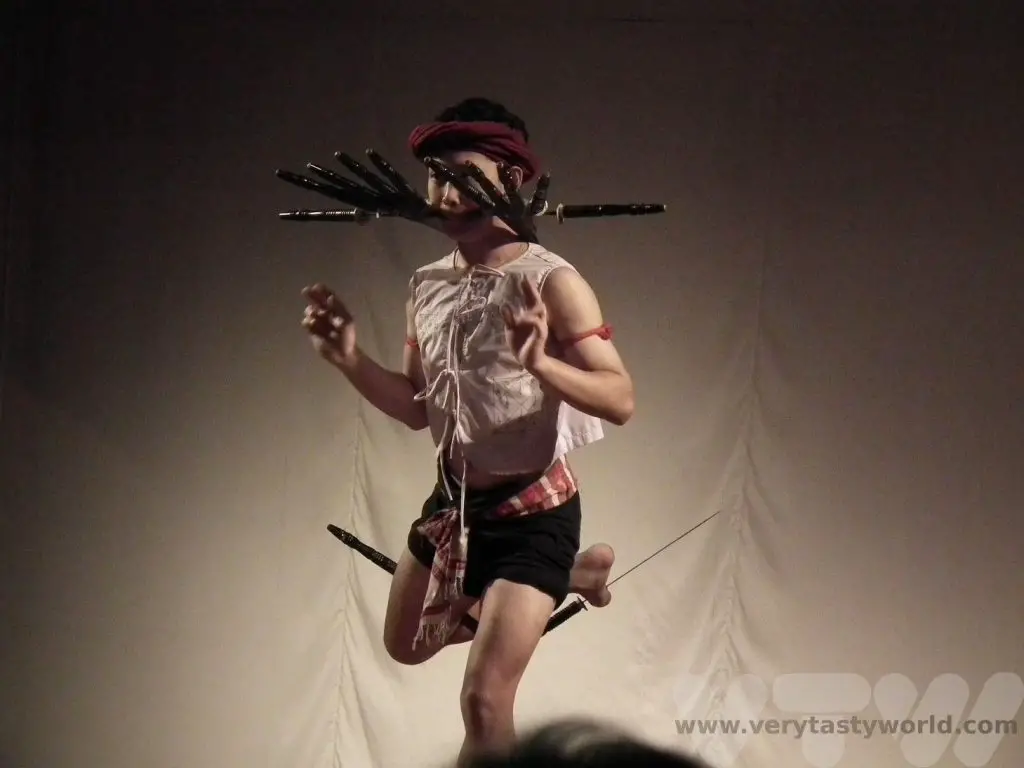
…before we moved outside to see some fire-based martial arts and a cute lion dance.
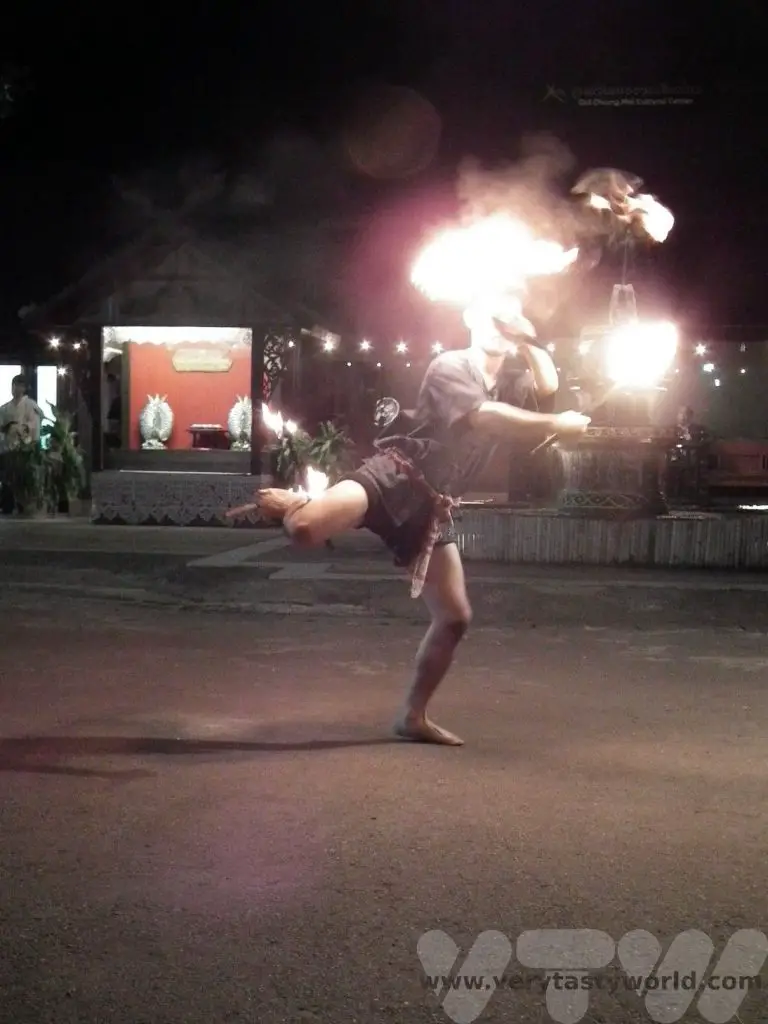
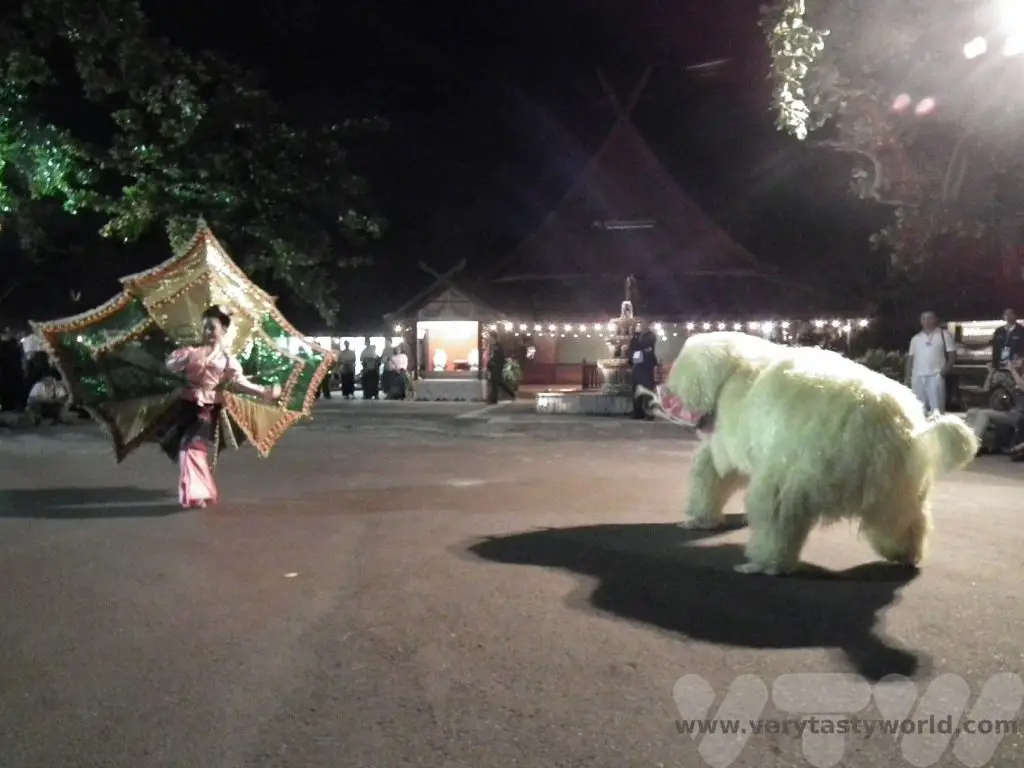
It is a bit touristy but was a fun evening out and an introduction to the culture of the region.
Temples Further Afield
If you don’t get templed out in Chiang Mai itself, there are many more wats to visit in the area surrounding the city. If you don’t have a pre-arranged tour, it’s possible to reach them by taxi. These can easily be arranged with local hotels and hostels. It’s worth agreeing a price first and consider asking for a round trip where the taxi driver will wait for you to explore the temple before taking you back. Both Wat Inthrawat and Wiang Kum Kam, located a few kilometres from the city centre, were definitely worth exploring.
Wat Inthrawat
Wat Inthrawat is one of the best preserved wooden temples in the region. It’s located in the Hang Dong district around 10 km south of Chiang Mai, in the village of Ban Ton Kwen. Small, but perfectly formed, this temple is still in its original state.
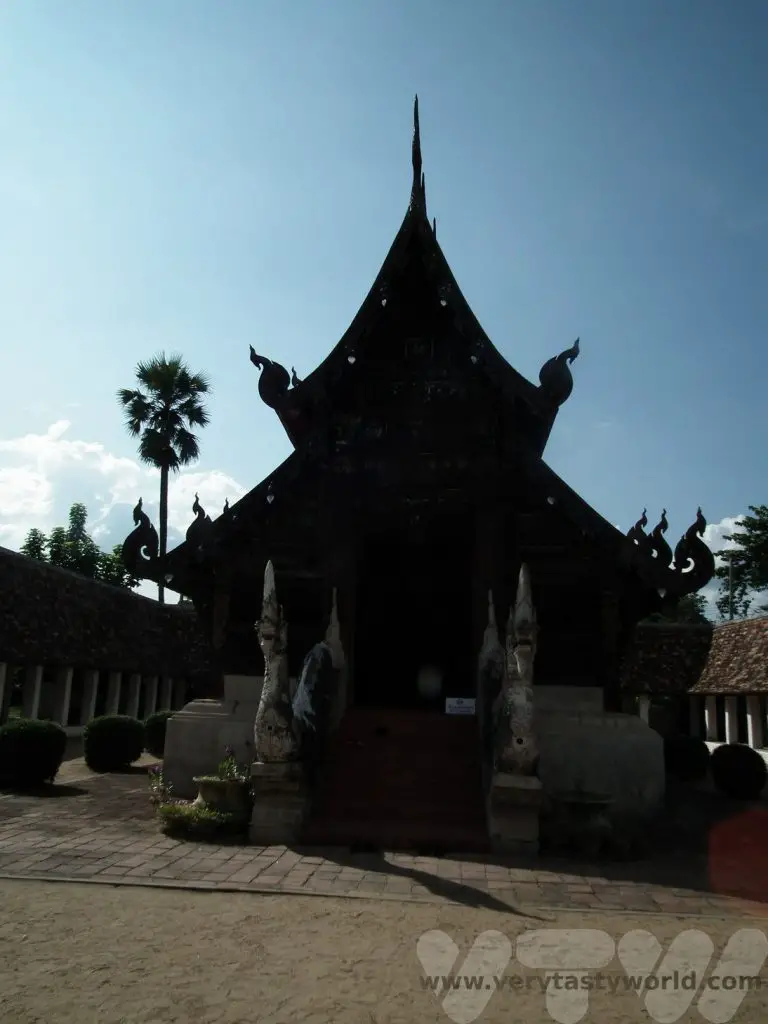
It has a wihan built in the Lanna style with typical nagas at the entrance steps.
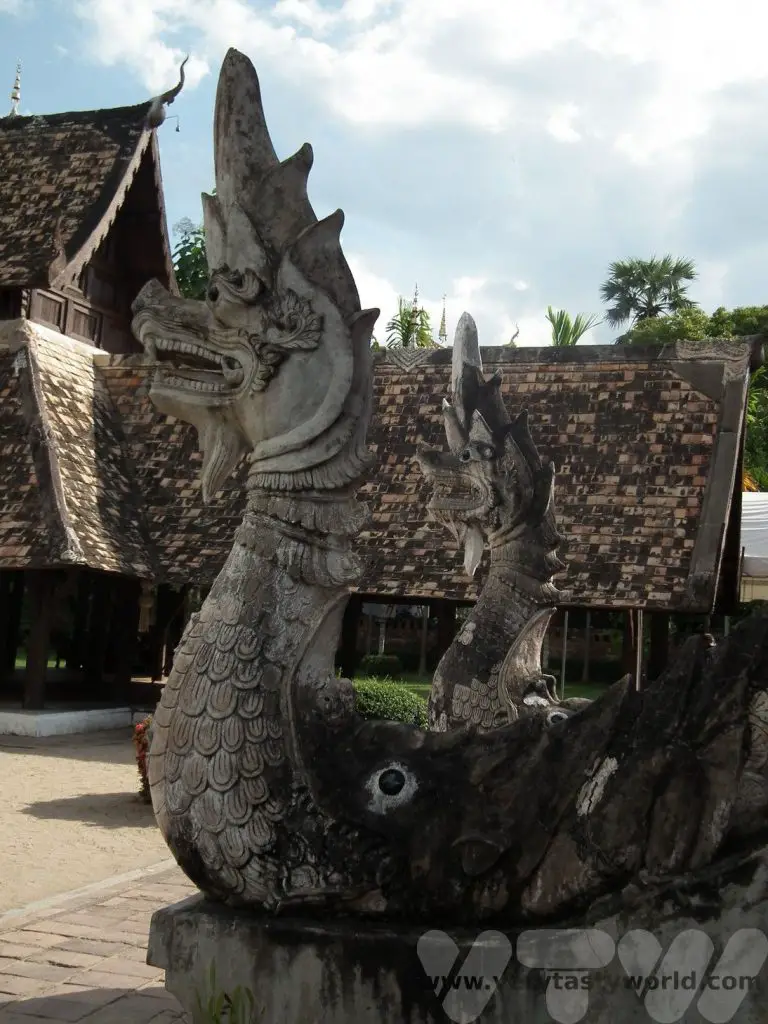
The roof has three tiers and also features some impressive and very decorative features at the tips of each tier. The quality of the craftsmanship is remarkable.
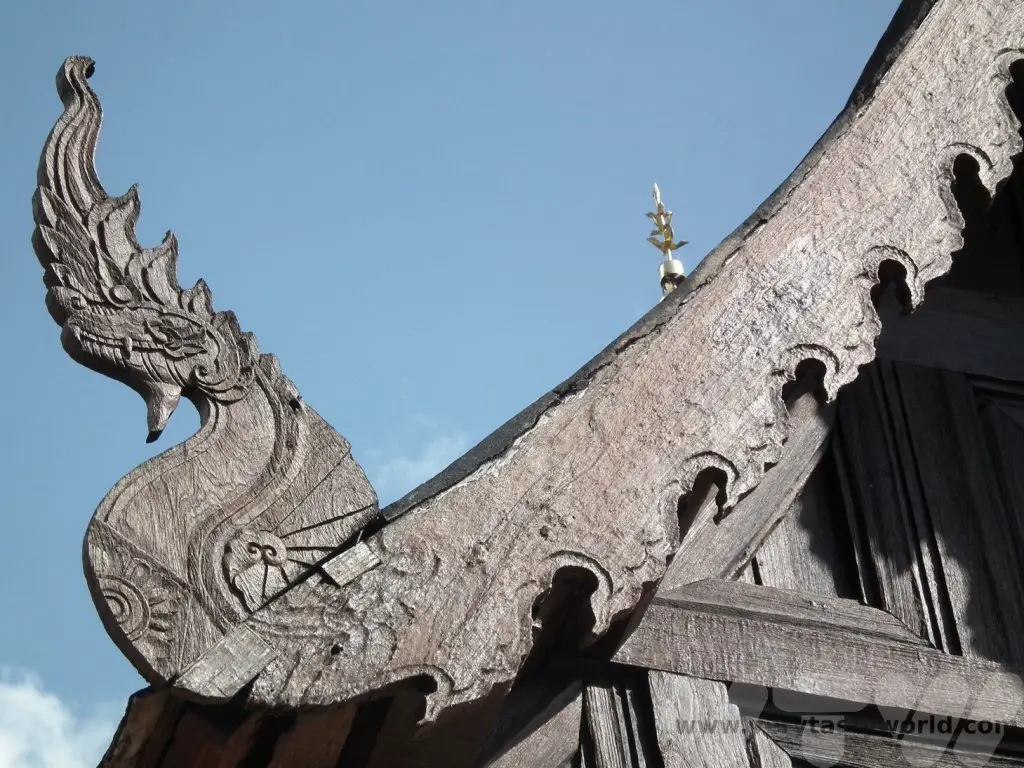
Wiang Kum Kam
Around 5km southeast of Chiang Mai lies the archaeological site of Wiang Kum Kam. This former city was built by King Magram. It was originally the capital of the Lanna in the 13th century but Magram decided to relocate to Chiang Mai, situated at an altitude 12m higher, due to serious flooding at this site. Although the area remained inhabited for several centuries it was finally abandoned after a massive flood which deposited a huge amount of sediment over the buildings. Much of the city has now been excavated and it’s possible to explore the ruins. It’s an extensive area and you can ride around the site in a horse drawn cart or tram. It has a visitor centre, located on Rte 3029, which has loads of information about the site and that’s also the place where you can pick up transportation. It’s possible to visit several temple complexes.
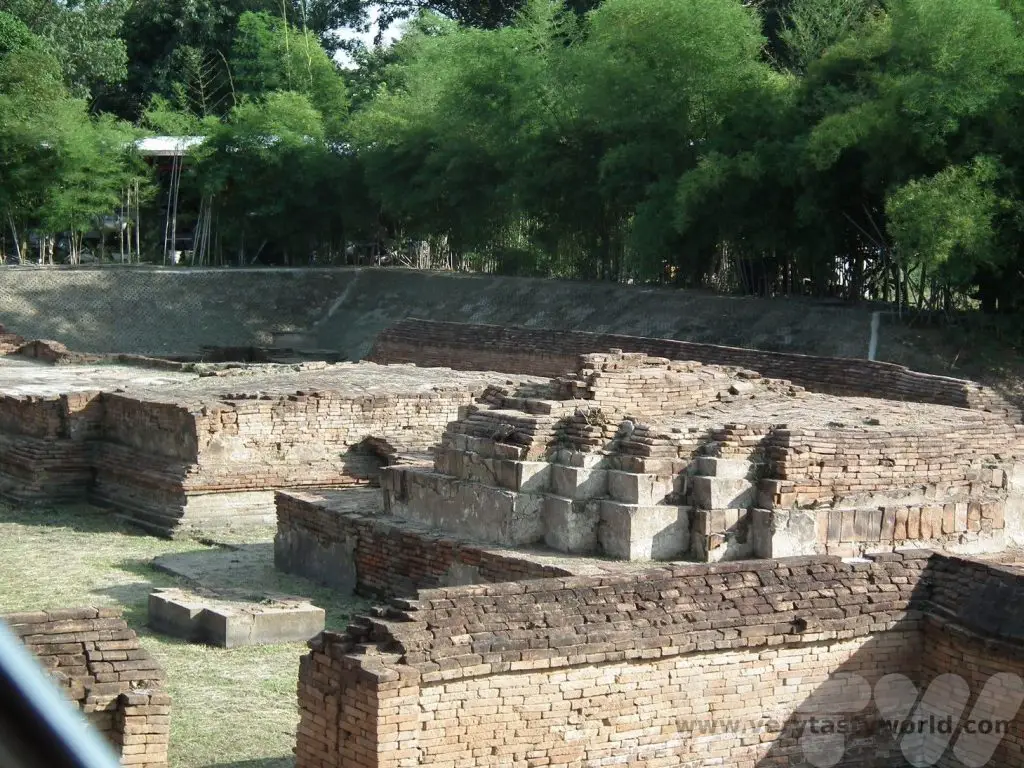
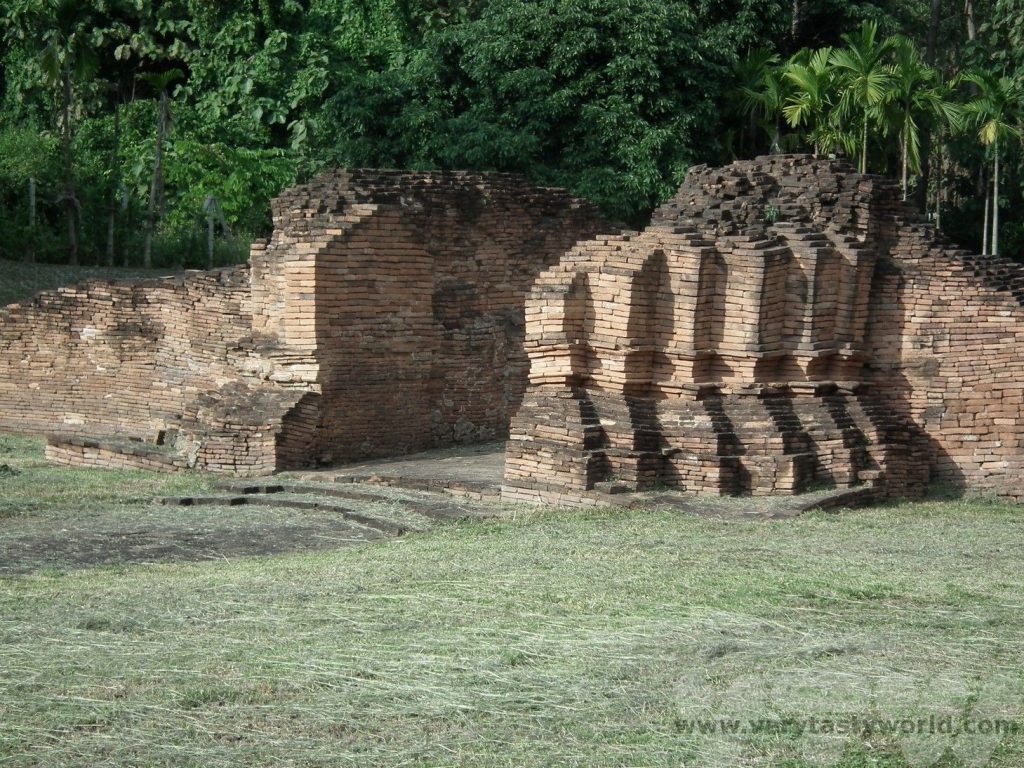
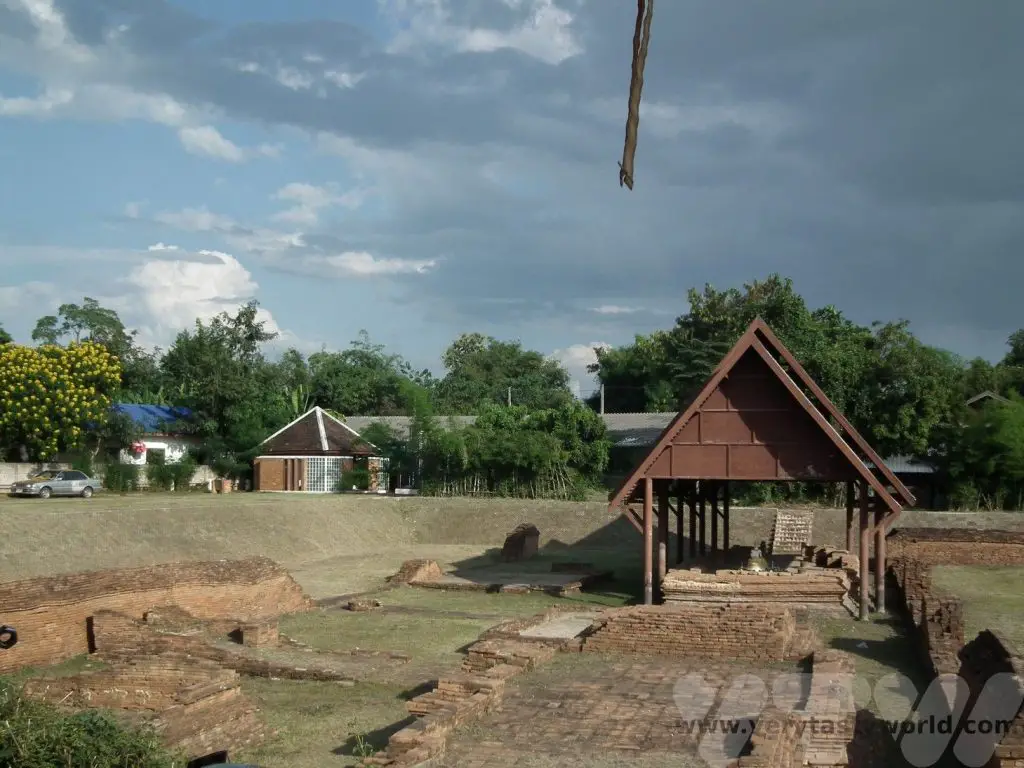
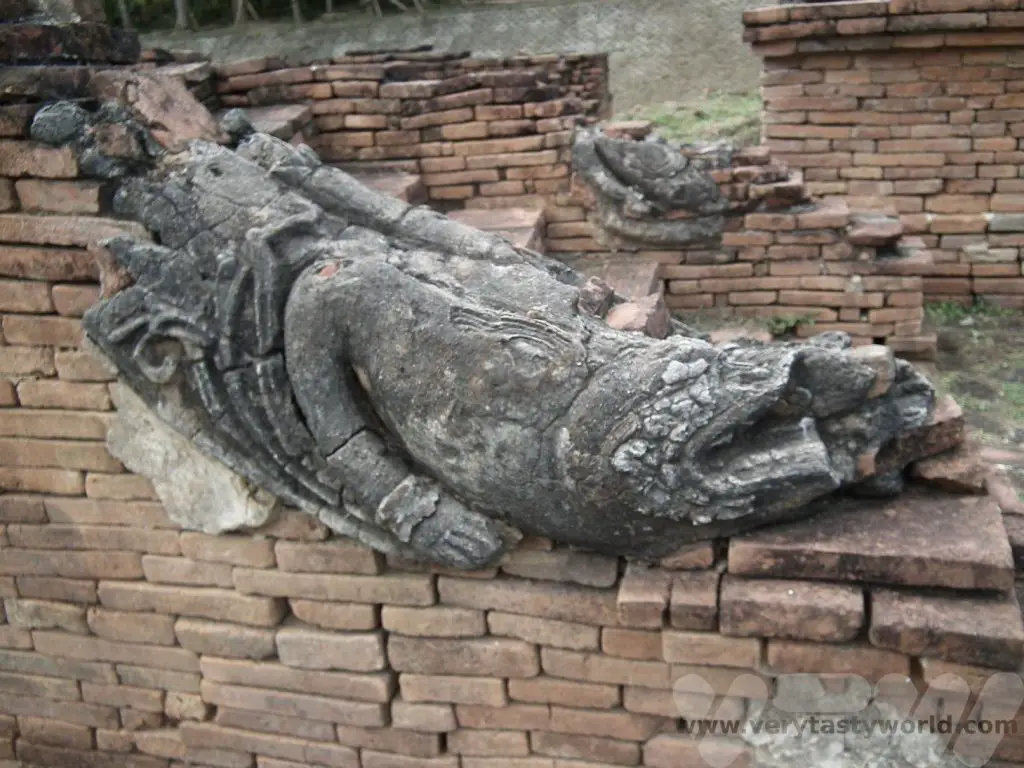
Wat Chedi Liam is the highlight of the complex. At over 30m tall, and taking the form of a pyramid structure, it has five main tiers. Each of these contain twelve Buddhas, three on each side, located inside their own alcove. It remained relatively unaffected by the floods over the centuries and remains a working temple.
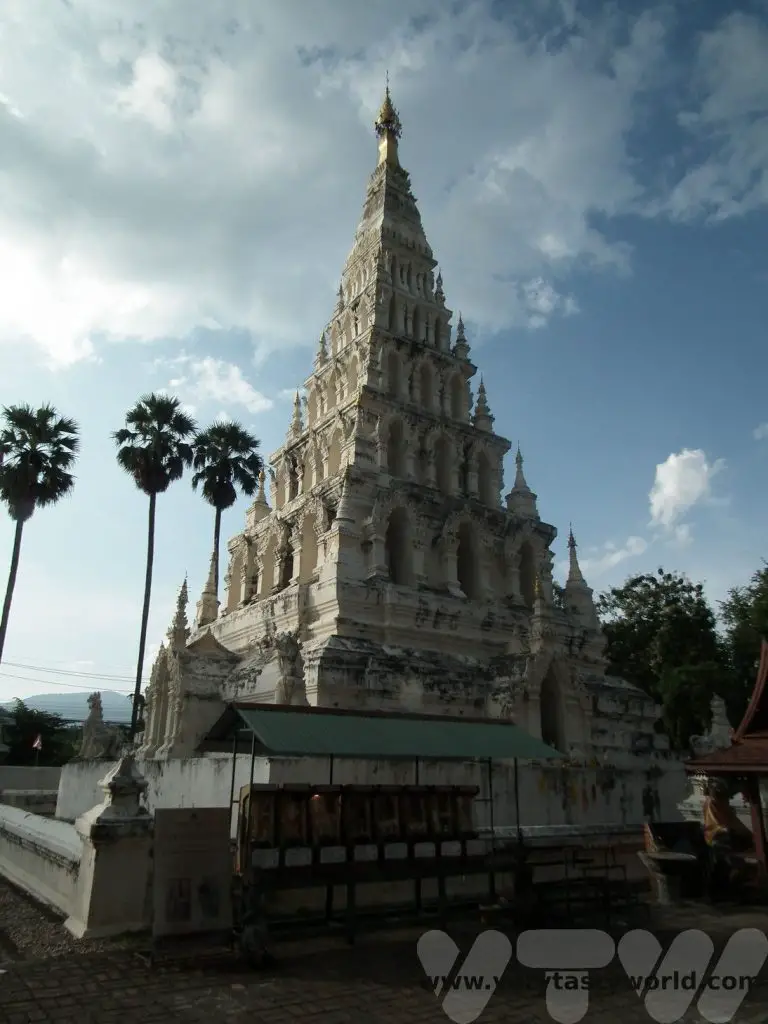
Activities in Chiang Mai’s Wider Area
Although it’s possible to spend quite some time exploring the city there are also loads of trips to take in the surrounding area.
This orchid farm was a pretty distraction for short while on the way to Mae Sa.
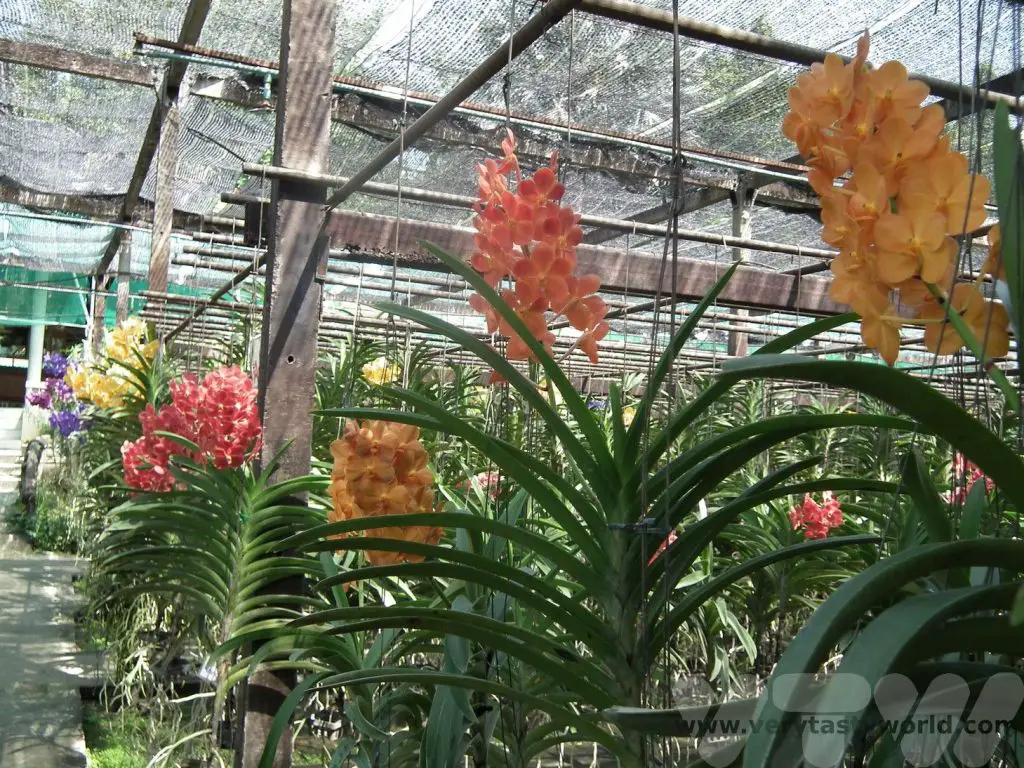
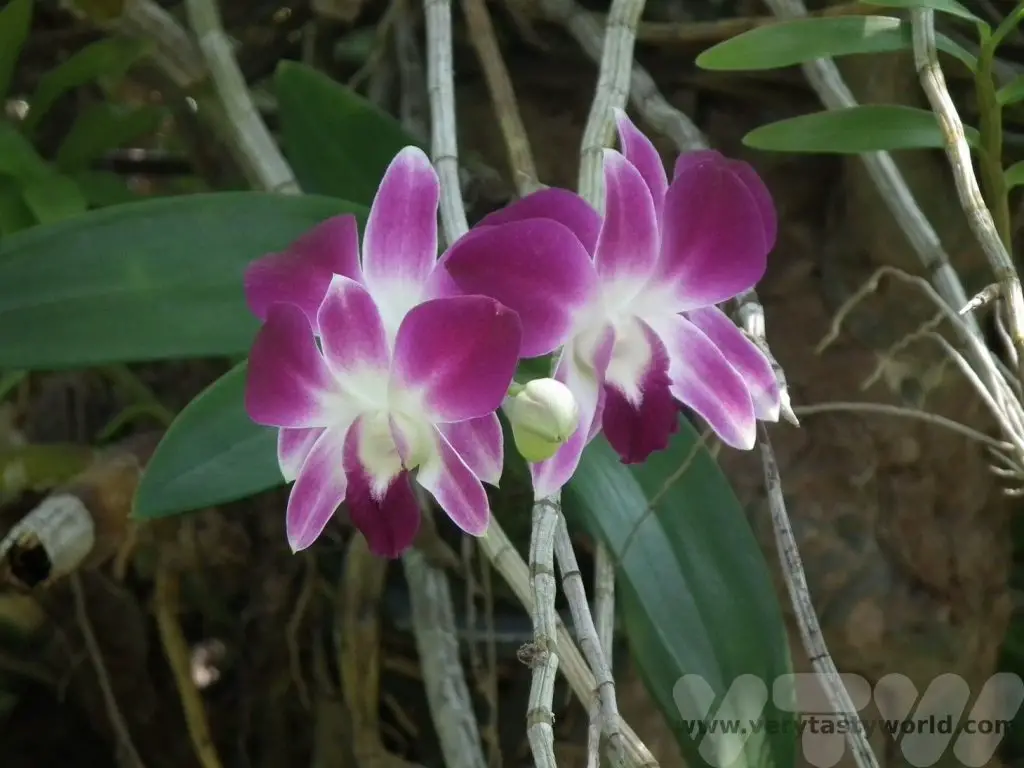
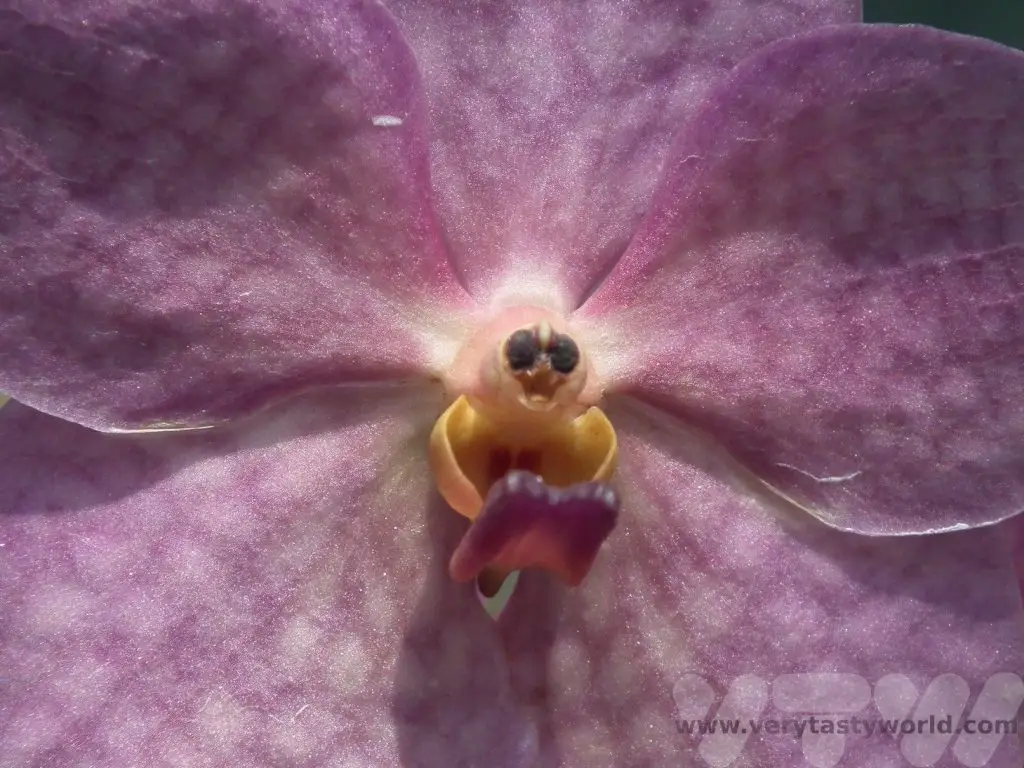
Mae Sa Waterfalls
Located in the Doi Suthep-Pui National Park, around 30km from Chiang Mai, Mae Sa offers a series of ten waterfalls spaced a few hundred metres apart. You can follow the pathway alongside the falls to enjoy a pleasant walk and swimming in the pools is allowed, if you desire. It’s not a challenging hike at all – just a pleasant stroll up a gentle incline. It gets quite crowded at the start of the trail but as you hike towards the upper falls the crowds melt away and you can enjoy the beauty of the surroundings. There are picnic spots along the way, so it’s possible to pack bathing suits and some tasty food to make a day trip if you fancy having a more relaxing time.
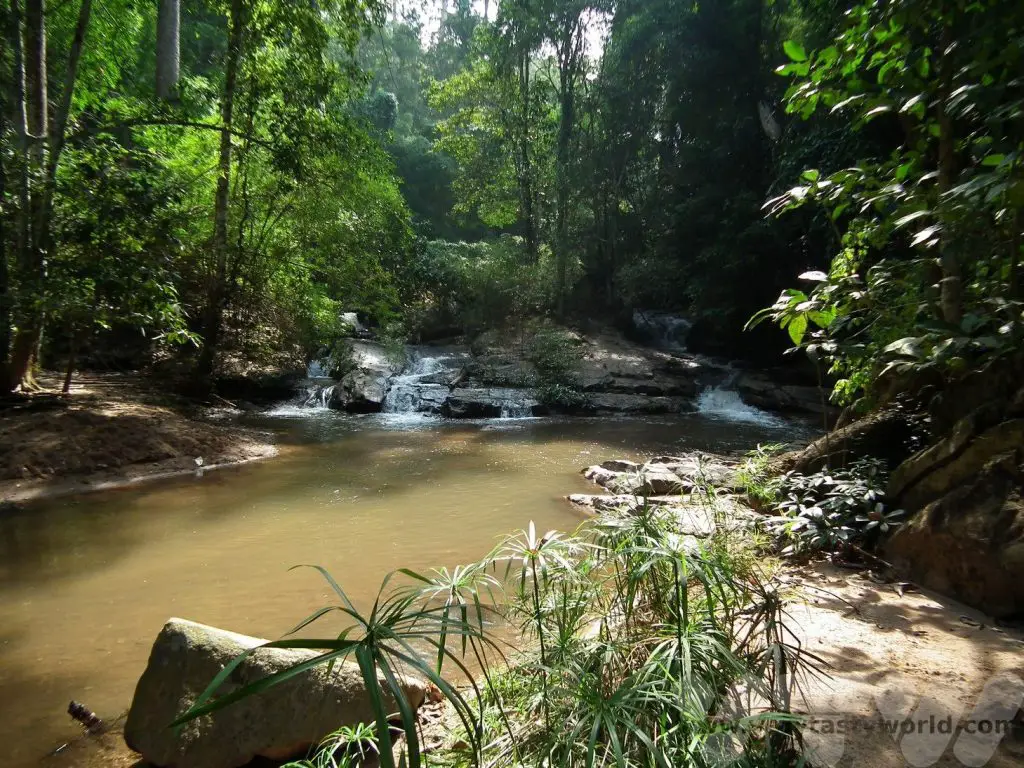
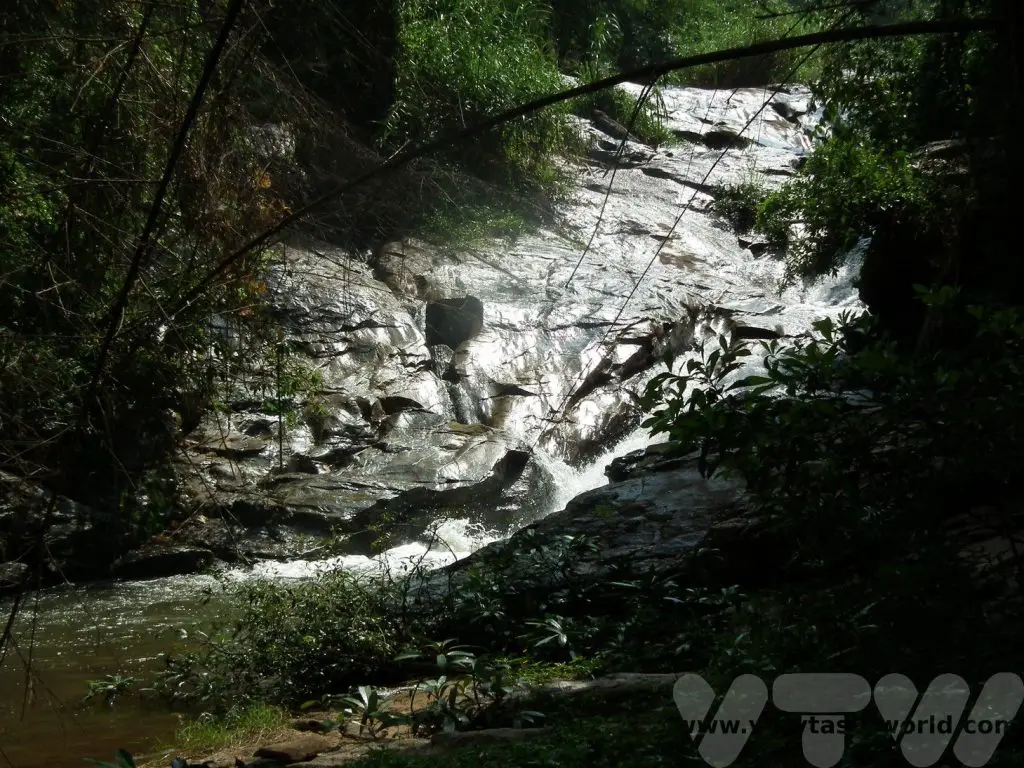
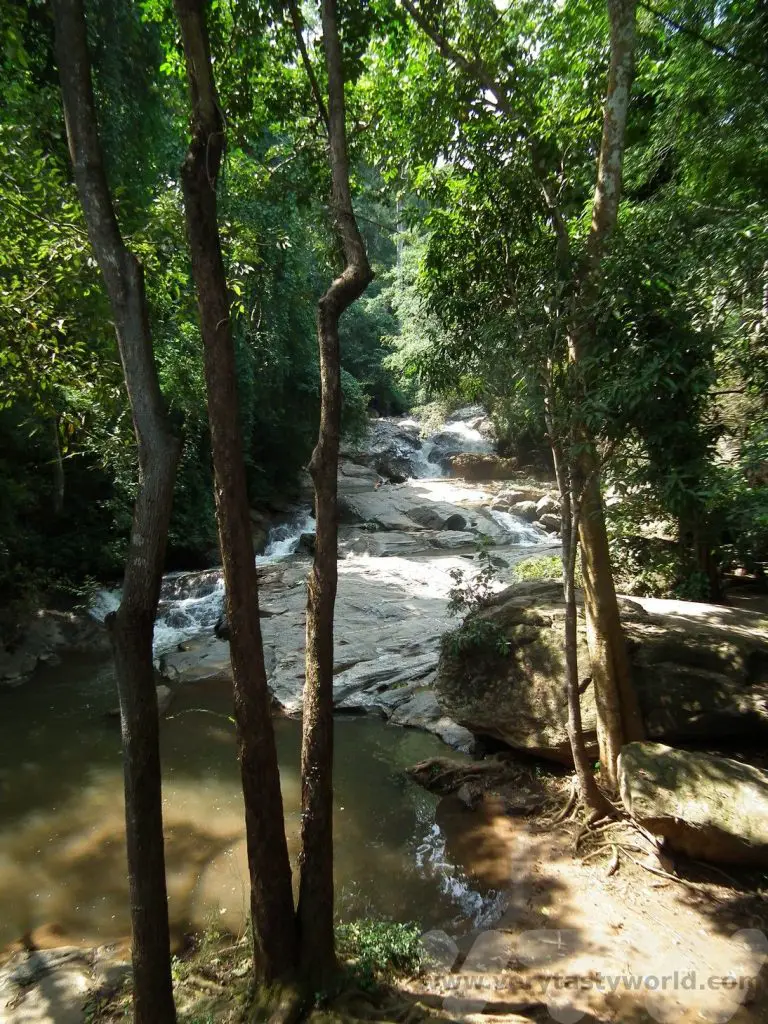
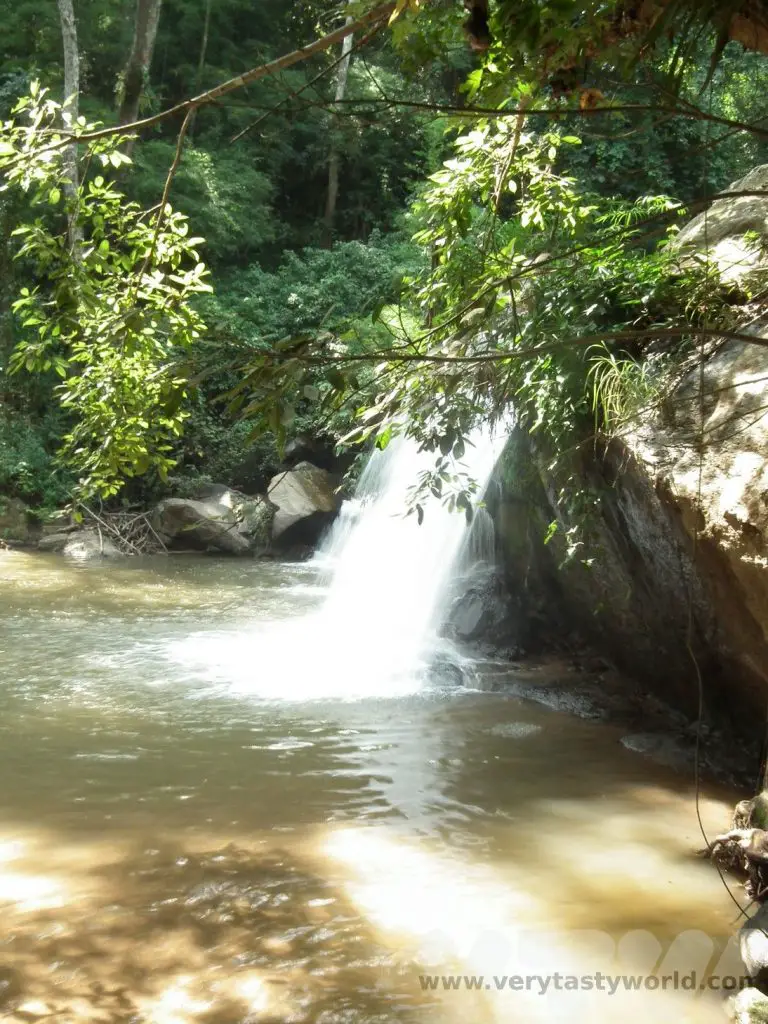
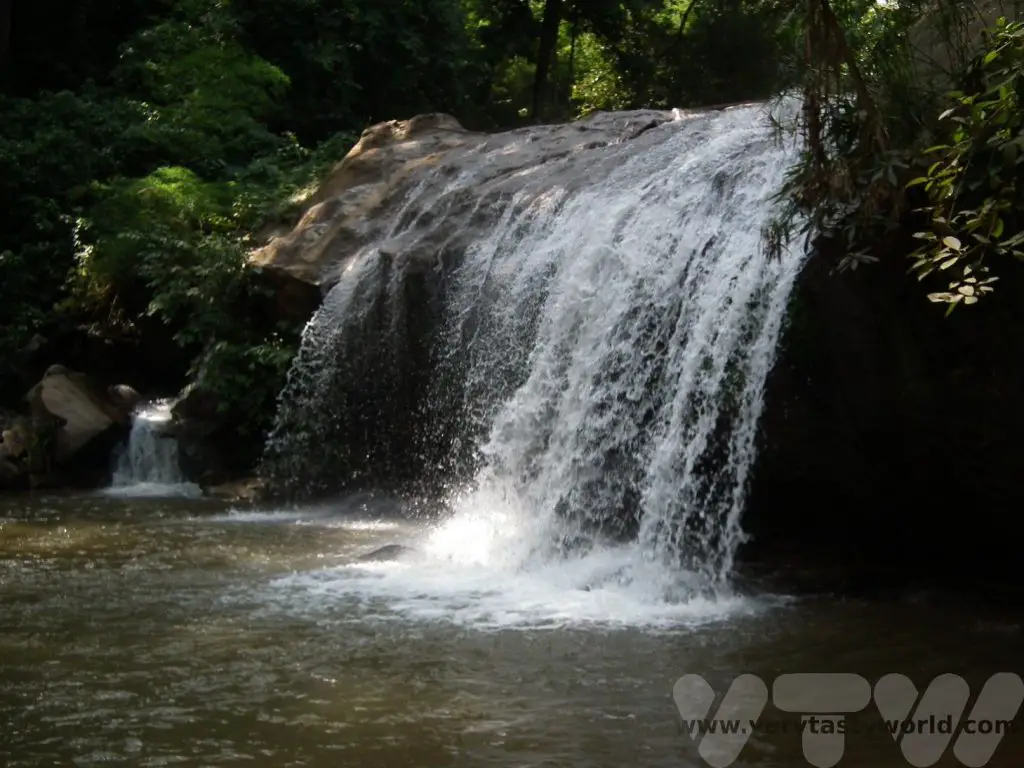
Elephant Sanctuary Visit
Visiting an elephant sanctuary is a very popular activity. There are loads in the area but do check which are responsible and ethical and make sure that they do not exploit the elephants. Many sanctuaries no longer allow elephant rides but focus on caring for and interacting with these remarkable creatures.
We visited a sanctuary a couple of hours away from Chiang Mai which is home to several elephants, all of whom have been rescued from the logging industry or from giving rides to tourists on iron chairs, a practice that really damages the elephants’ backs. When the sanctuary learns about elephants that are being mistreated they locate the creature and offer as much money as they can afford to convince the owners/abusers to sell their elephants. Each elephant has its own mahout (handler) who is responsible for its welfare. Set in 135 acres, the majority of the land is dedicated to growing food for the elephants. Tourists help provide much needed income to support the work of the sanctuary. Elephant riding (even bareback) is no longer allowed. We were able to meet the elephants and hand feed them – although some just helped themselves.
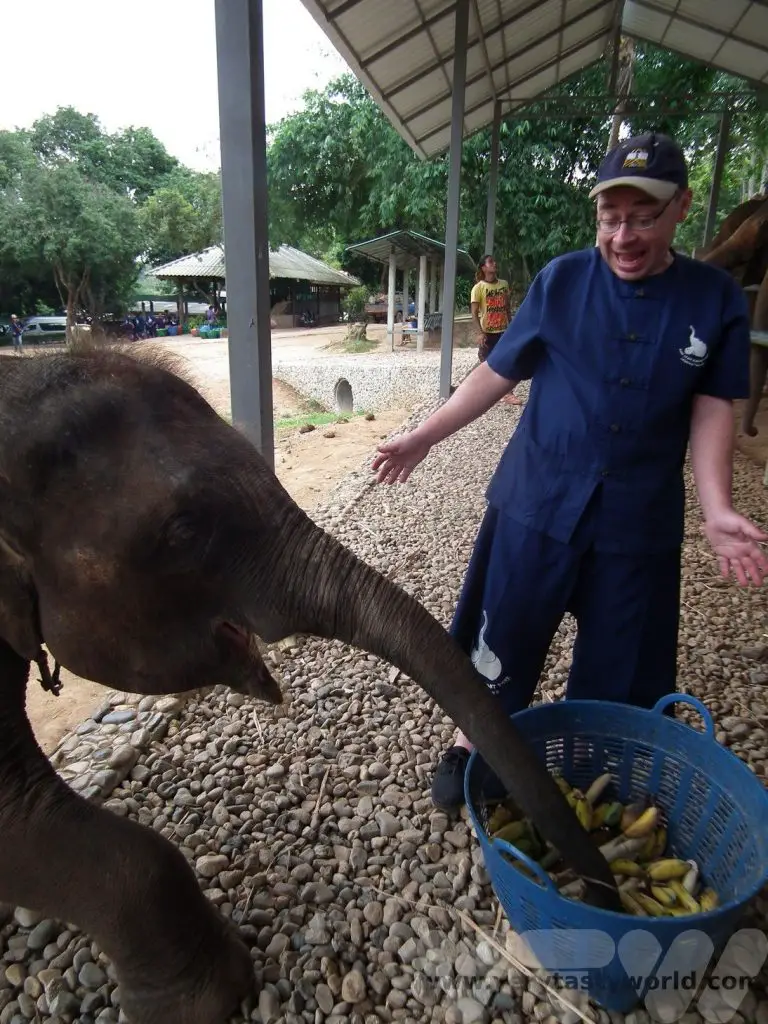
Elephants are highly intelligent creatures. Their brains weigh about 5kg. They are also emotionally intelligent; they recognise and interact with other elephants and have likes and dislikes just as we do. In fact, elephants that really hate each other need to be kept separated at the sanctuary. They also make judgements about the humans they interact with and, if they decide they don’t like someone, will refuse to co-operate with that person. Also – those cliches about elephants are true. They really have terrific memories. Thai people believe that you can judge an elephant’s character by the shape and quantity of its tail hair. Indeed, tail hairs are considered a sign of good fortune (and are sometimes kept as a lucky charm).
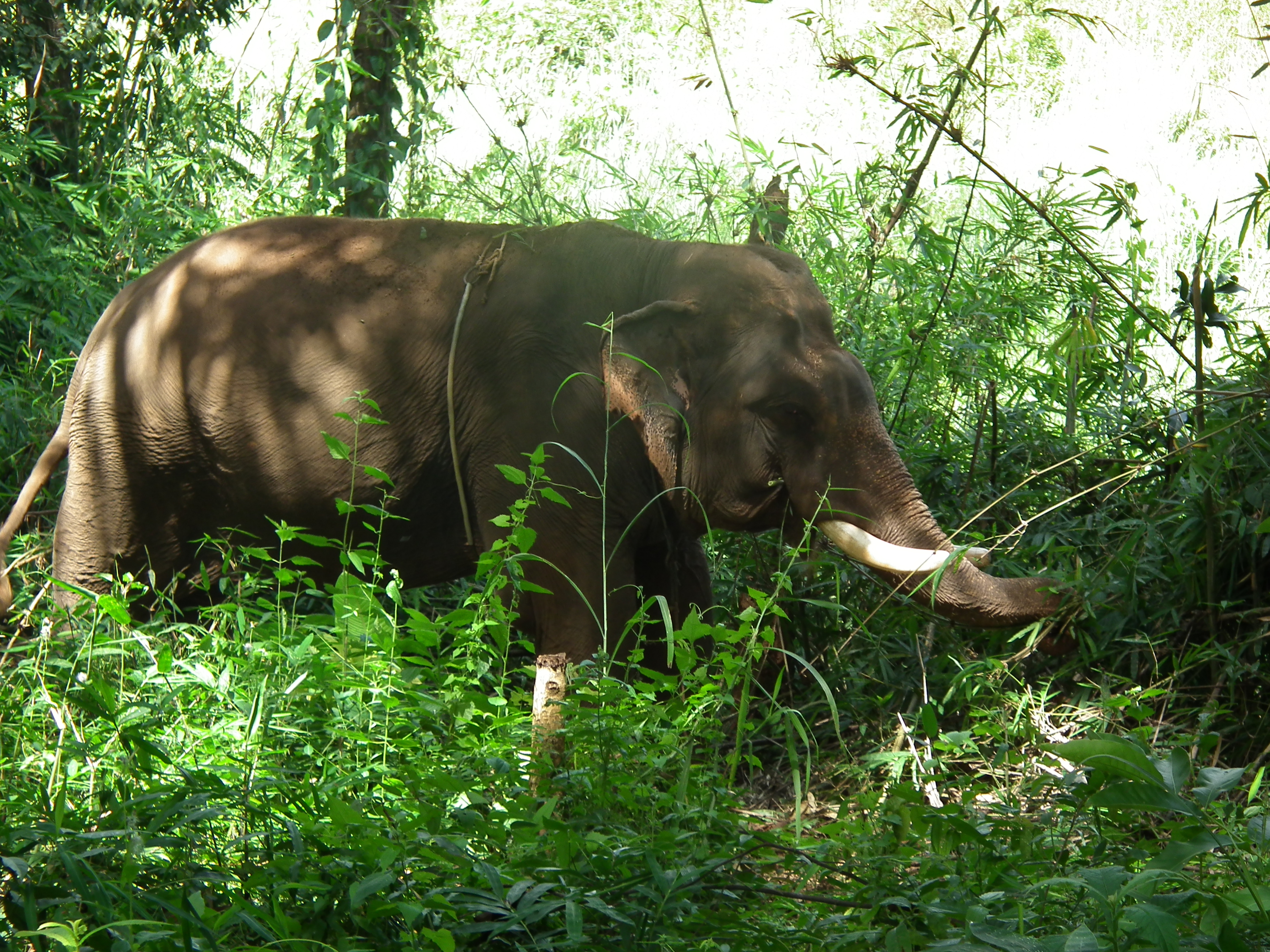
We went for a walk with an elephant called Tom Parr, a large male with long tusks. Tom Parr was very calm and co-operative, but was apparently scared of chickens and cars. He adored going into the jungle – many elephants who have been rescued from the logging industry have been traumatised and refuse to go back into the forest; they are never forced to go where they do not wish to.
Tom Parr knew very well that we had some sugar cane on him.
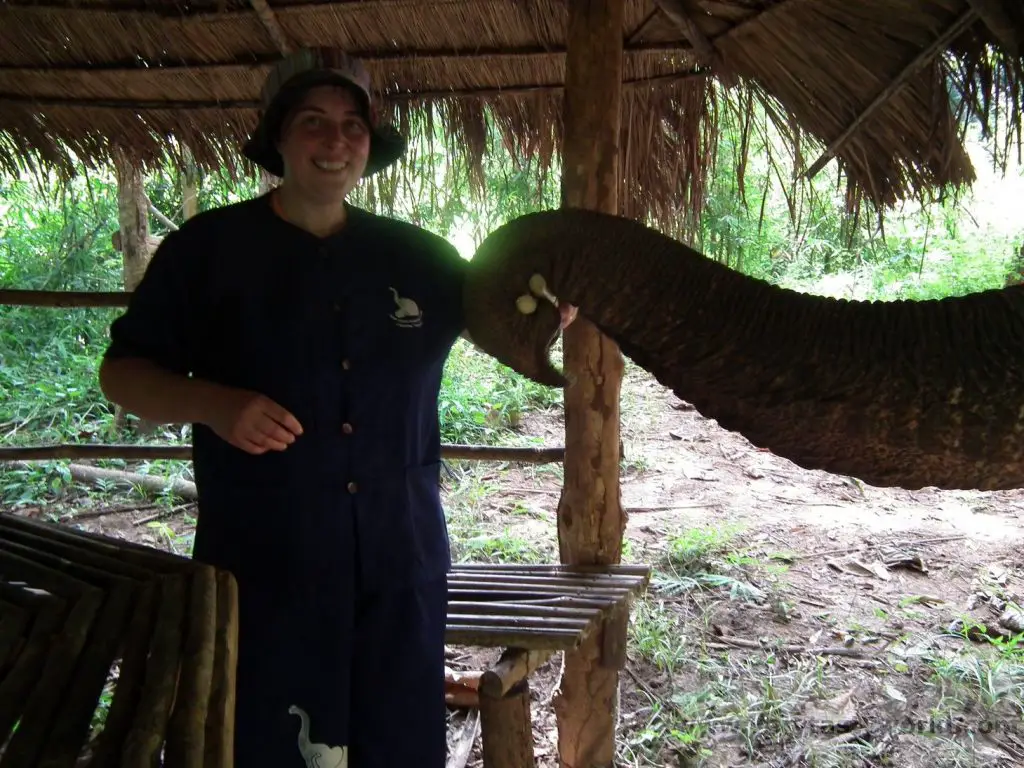
All the elephants are bathed at the sanctuary at least once a day. Tom Parr was very much looking forward to his bath and eagerly walked into the water and sat himself down. We joined him in the pool, which is fed by a local river, to give him a well-deserved wash. We showered him with water and scrubbed his skin and tusks. He was so happy. If he had been a cat, he would have been purring.
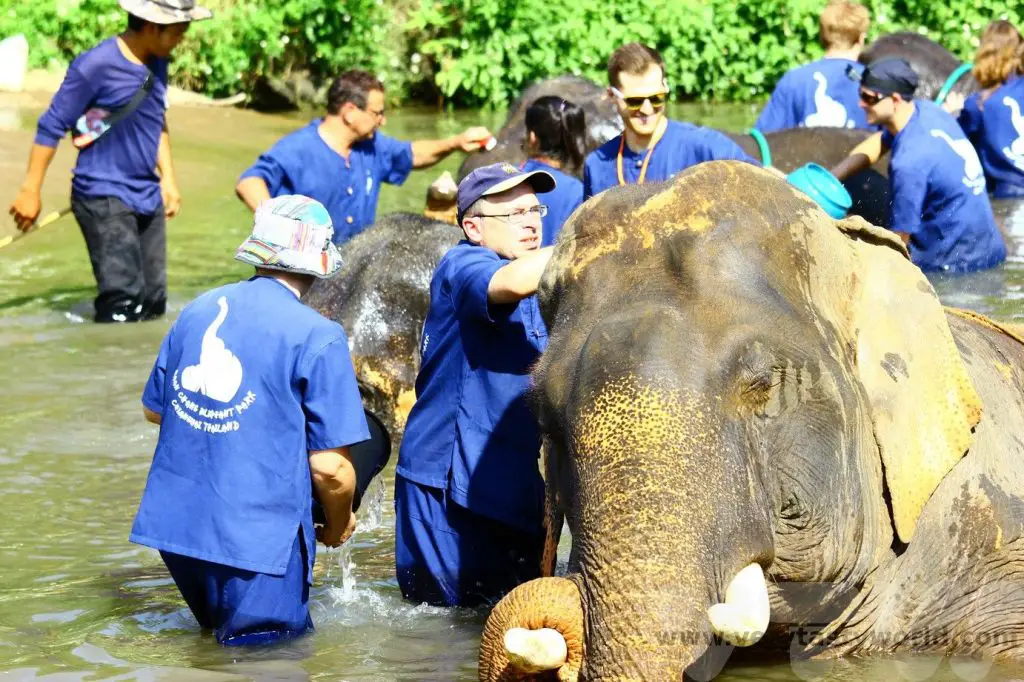
Throughout the experience we had been wondering whether we would need to ‘muck out’ the elephants at any time, something we had been quite prepared to do. However, the sanctuary had made arrangements such that the tourists’ exposure to poo was minimised. In fact, they even had a pooper-scooper chap on hand at the pond, ready to scoop any errant dung that the elephants generated into a bag and prevent the tourists getting too filthy. The sanctuary offers showers so you can wash down afterwards and change into your own clothes. The dung is often used to make paper.
A Chiang Mai Tour – Street Food and Markets
Back in the city, you’ll find that there are a number of bustling markets to explore, notably the night market which is a short walk away from the old city. On some nights of the week certain streets are closed to traffic and stalls pop up. These are really popular so expect crowds.
Of course, markets wouldn’t be markets without food stalls and Thai street food is amazing. The markets often have plastic tables and chairs nearby – they are not necessarily associated with any particular stall – so you can order your food and then take it to any table to enjoy at leisure.
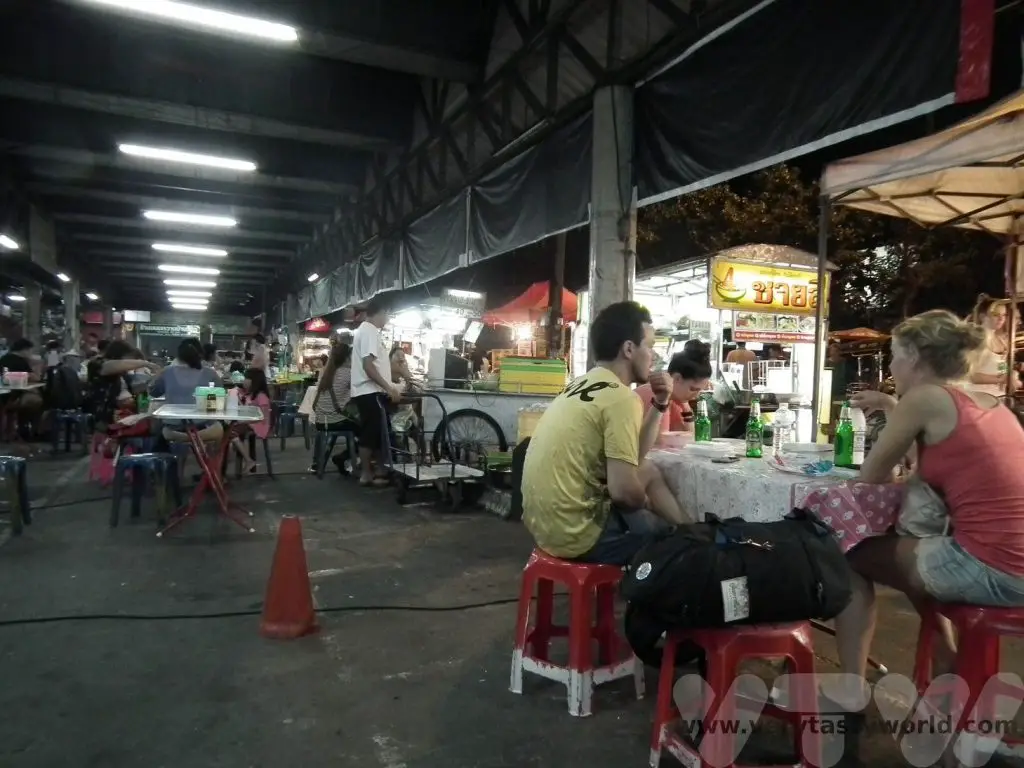
One of the best street food dishes is som tam – green papaya salad. Green papaya is shredded into a large wooden bowl and then pounded with beans, carrots and tomatoes. Sometimes little shrimp are added although you can ask for them to be excluded if you are vegetarian. Chillies, lime juice, palm sugar and fish sauce are added to the mix and pounded to release the flavours giving that characteristic Thai combination of sweet, sour, salt and spice. Be warned though, those teeny Thai chillies are hot! The dish is then adorned with crushed toasted peanuts for added crunch. On a warm, humid evening, it’s the perfect dish for a refreshing snack, preferably accompanied with a nice cold beer.
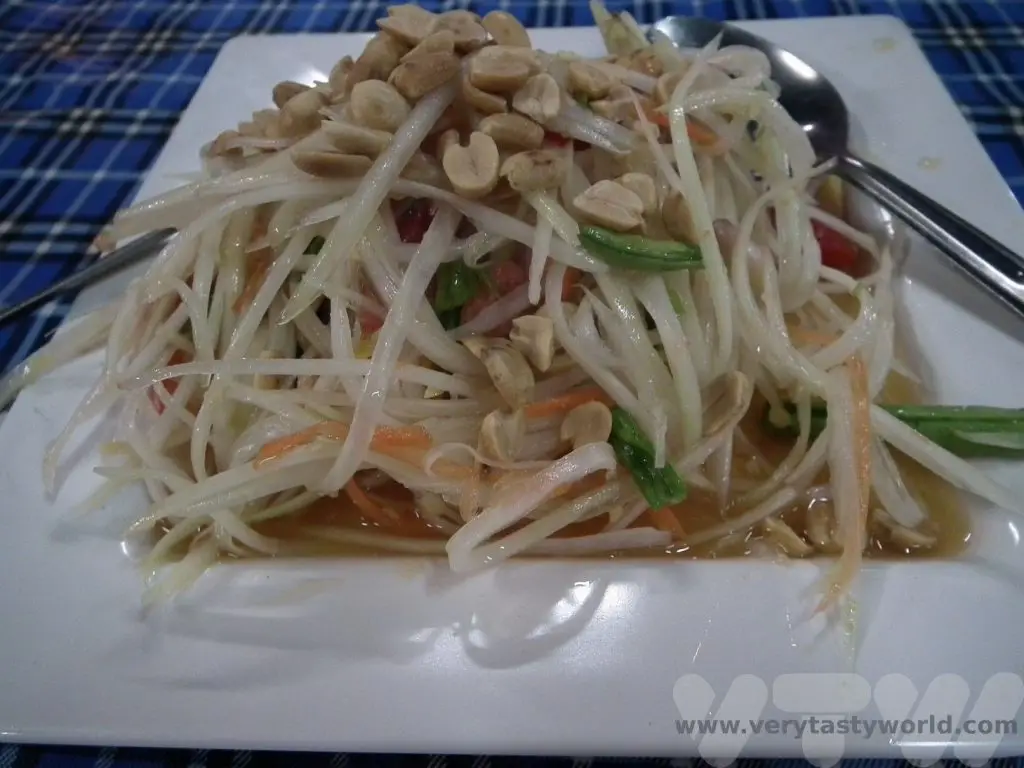
Related Posts You May Enjoy

RECIPE: How to Make Thai Green Curry
Thailand’s famous curries are amongst our all-time favourites. Kaeng khiao wan is a sweet green curry, kaeng phet is a hot red curry. It’s generally the chillies that determine the colour of the curry, although the milder yellow curry, kaeng kari, uses turmeric. Other popular curries include Massaman (which has Indian and Malay influences in its spicing), Panang (another Malay influence with peanuts as a key ingredient) and sour curry, kaeng som, (which has a more soupy consistency with lime and turmeric being important flavourings). Another, less well known, dish that uses both coconut milk and coconut cream is tom kah gai – chicken and galangal in a coconut milk soup.
Thai green curry is probably the dish we cook and eat most often at home. It’s easy to make and utterly delicious. Its translation means ‘curry green sweet’ – the green chillies comprise a significant part of the paste, which forms the base of the flavour, but this curry is slightly sweeter than other types of Thai curry. Some recipes call for a small amount of sugar to be added, others rely on the natural sweetness of the coconut milk. The flavour components revolve around green chillies, galangal, lemongrass, garlic, shallots, kaffir lime zest and coriander all blended together to form a thick, fragrant paste.
The curries are also remarkably easy to make. One thing that’s worth noting is that it is not at all shameful if you don’t make your curry paste. Even though you can get the ingredients and a blender and produce a paste that suits your particular taste, you will often see huge mounds of curry paste in Thai markets ready made for the locals to buy and use. This was an enormous pile of red paste in a market on the outskirts of Bangkok.
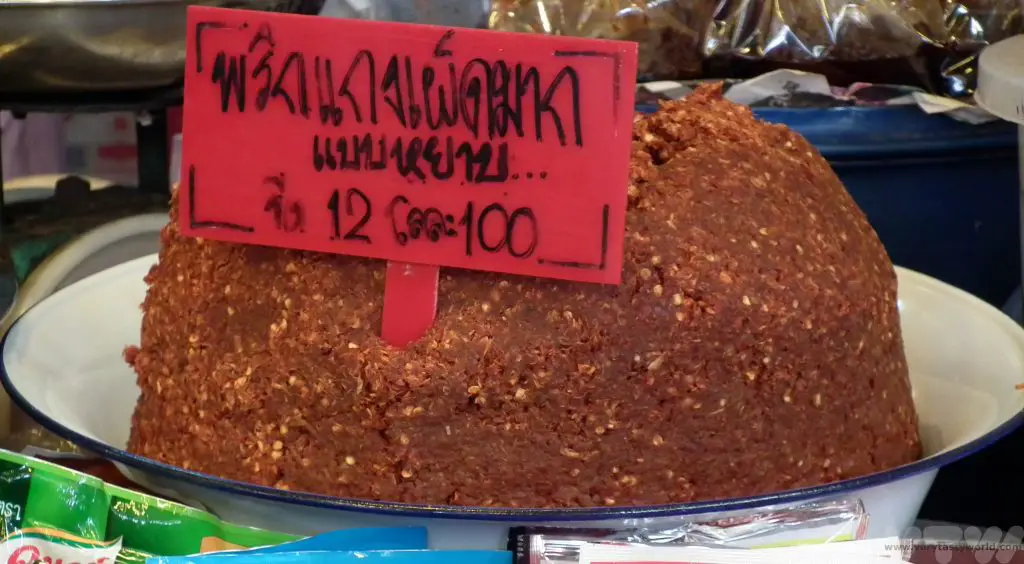
Many supermarkets stock good quality paste these days (as opposed to weaker versions aimed at western markets).
We’ve been using Mae Ploy for years as you can get it in industrial sized tubs which will give you several portions and it lasts for ages (store it in the fridge once opened). Although, to be fair, it doesn’t usually last very long in our household.
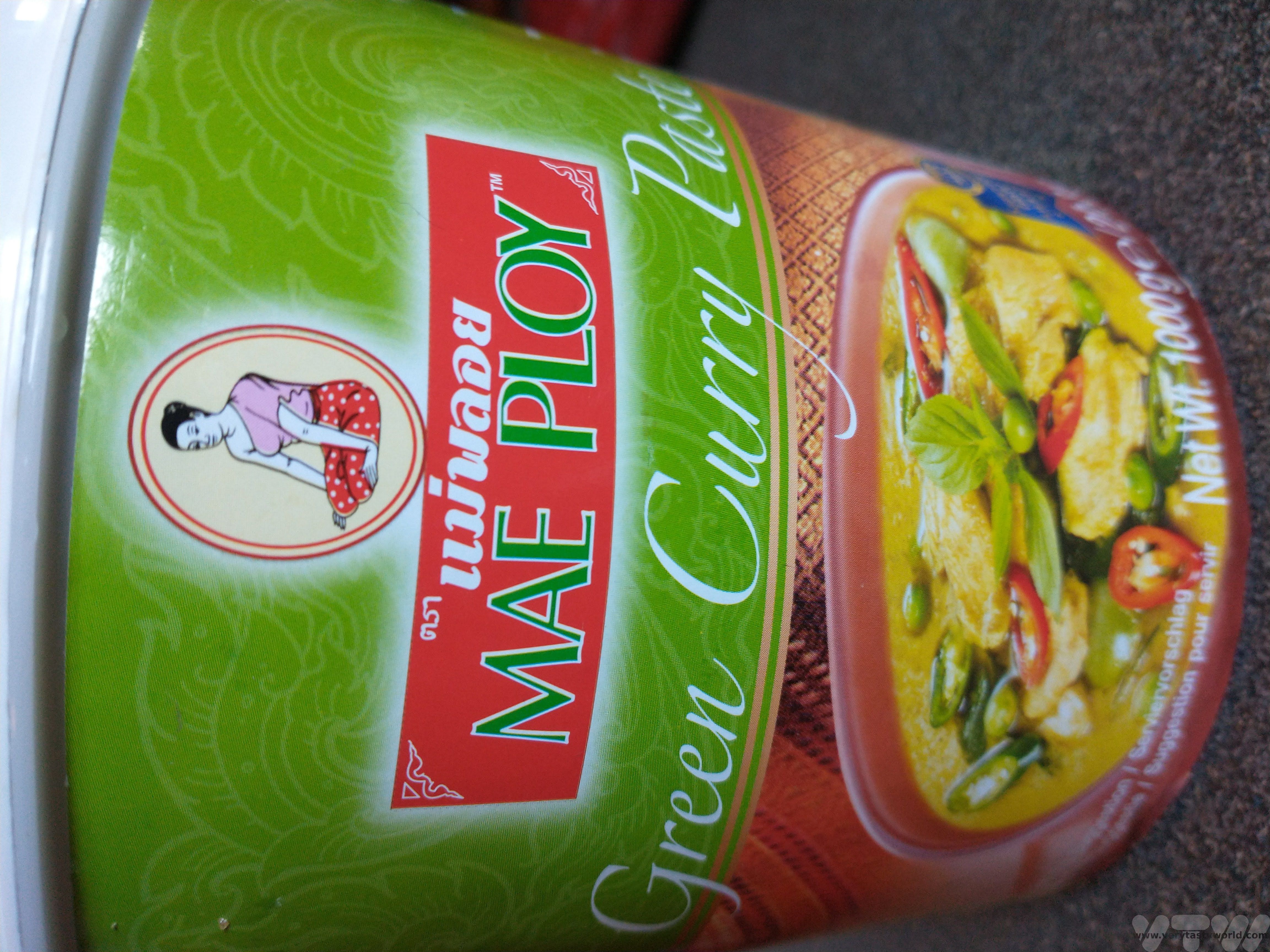
There are approximately three million recipes for Thai curry on the internet. Here’s ours:
How To Make Thai Green Curry
INGREDIENTS
500g chicken thighs, chopped into pieces (thigh meat is definitely recommended over breast meat as it has so much more flavour). Beef and pork also work well with this curry.
Handful of julienned vegetables – e.g. bell peppers, chillies, bamboo shoots, baby aubergine (vegetarians can use these in greater quantities instead of the meat).
A good dollop of green curry paste to suit your preferred level of spicy heat.
1 can of coconut milk.
Splash of fish sauce (probably around a tablespoon).
Bunch of Thai basil (Thai basil is very different to Mediterranean basil), chopped.
A lime.
METHOD
Put a small amount of oil into a pan and add the curry paste. It’s really up to you how much paste to add – if you like more spice, then add more, if you prefer a milder curry, add less. Fry it off to a couple of minutes then add the coconut milk.
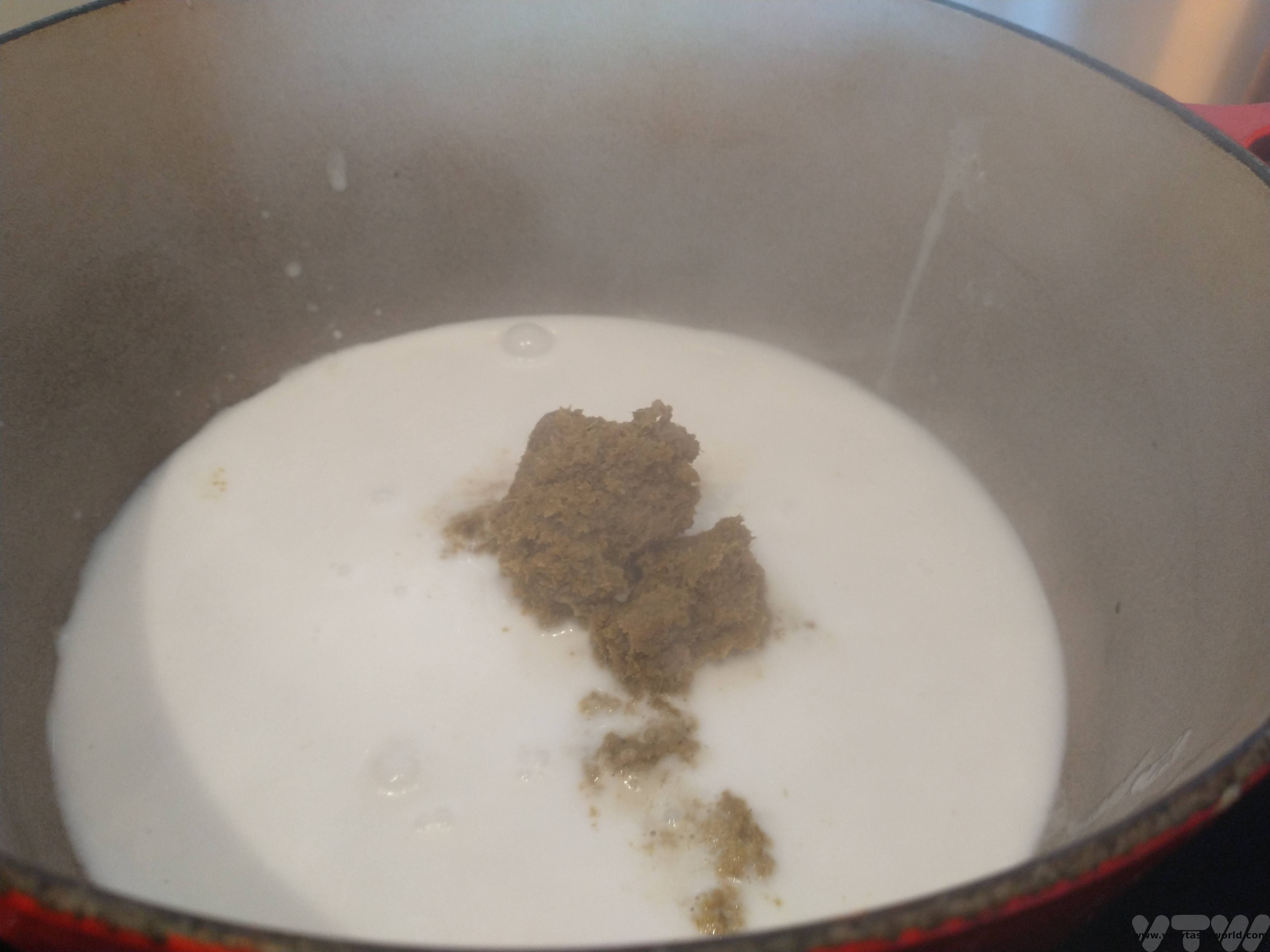
Add the raw chicken and bring to the boil.
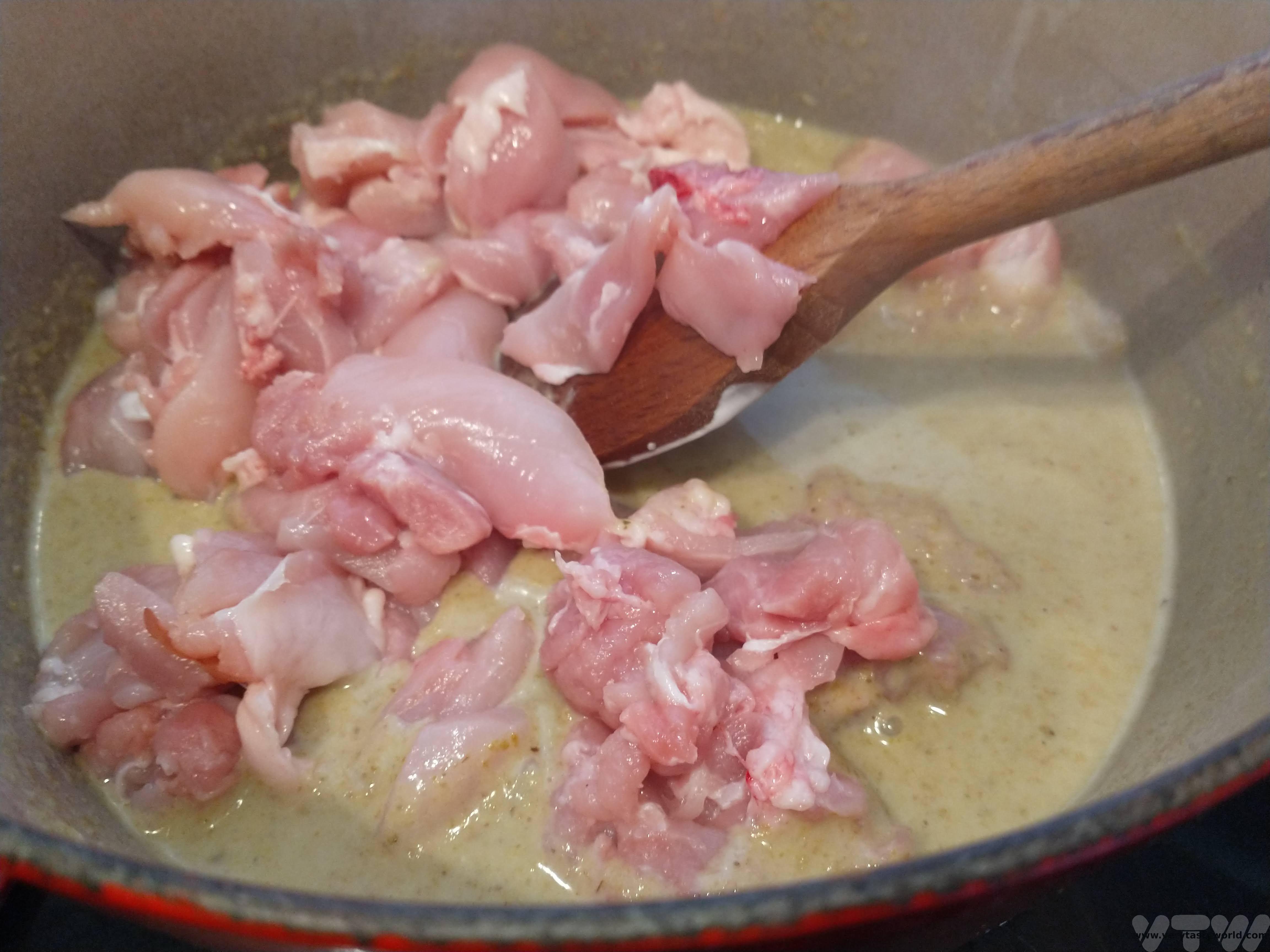
Then turn the heat down and let the chicken simmer for around 15 minutes.
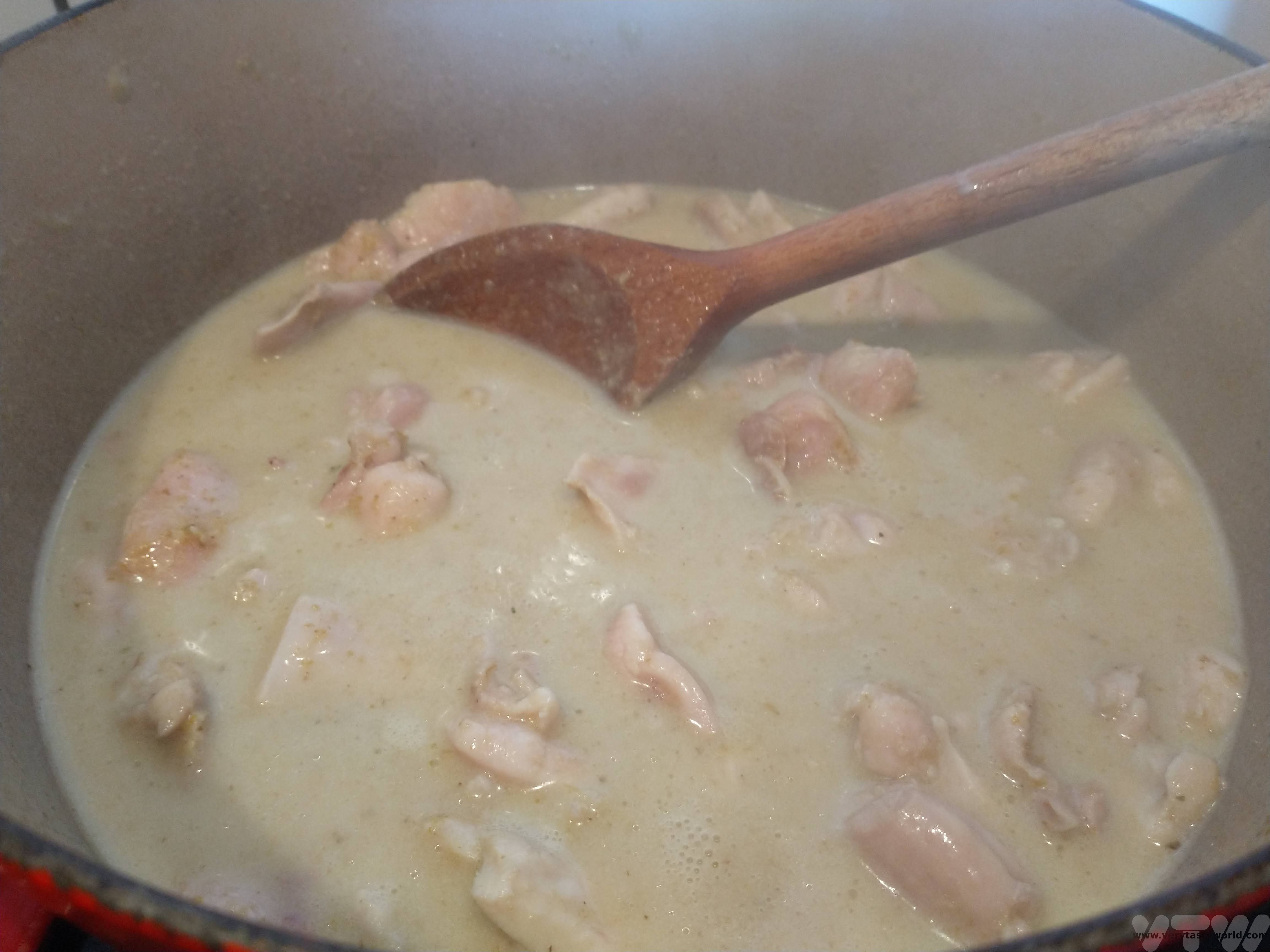
Add the vegetables and allow them to cook. Add the fish sauce and Thai basil. Allow to simmer for a few more minutes.
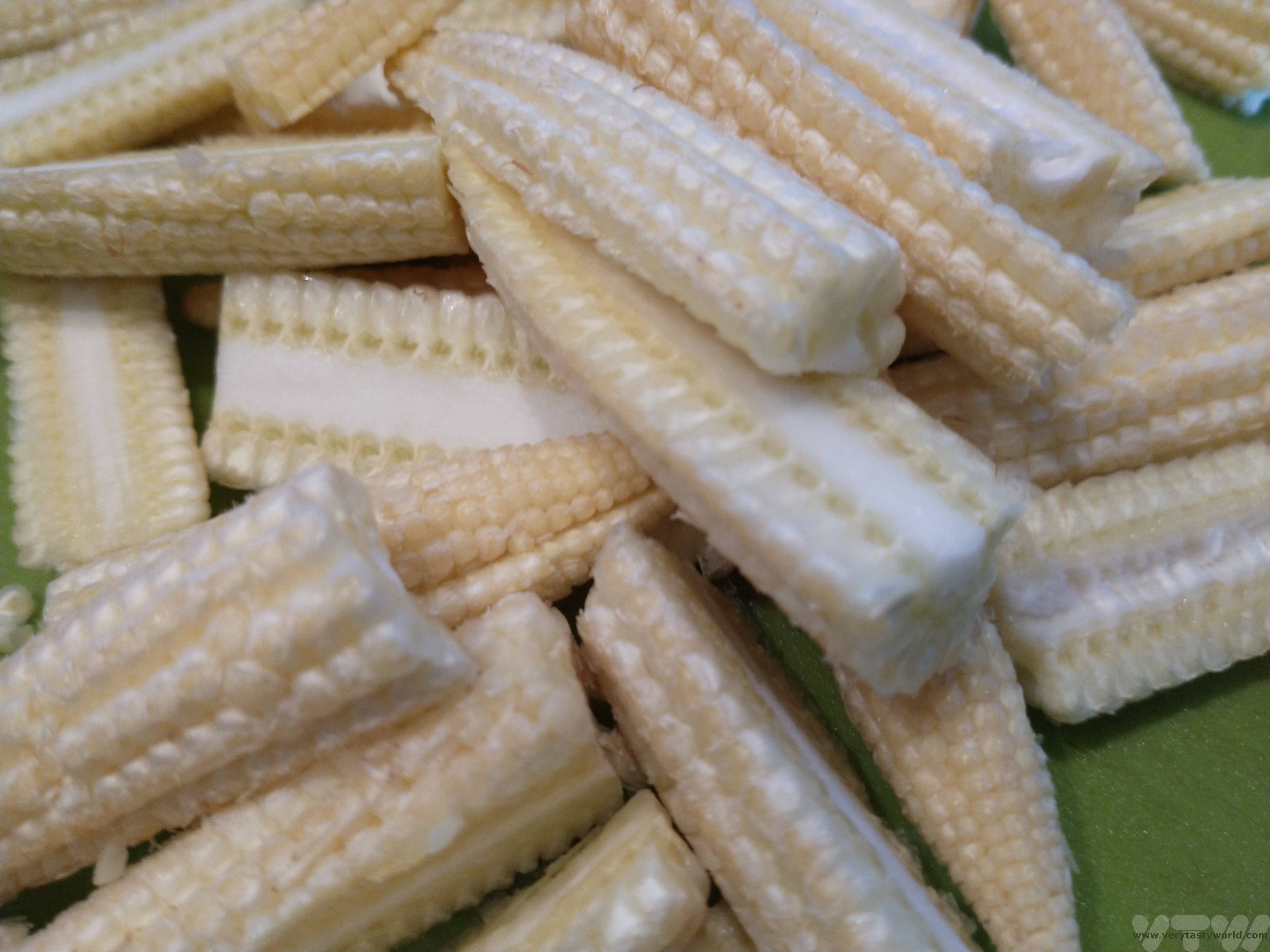
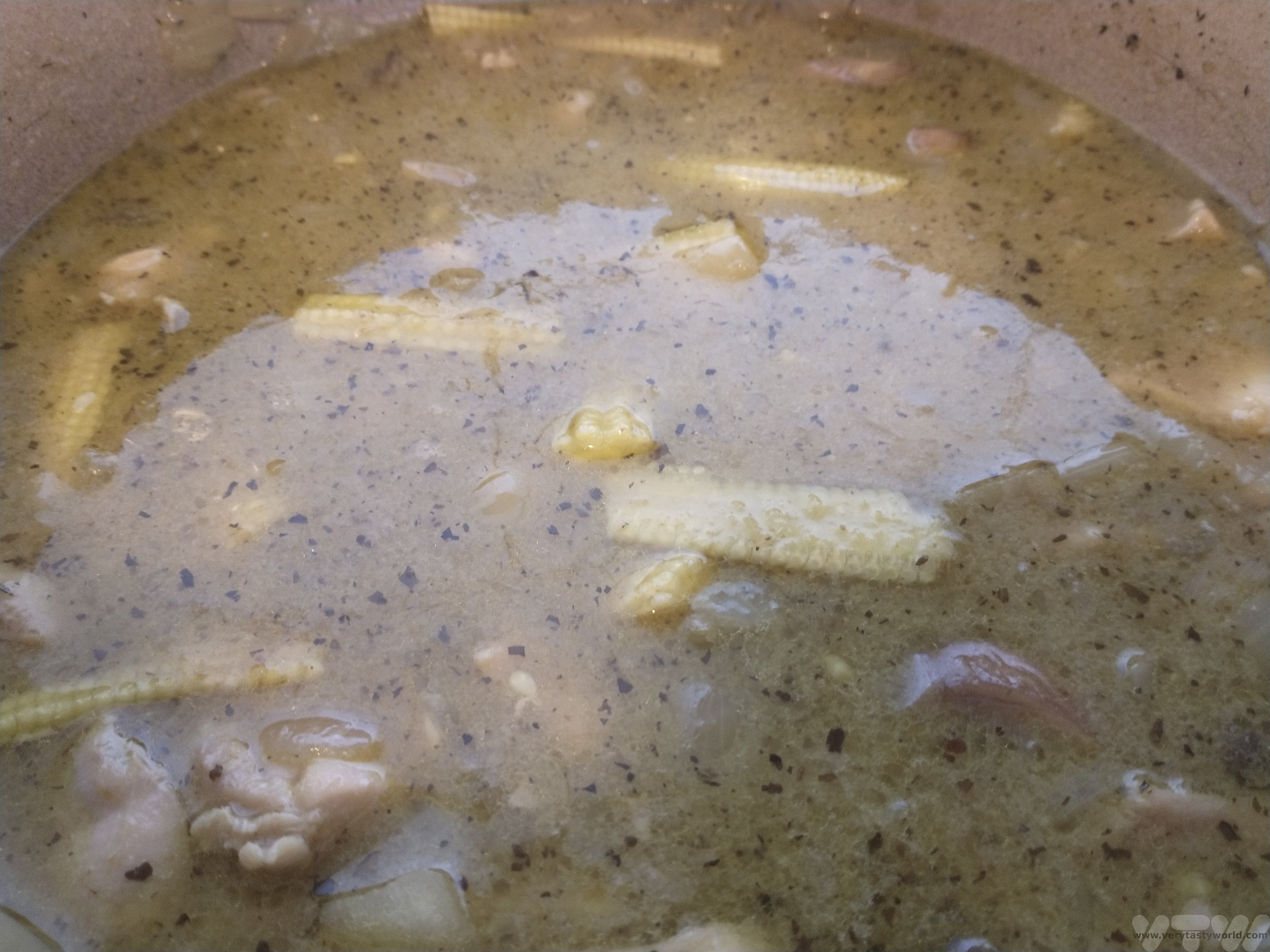
We often add a spritz of lime juice at the end (always at the end) to add some zing.
Serve with jasmine rice.
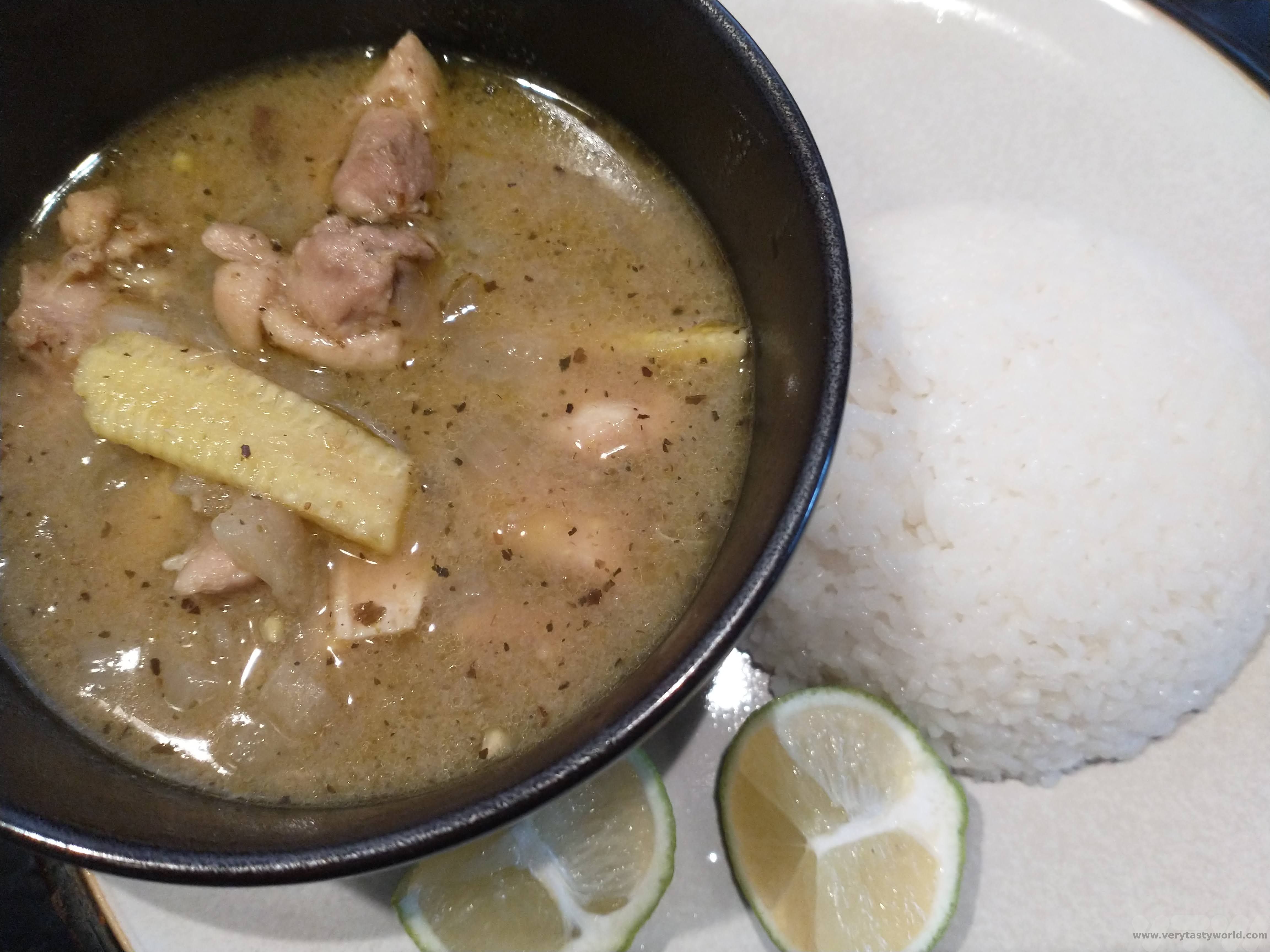
Scoff. Serves four.
Variations: One of the marvellous things about Thai cuisine is that it has a wonderful combination of sweet, sour, salt and hot flavours. Some Thai green curry recipes incorporate a couple of tablespoons of palm sugar (brown sugar can be substituted if palm sugar isn’t available) to the sauce. If you have a sweet tooth you can add it in as an option, although we don’t as we tend to prefer the sour flavours that the lime offers. This recipe is very flexible in terms of you being able to tailor it to your own palette: the coconut milk gives you sweetness (but you can add sugar if you want more), the curry paste gives heat, the fish sauce provides salt and the lime gives the sour flavours – perfect seasoning.
Related Posts You May Enjoy

RECIPE: How To Make Lao Larb
Lao larb, also known as moo larb, is the perfect dish for a hot summer’s day. It’s incredibly easy to make and really refreshing. It’s kind of a meat salad which hails from South East Asia; we first tried it in Lao , where it holds the status of national dish, but we have also eaten it in Thailand, and quickly became hooked. Even better, all the ingredients are really easy to find in our home country. There’s a tiny bit of preparation needed prior to assembling the dish, so worth thinking about making it ahead of time. The following recipe will feed four as a starter or two hungry people.
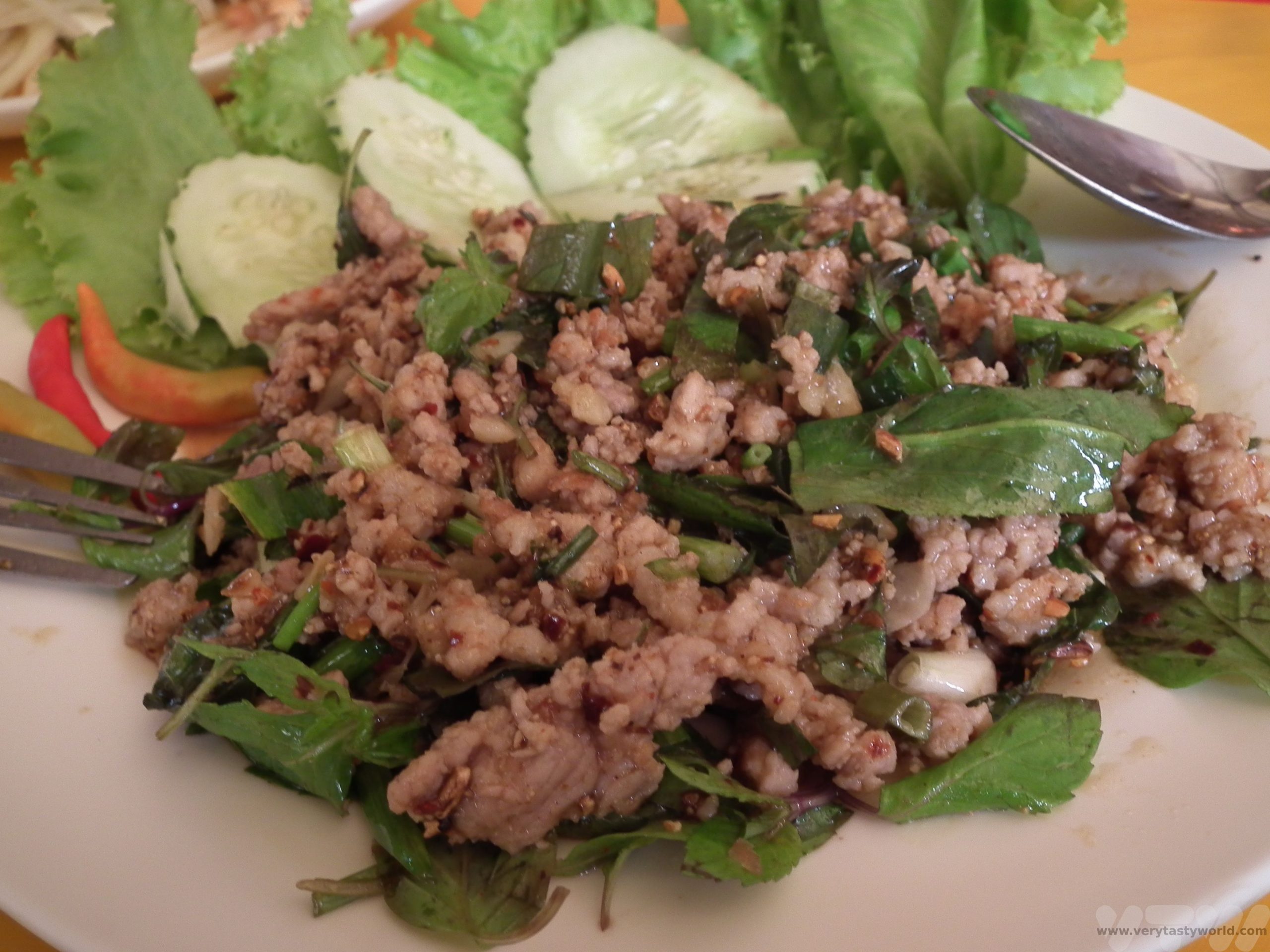
INGREDIENTS
300g pork mince. (The ‘moo’ of moo larb is pork.) Chicken mince also works really well and quorn mince or mushrooms can provides a vegetarian alternative. Lamb isn’t recommended as it’s quite fatty and the fat tends to congeal a little when it cools, which doesn’t provide a very nice texture.
1 large red onion (or 2 small)
Generous handful of fresh mint
Generous handful of fresh coriander
Freshly milled black pepper
1 or 2 juicy limes
Generous splash of fish sauce (vegetarians can use veggie fish sauce or a combination of soy sauce with a dash of vinegar) – around half a tablespoon
Optional: chilli flakes, toasted rice, teaspoon of sugar, Thai basil leaves for garnish
METHOD
You need to allow enough time for the mince to cook and cool before assembling the dish. It’s the perfect ‘make in advance’ dish.
Cook the mince. Pour a little oil into a pan and fry until the meat is cooked through. Allow it to cool.
Finely chop the onion, coriander and mint and add to the mince.
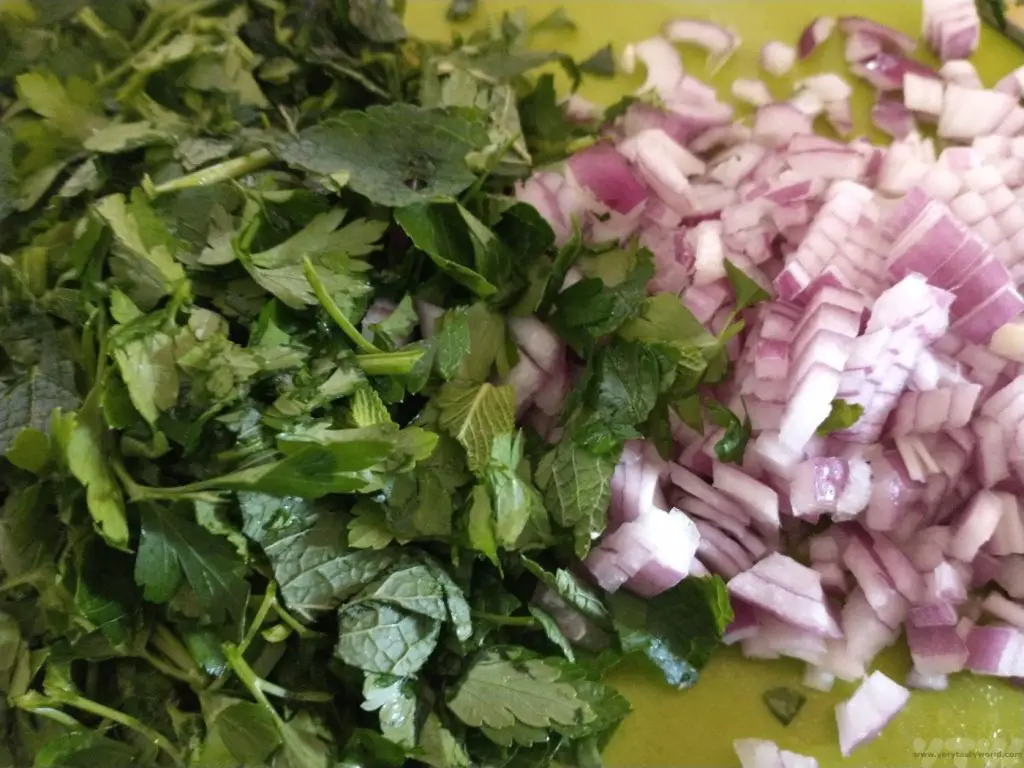
Add the fish sauce, lime juice and black pepper to taste. We really like coarsely ground black pepper so grind ours in a pestle and mortar. This is really where you can adapt the flavour to your personal taste.
Mix well. It’s fine to make in advance and let the flavours infuse.
Serve with steamed rice and a salad garnish.
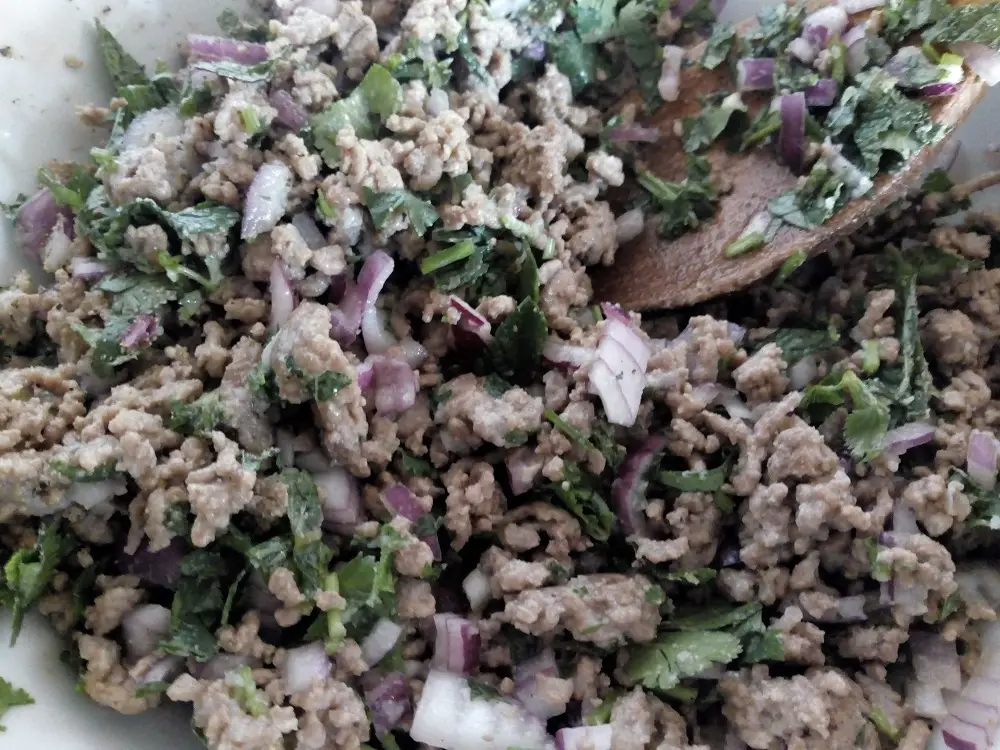
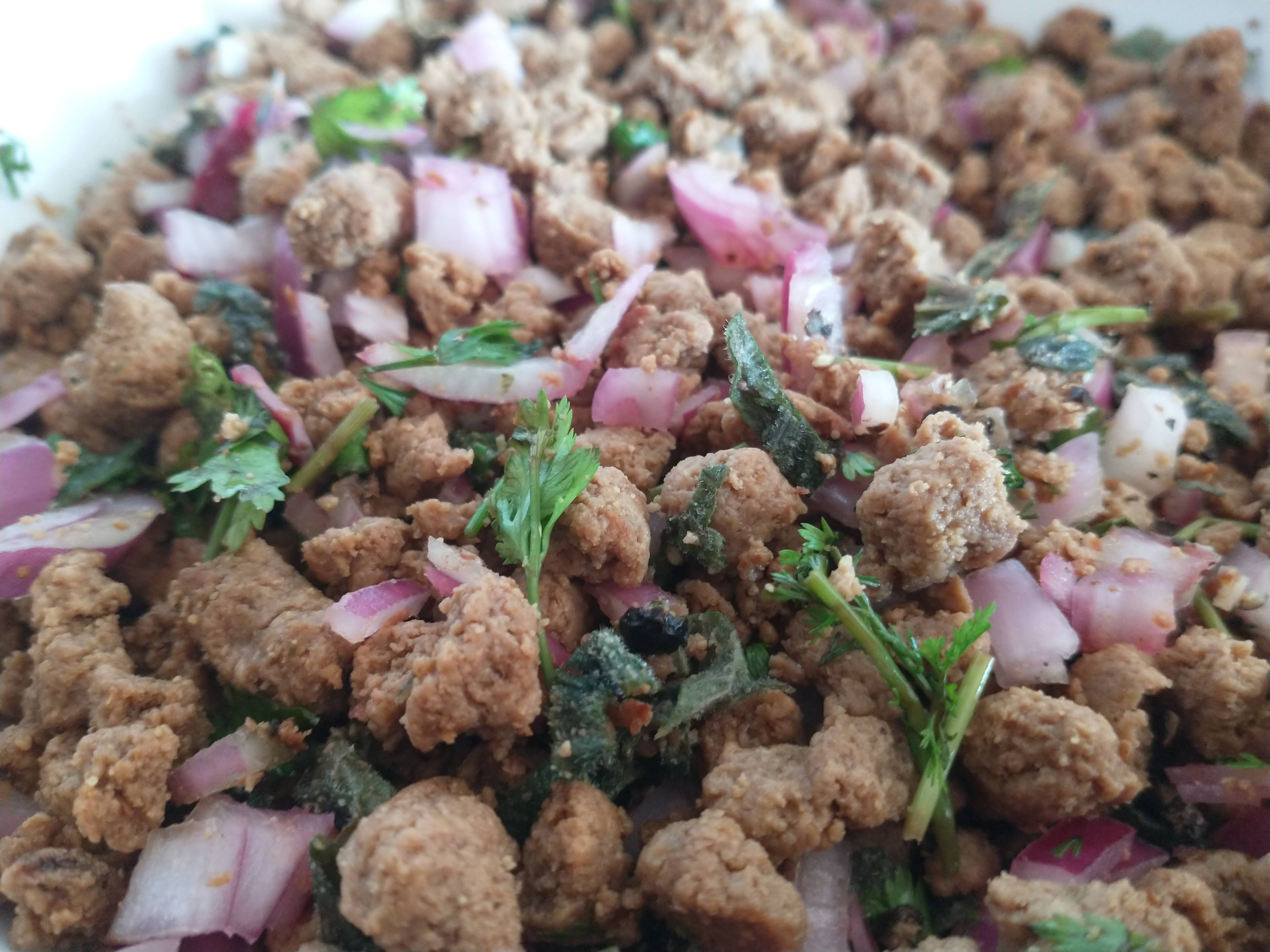
VARIATIONS
One of the lovely things about this dish is that you really can adjust it to your taste. There are some variations. If you like heat, add chilli flakes (flakes are better than fresh chilli). This was one of the dishes we tasted in Lao that wasn’t searingly hot, the spice coming from the pepper rather than chilli, but it’s fine to add more heat if you like it. If you’d like to add some sweetness, sprinkle in a little sugar and mix in.
There is also an important and popular variation where you can add roasted ground rice powder for an additional nutty complexity to the flavour and texture. It’s very simple: place a handful of uncooked Thai rice in a dry frying pan and roast the rice for 10 minutes or so, moving about in the pan until the rice is brown. Then transfer to a pestle and mortar or a spice grinder and grind to a powder.
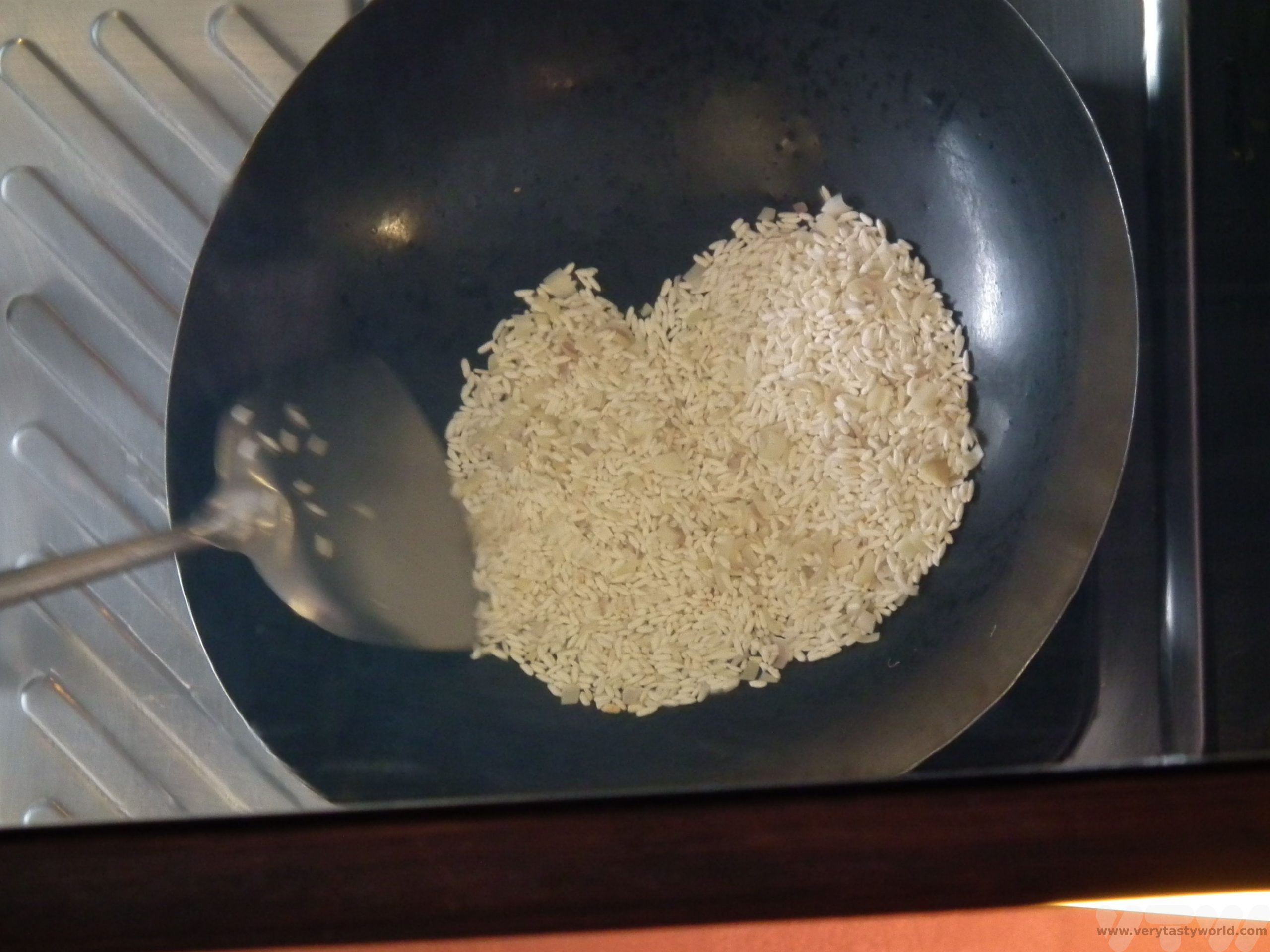
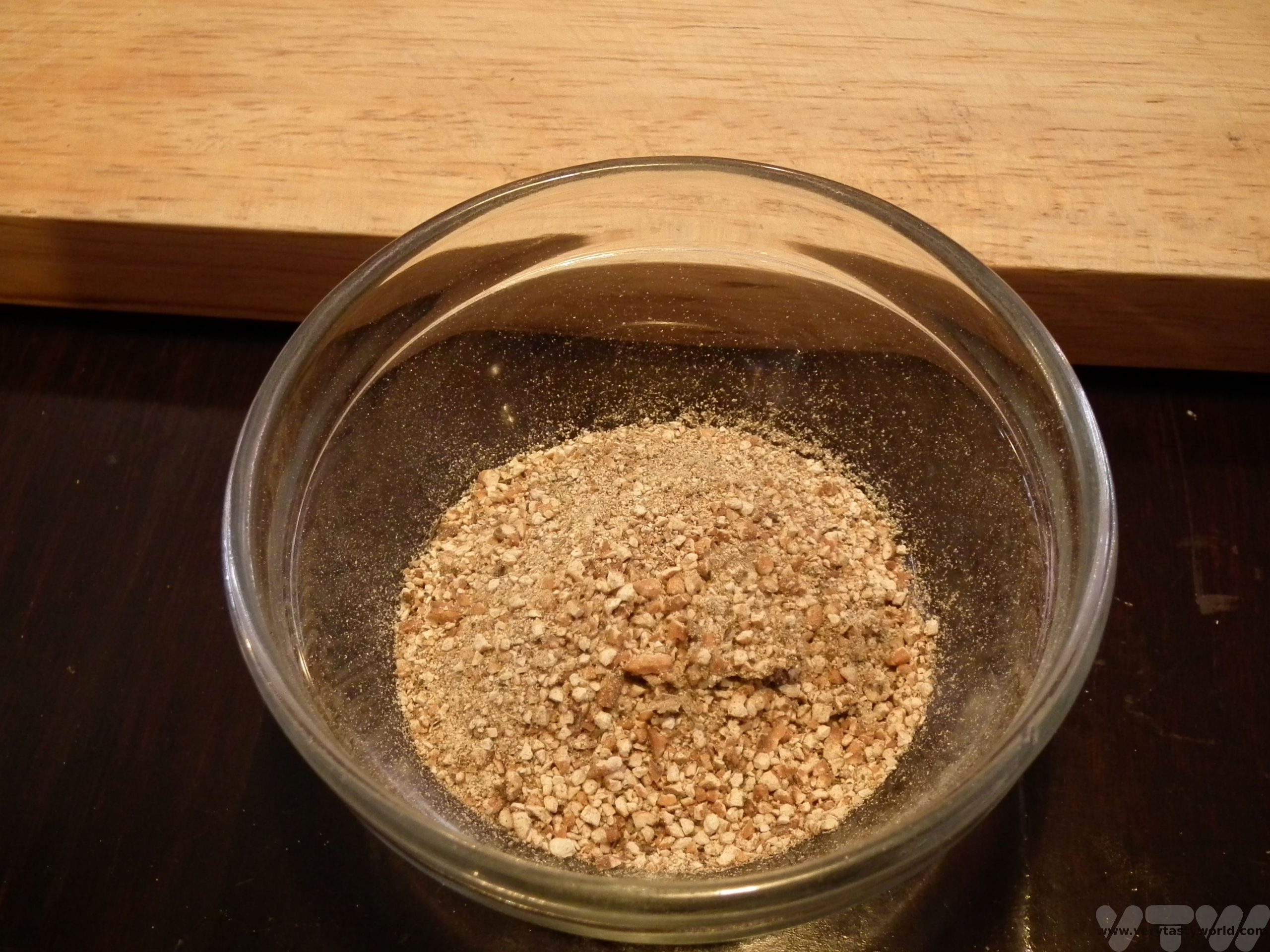
(You can actually toast more rice to make a greater quantity of this powder; it will keep for a couple of months in an airtight container.)

- RECIPE Oyakodon Donburi
- Zero Waste Recipes Before Your Holiday
- RECIPE: Vegetable Biryani Tamil Nadu Style
- RECIPE: Vegan Wild Garlic Pesto
- Recipe: Venetian Pasta Sauce
- RECIPE: Biryani Raita Recipe
- RECIPE: How to Make Costa Rica’s Gallo Pinto
- Recipe: Japanese Simmered Pork Belly – Buta no Kakuni
- RECIPE: How to Make Umeboshi
Noodle Reviews: Myojo Noodles
Myojo instant ramen from Thailand. But are they the real Myojo? In this technologically altered age of AI generated prose please be clear that AI has not been used within any of these reviews. But in Myojo’s distinct range there may be some AN. Artificial Noodles, that is. Not, we hasten to add, noodles that are not genuine noodles created in a virtual noodality environment. These are noodles who declare the distinct artificial nature of their flavour when it is deemed appropriate. Similarly any doubts as to the ethnicity of the flavours can be identified where appropriate so the pork here is declared to be derived not only not from a pig but a Chinese pig.
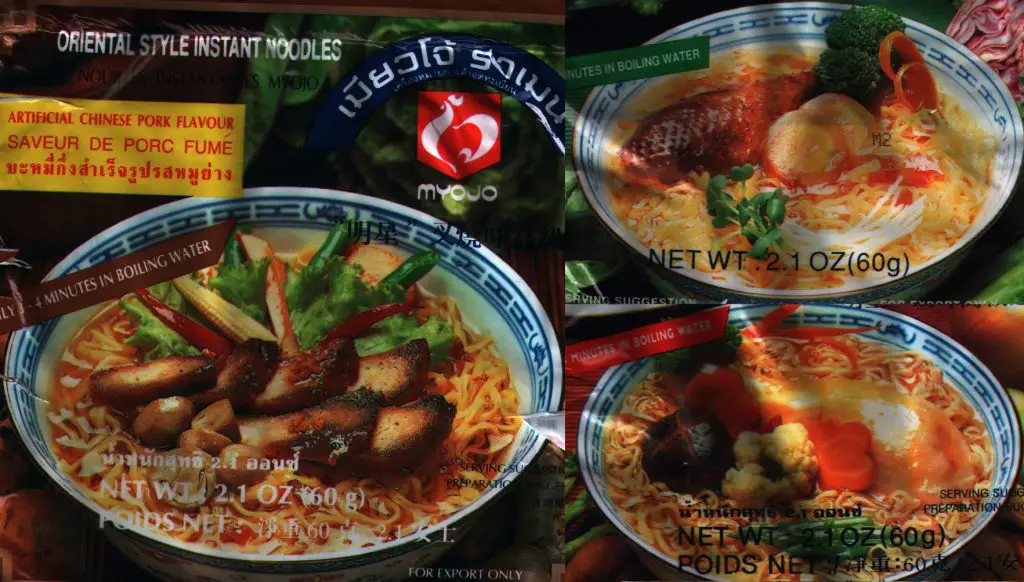
Myojo Noodles Artificial Chicken
BRAND: Myojo
FLAVOUR: Artificial Chicken
No. OF SACHETS: Three – Soup base, flavour oil and something unidentifiable (probably chilli crystals)
WEIGHT: 60g
COUNTRY: Thailand
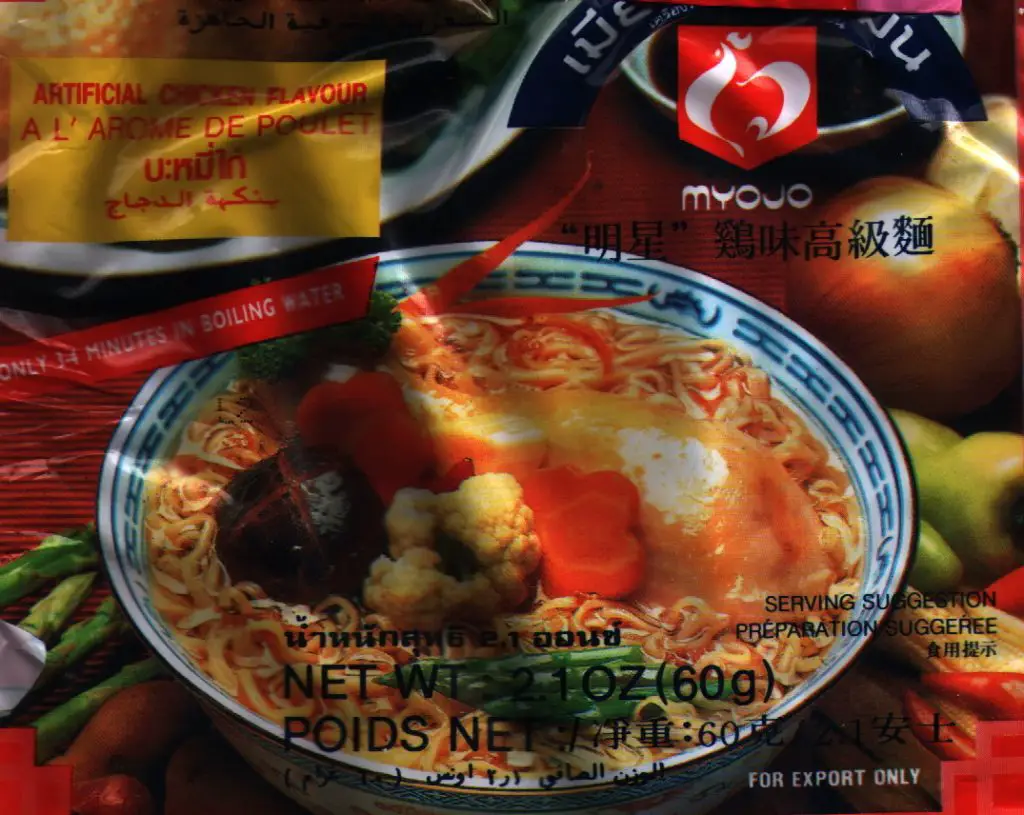
What, you may well ask, does an artificial chicken taste like? In the topsy-turvy world of nouilles instantanes any question is valid, I mean we’ve had vegetable noodles with half a farmyard in them so why not a chicken one that’s vegan? Myojo’s artificial chicken noodles are a real enigma, the noodles themselves look flat, cook flat but eat like normal noodles.
The chilli package may or may not be chilli, you can’t tell. And there’s no chicken either. Even the cover shot has an unidentifiable thing on it that looks like a burnt hot cross bun. So what does artificial chicken taste like? Bloody hot, that’s what. No expense spared on the heat here, chilli, garlic, ginger, black pepper all pumped to eleven on the hot-o-meter to such an extent that any chicken, artificial or otherwise, wouldn’t stand a chance.
Eat as a wake-me-up but don’t expect to use your taste buds for a few days afterwards.
Myojo Noodles Artificial Duck
BRAND: Myojo
FLAVOUR: Artificial Duck
No. OF SACHETS: Three – Soupbase, flavour oil and chilli crystals
WEIGHT: 60g
COUNTRY: Thailand
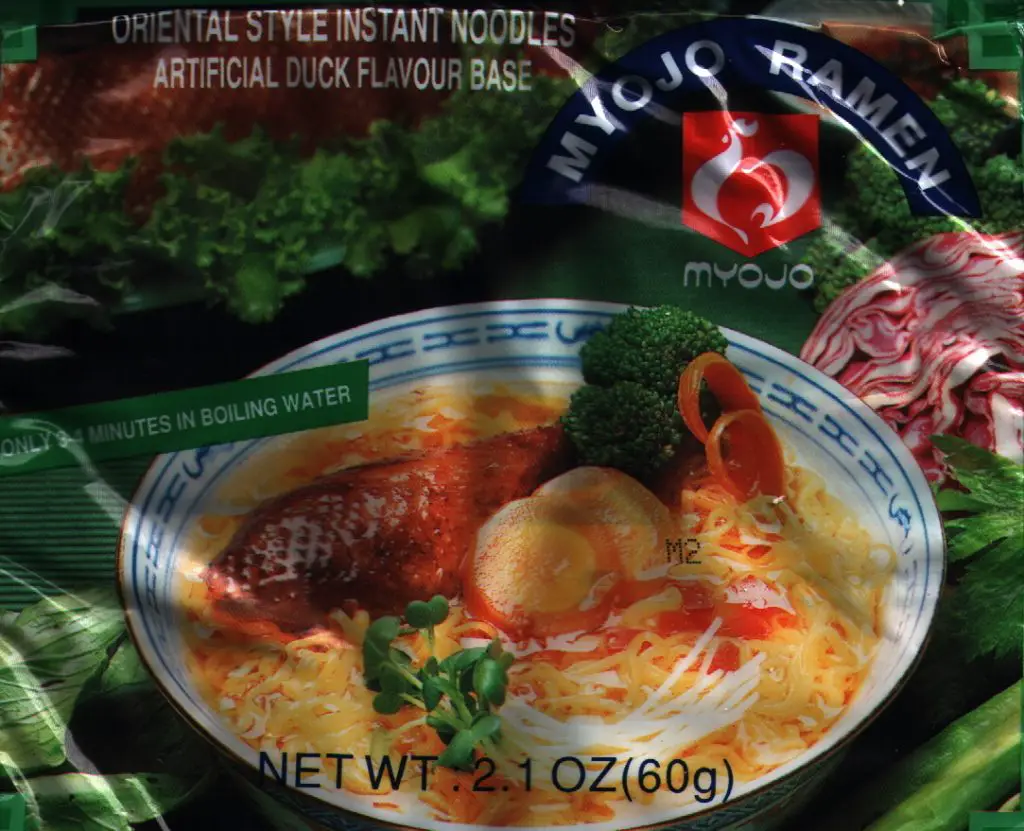
Straight from Bangkok comes these rather speckled and confused noodle hybrids wrapped in the most unfashionable green ever to deck a packet. Actually, make that the second most unfashionable green because the soupbase sachet is a sight to behold. Ease of cooking is not a strong point here, the noodles seem reluctant to part company, like Hansel and Gretel huddling in the woods, and they need a lot of boiling water to make them tender enough to eat. The cover shot, tempting though it is, has a really tasty looking piece of duck breast on it as a ‘Serving Suggestion’, begging the question, “Why make artificial duck noodles if you are going to put a piece of real duck on the top of them?”
The aroma is hard to pin down, there’s a touch of cloves or cinnamon in there – Christmas noodles! The taste is pepper and chilli hot, and yes it is definitely cinnamon, a genuine perk-me-up that makes an ideal mid-morning snack. Not entirely convinced about the noodles themselves though. They are not really good enough to warrant the extra cooking time but are passable.
Myojo Noodles Artificial Chinese Pork
BRAND: Myojo
FLAVOUR: Artificial Chinese Pork
No. OF SACHETS: Three – Soupbase, flavour oil and chilli crystals
WEIGHT: 60g
COUNTRY: Thailand
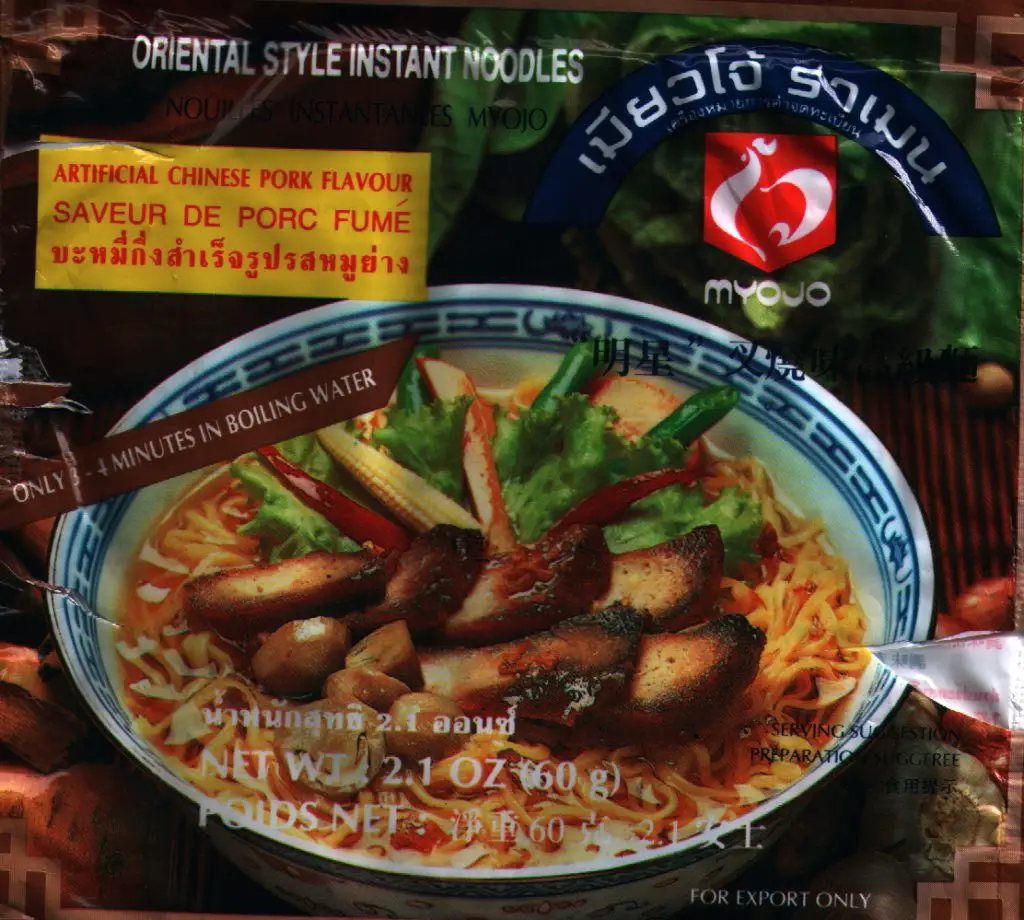
Myojo do themselves no favours by highlighting their flavours as artificial, most firms strongly avoid using this description. And their bizarre form of noodles does not inspire confidence either. However once these barriers are overcome, and you’ve figured out how to handle the noodles (not for beginners these ones), you can’t help but be impressed by the Myojo Artificial Chinese Pork. This particular packet had the additional burden of having the soup sachets welded to the inside of the packet, making for difficult retrieval and almost resulting in a lack of an illustration for this review – it was extremely difficult not to tear the packaging.
But the struggle was worth it, this is a wonderful, full bodied affair with a warming heat of chilli and pepper and a general hearty feel that belies its 60g weight. Savour the flavour, enjoy the texture (they are firm but even), relish in the wrapper’s country wholesomeness.
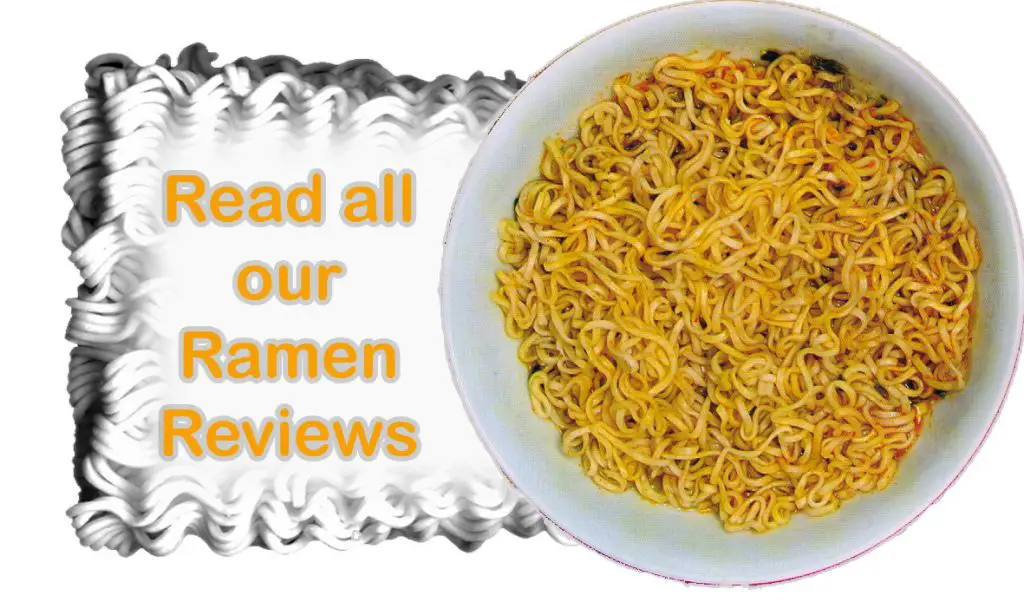
How To Make Coconut Milk From Coconut
Rabbits in Thailand
Coconut is one of the fundamental ingredients in Thai cookery. Coconut milk adds a luscious silkiness to curries and can also be used as a base ingredient in desserts; the flesh can be used in sweets and salads and the juice from a green coconut can be drunk straight from the pod for a really refreshing thirst-quencher. There is a difference between coconut cream and coconut milk.
At the Bai Pai Cookery School in Bangkok we learned how to extract coconut cream and coconut milk from an mature coconut, you know, the sort you get at coconut shies. This isn’t the same as the water you get from a green coconut (which is utterly delicious and wonderful to drink on a hot, humid day) but the liquid is extracted from the freshly grated flesh of an ordinary coconut.
After splitting the coconut in half (with a machete or something equally sharp and brutal) you need to use what’s known as a ‘rabbit’ to obtain the white flesh. The rabbit is a serrated grater often located on the end of a wooden bench (sometimes it’s even a cute rabbit shape!) which is used to shave the inside of the coconut to produce wisps of flesh.
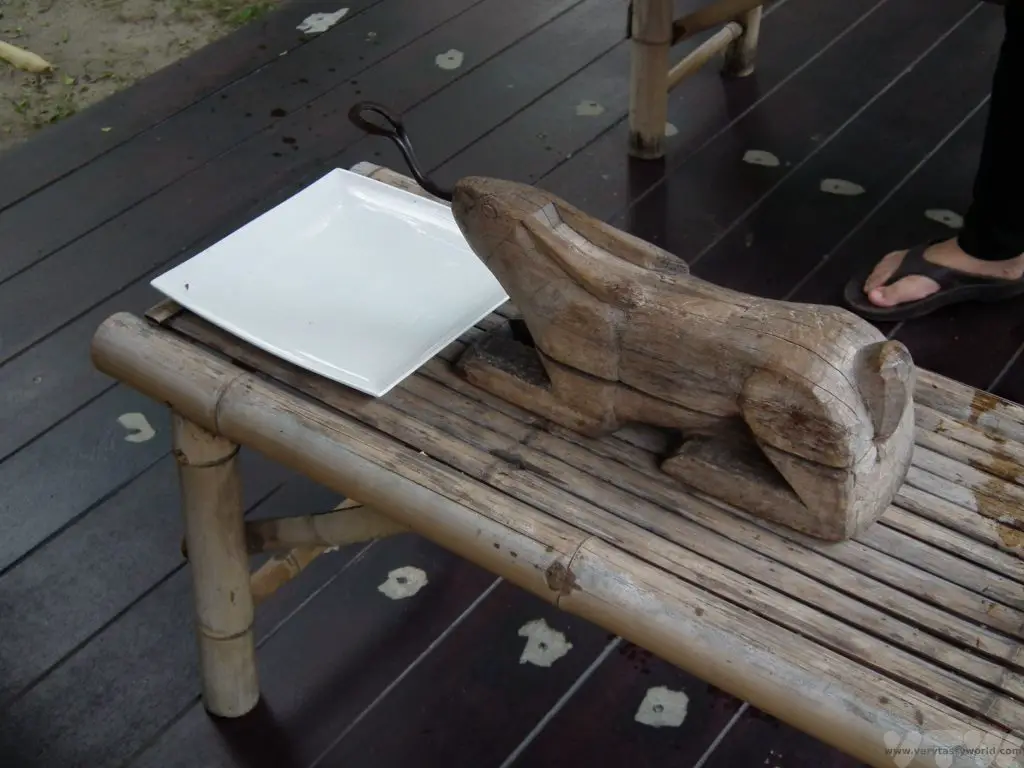
There’s definitely a technique to using the rabbit. You sit on the bench and use a reciprocal back and forward motion to shave away the coconut flesh. You need to make sure that the brown, hard shell of the coconut protects your hands as you really don’t want your fingers to come into contact with the sharp grater. Also, blood does have a tendency to turn the pure white coconut cream a startling shade of pink and you really don’t want that.
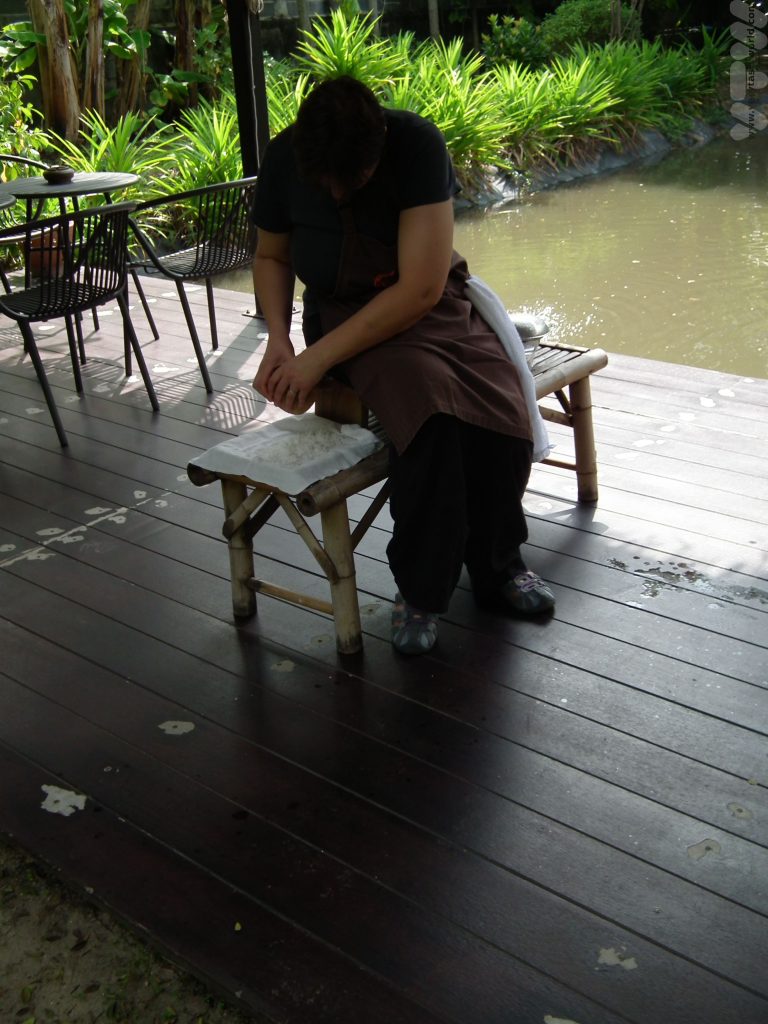
How To Make Coconut Milk and Coconut Cream
Once you have a lovely pile of freshly grated coconut it gets put in a bowl and water is added. The shavings are mixed with the water, rubbing them together. Then they are sieved through muslin. A squeeze will release the coconut cream – this is the first press and it is rich, silky and smooth.
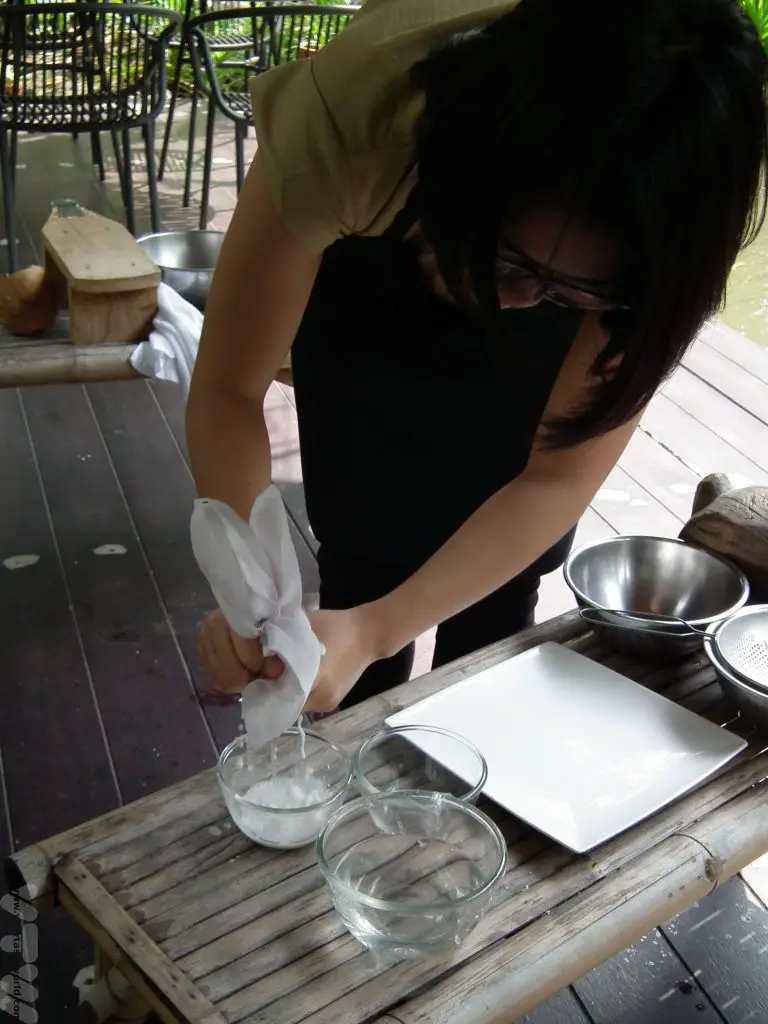
Adding a further amount of water with another mix and squeeze releases a more dilute liquid – this is the second press which produces the coconut milk.
Coconuts are quite easy to find in the UK, rabbits less so. Knives are not recommended for grating coconut, you really need an implement that will extract – and shred – the flesh safely from the inside of a hemisphere without shredding your hands. It’s probably safer to buy coconut milk in tins. If you want milk, shake the tin. If you want cream you may well find that – on opening – it has solidified and a rich, luscious blob will simply plop out of the tin.
Coconut milk is a fundamental ingredient in Thailand’s famous curries. Kaeng khiao wan is a sweet green curry (you can find our recipe here), kaeng phet is a hot red curry. Both are easy to make (recipes another time). Another, less well known, dish that uses both coconut milk and coconut cream is tom kah gai – chicken and galangal in a coconut milk soup. Galangal is similar to ginger in that it is a rhizome – but they are quite different, notably in the textures and flavours. Ginger is lively, sweet and warming. Galangal is sharper with citrusy overtones. Whereas you can easily grate ginger and incorporate it into dishes, galangal is more woody. As a result it’s difficult to substitute one for the other. Where we live, ginger is easy to buy, but we have to search for galangal.
Tom kah gai is a subtle dish. Chicken pieces are cooked in a coconut milk soup that is infused with galangal, lemongrass and kafir lime leaves. Then coconut cream is added to provide a richness to the soup. Finally, as with many Thai dishes, sweet, sour, salt and heat flavourings in the form of sugar, lime juice, fish sauce and chilli are added – at the last moment,just before serving. This ensures that the flavourings are at their freshest; lime, particularly, can taste bitter if cooked for too long. The result is a wonderful, warming, creamy soup which has a touch of spice and zing.
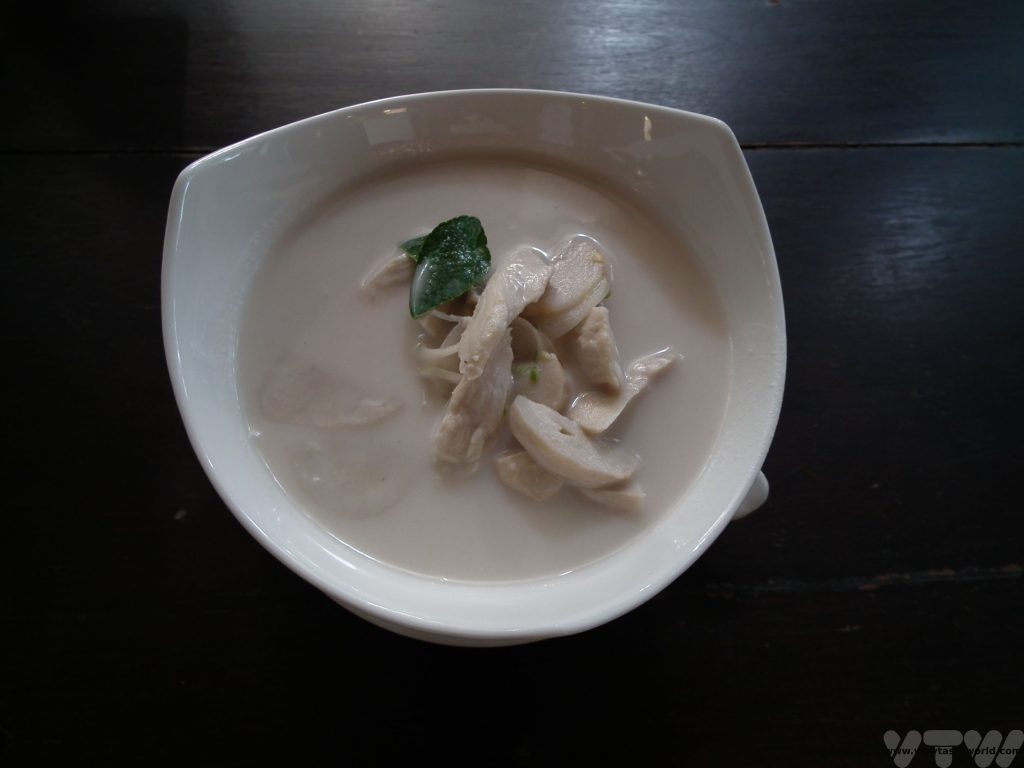
Related Posts You May Enjoy

